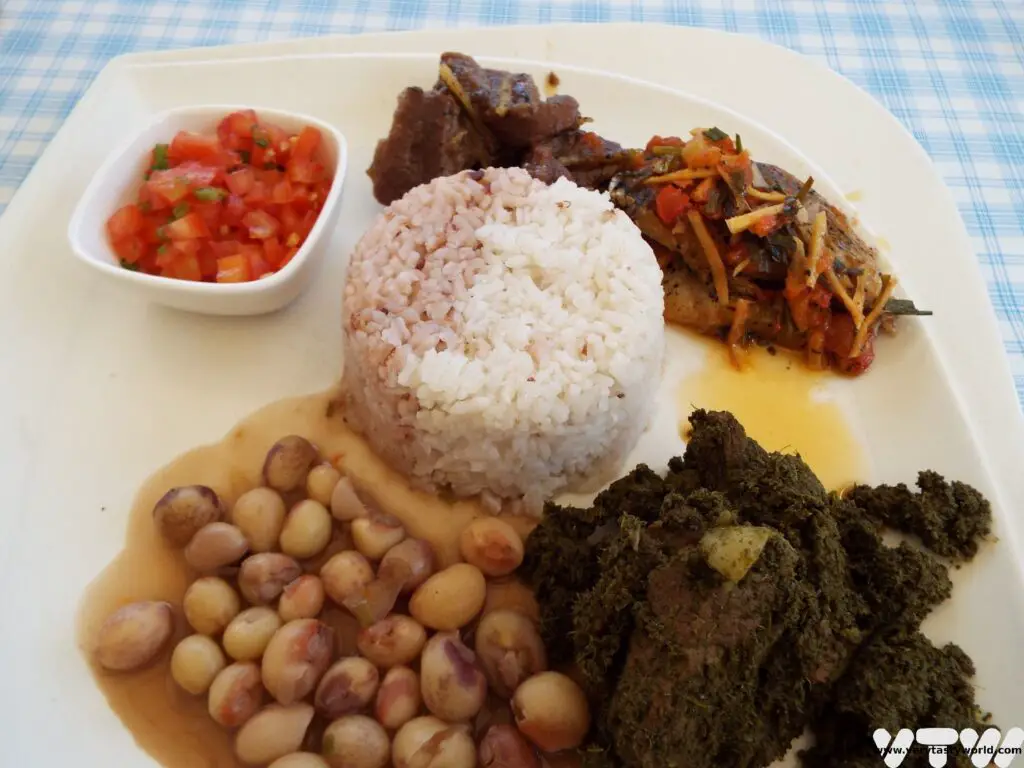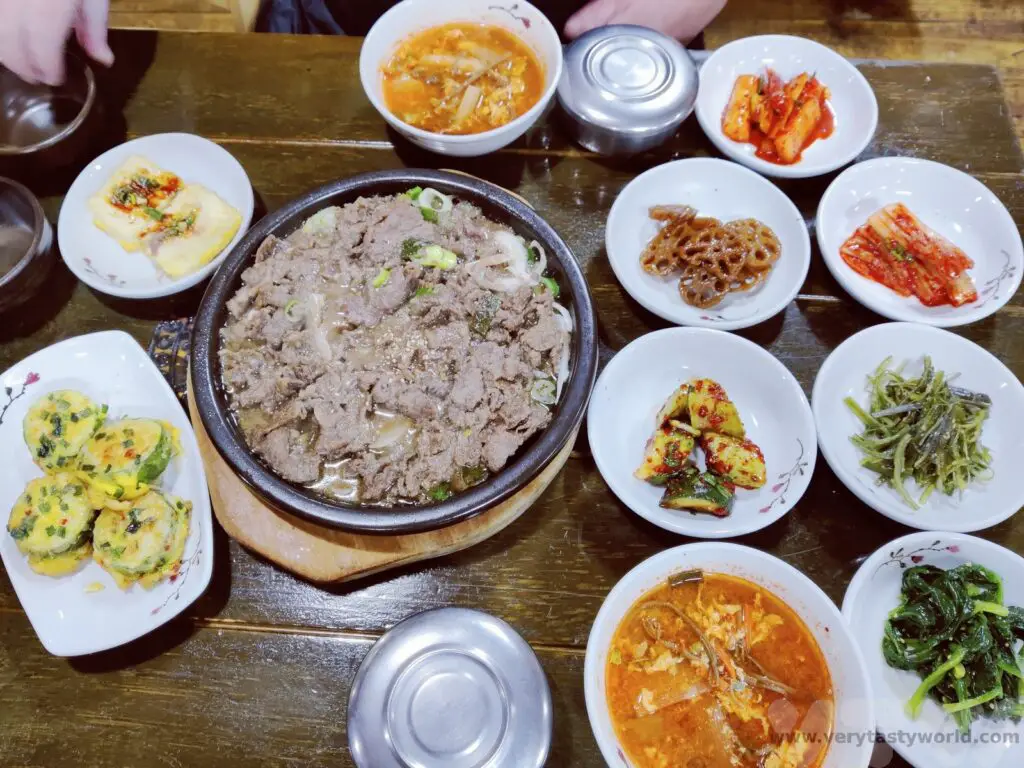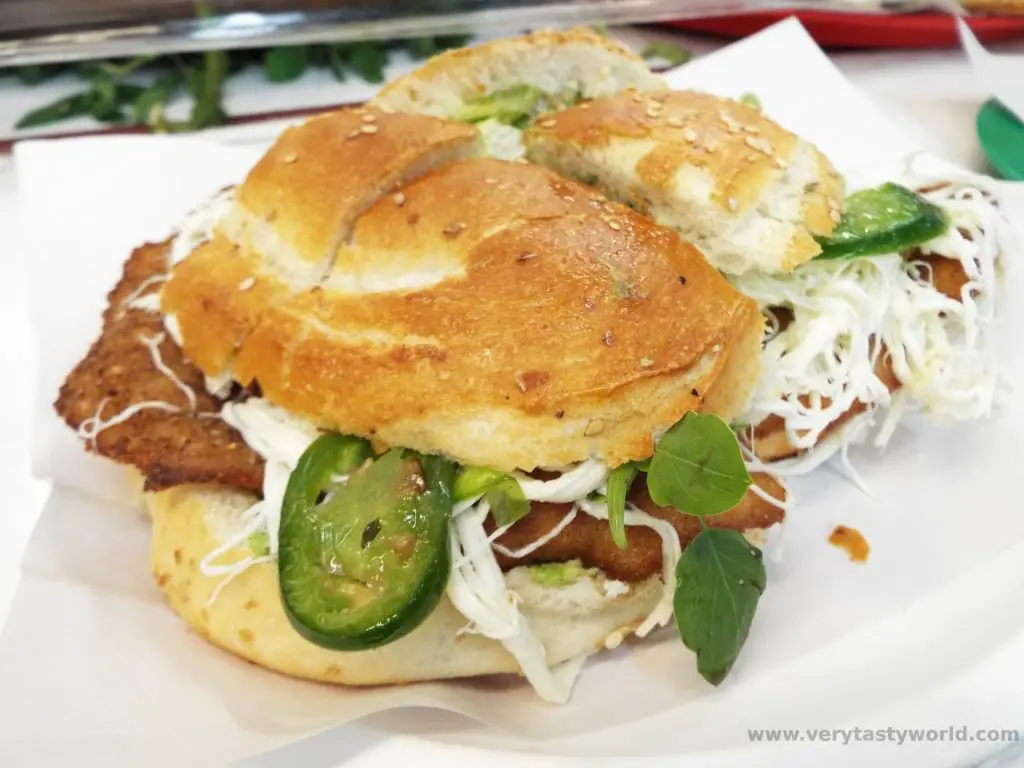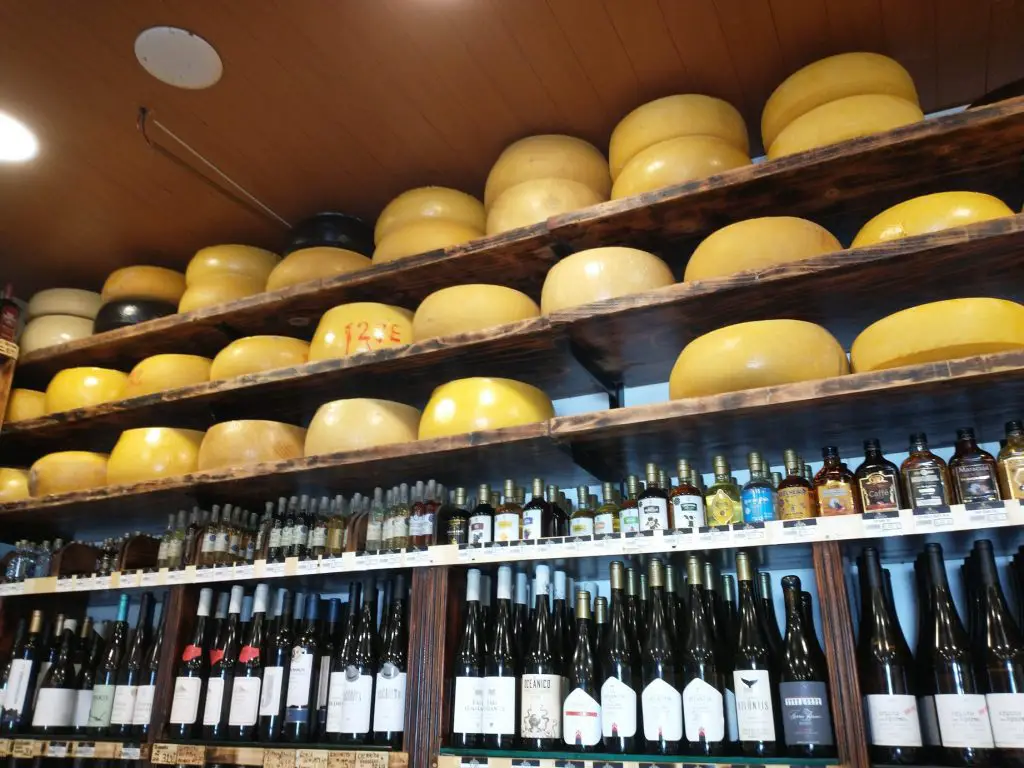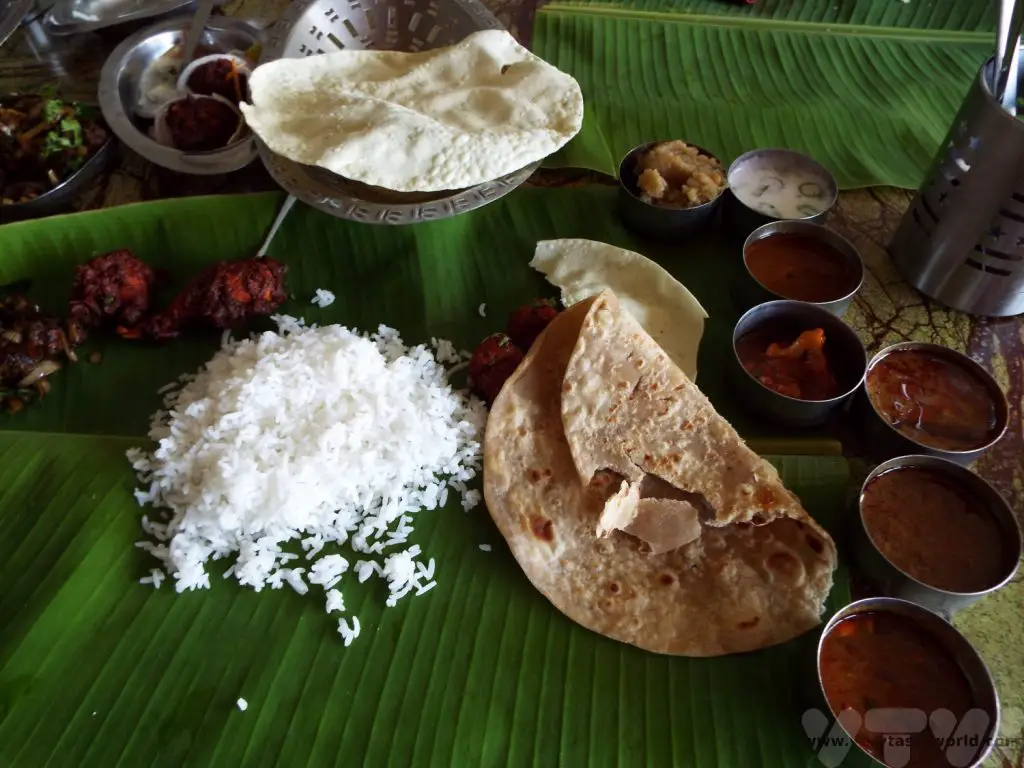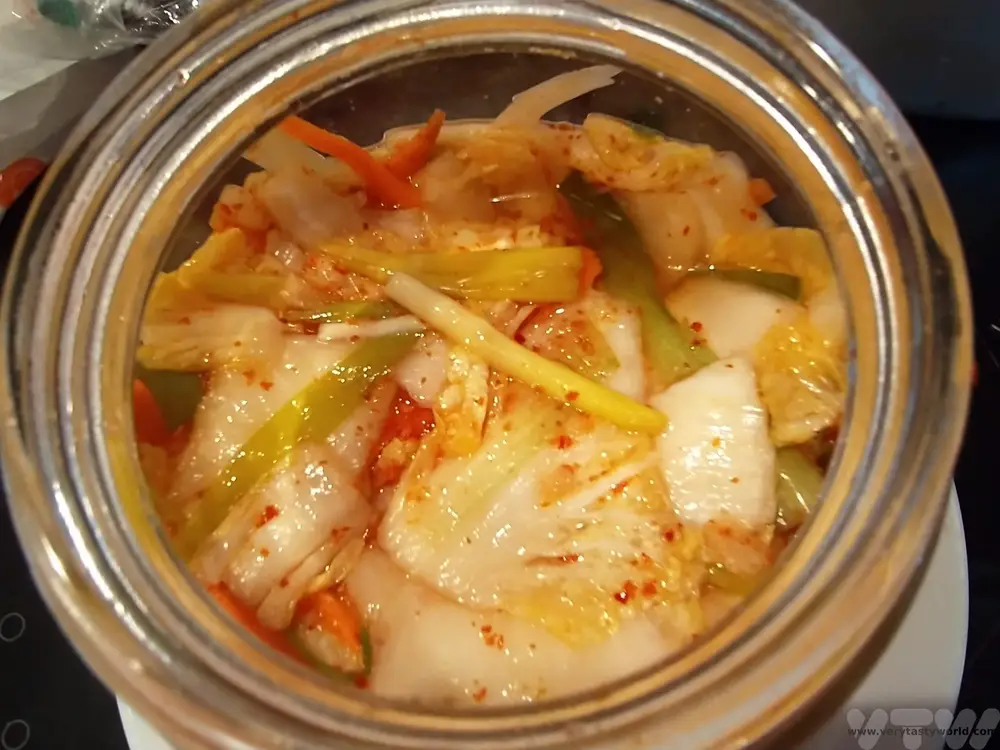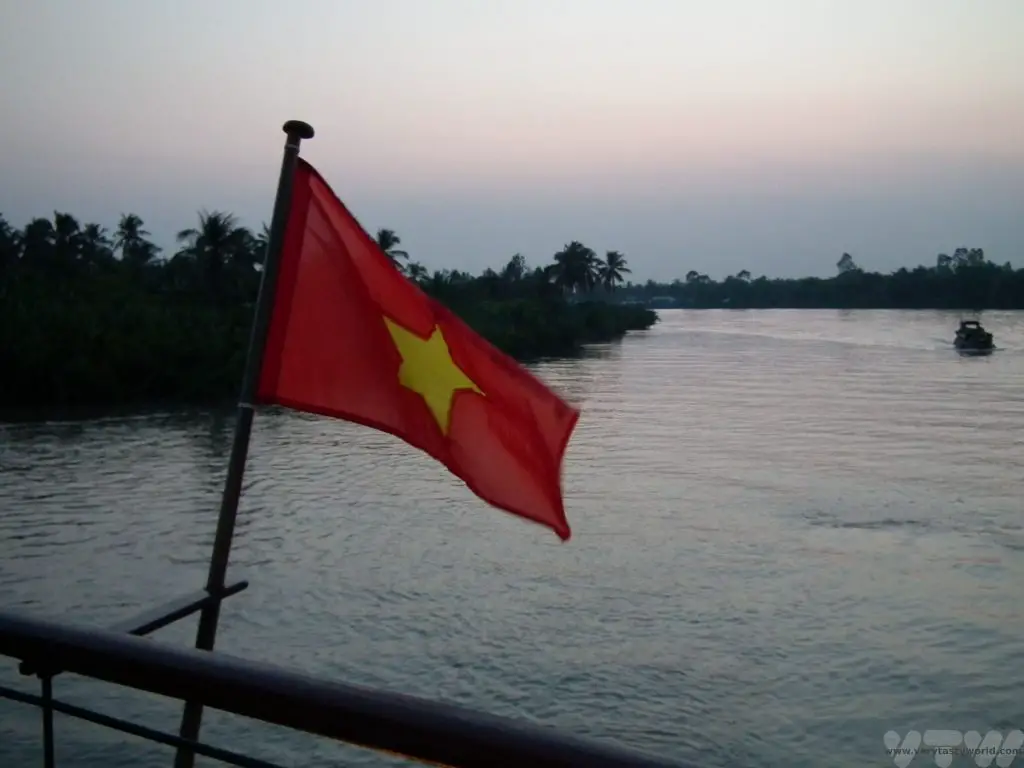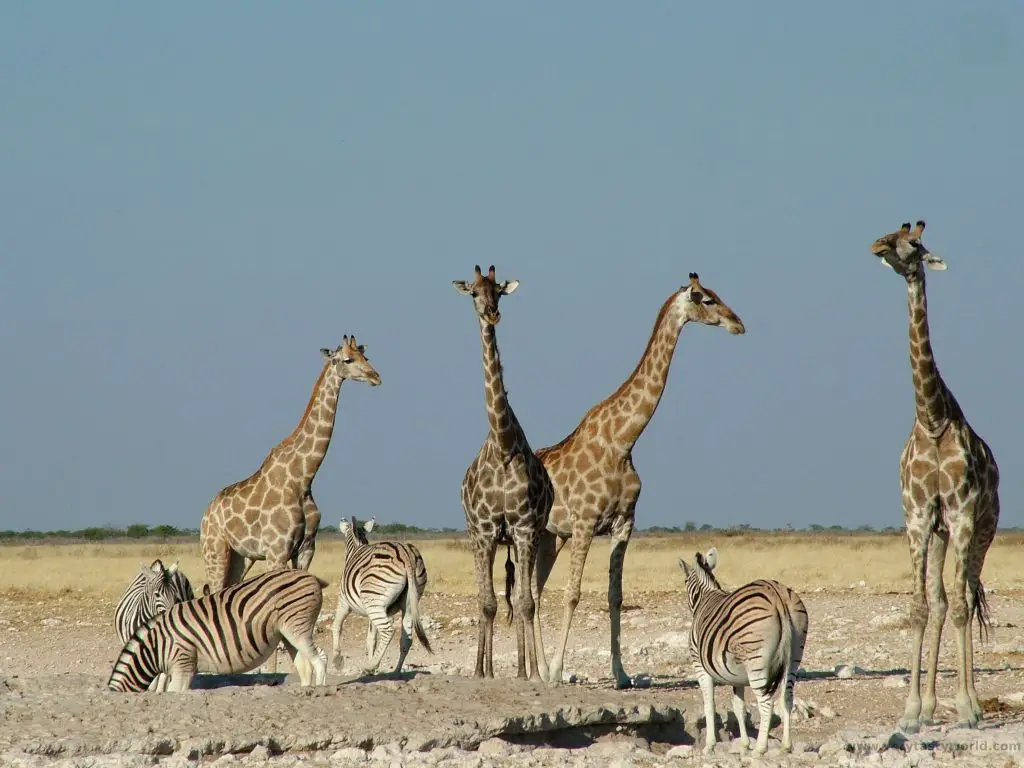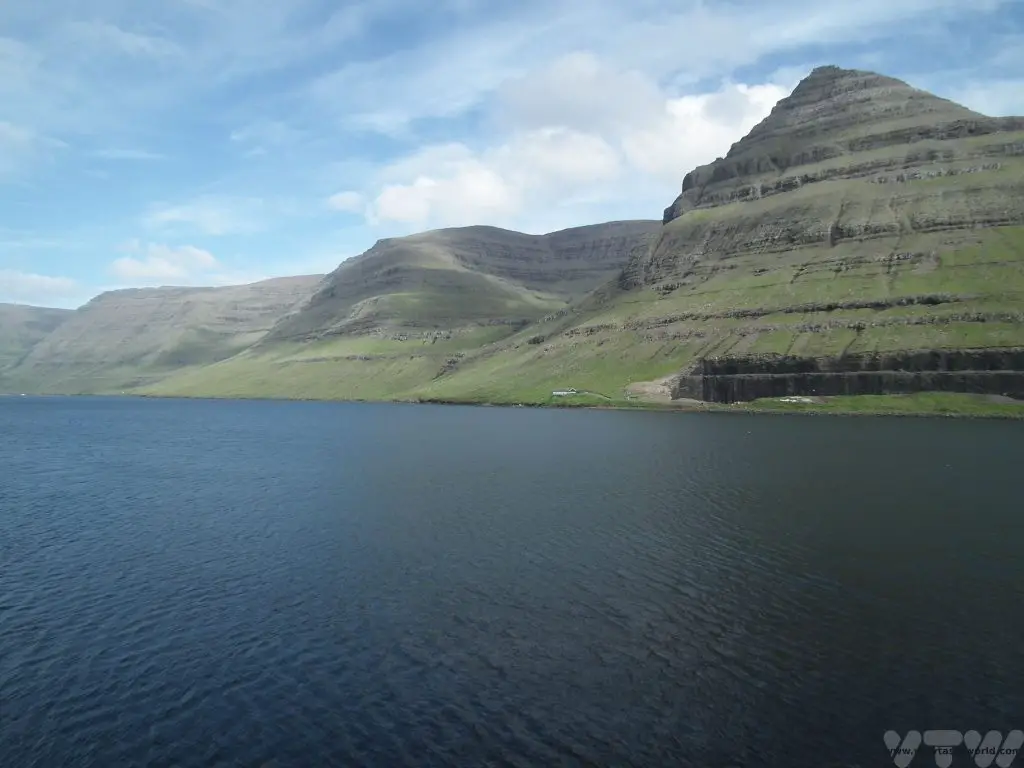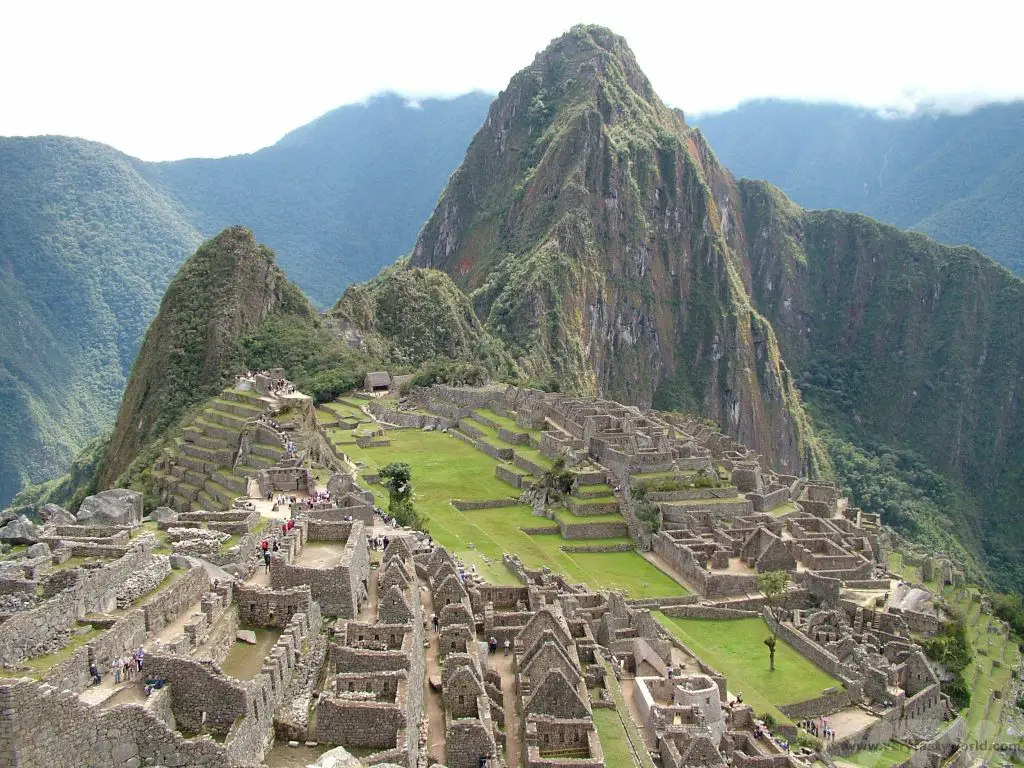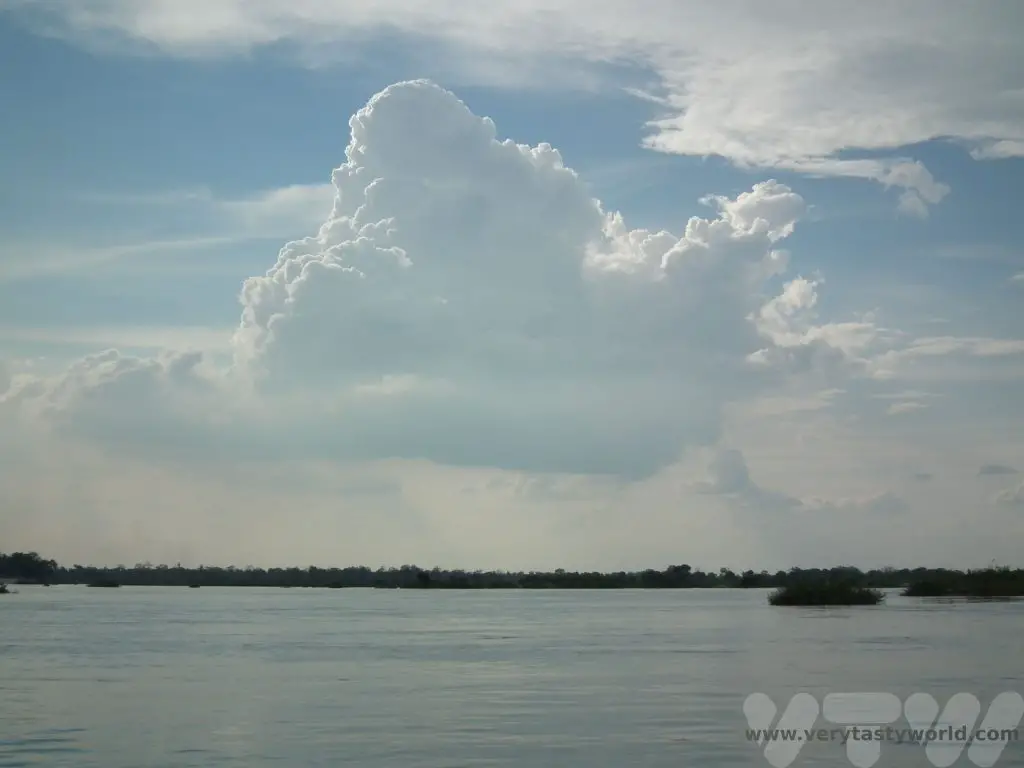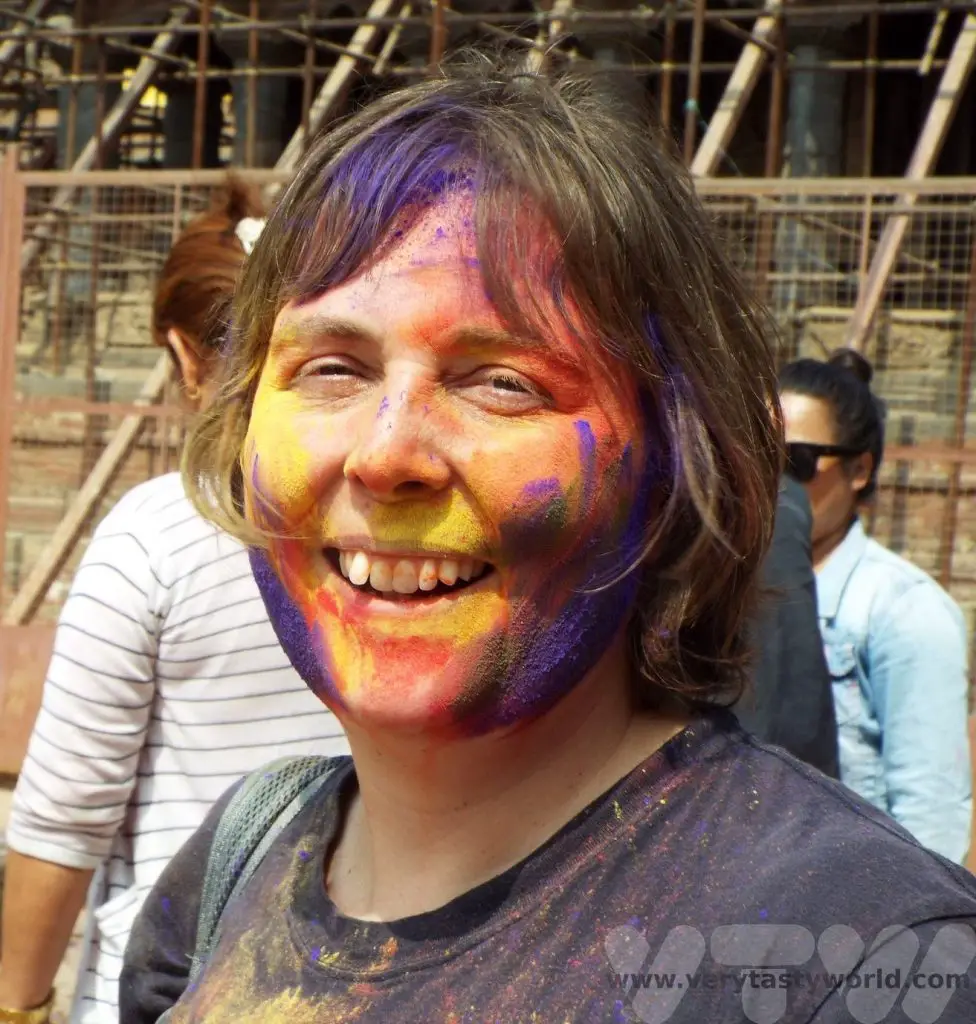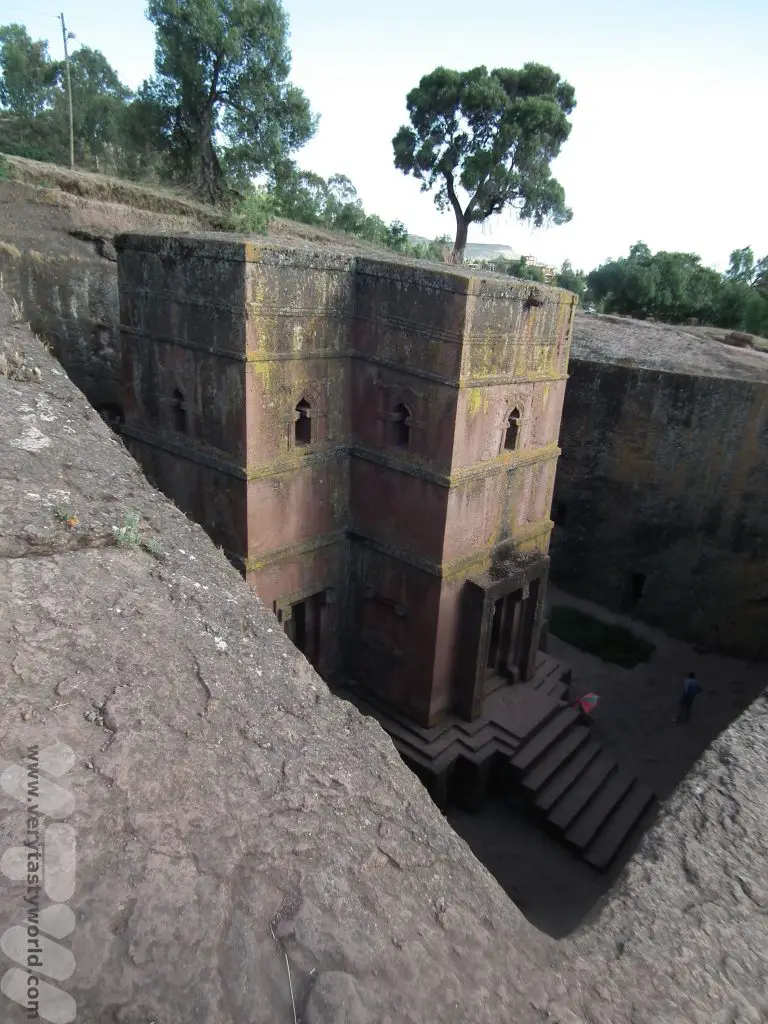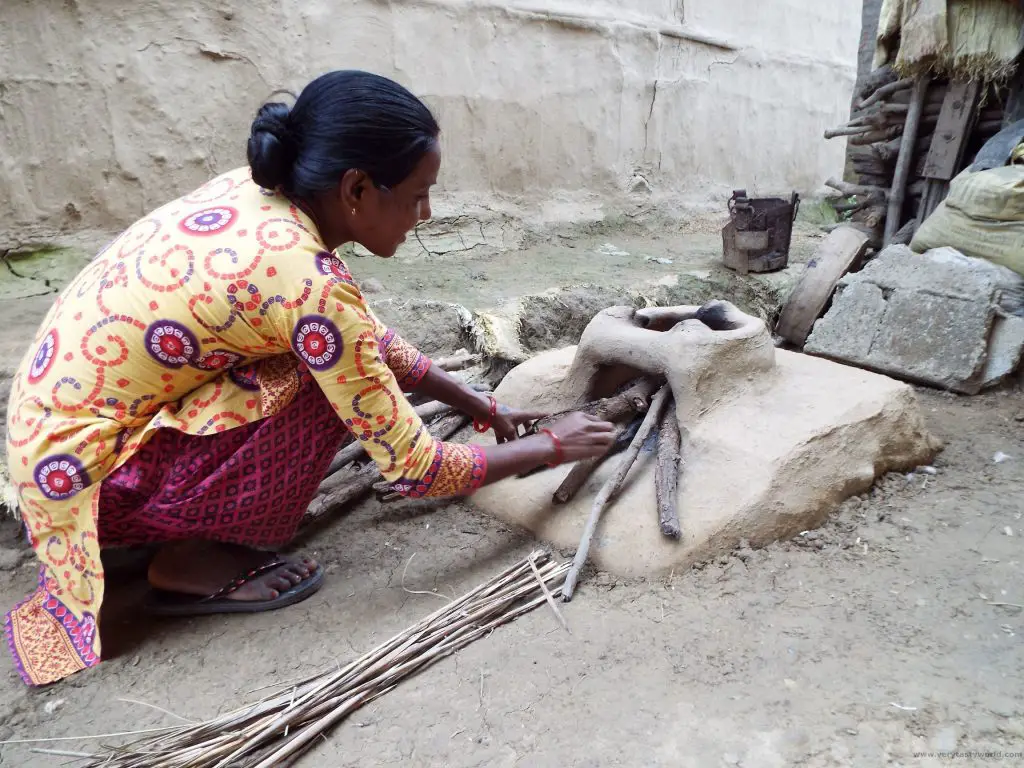World’s Best Breakfasts -Breakfast of Champions!
Some years ago we were excitedly choosing all sorts of delicacies at the breakfast buffet at our hotel in Yerevan, Armenia, when another guest glanced at our plates, shrivelled their noses very patronisingly and bellowed, “Ugh! Salad? For breakfast?” It’s widely considered to be the most important meal of the day but so many people seem to be set in their ways when it comes to eating a hearty breakfast. And many hotels seem to cook the same type of food for their guests: Western visitors are often offered bacon, sausage and eggs with breads and pastries, and Eastern visitors can usually select rice or noodle dishes. All these foods are familiar to the tourist but they often don’t reflect the traditional breakfasts of the country they are visiting. Here are some of the world’s best breakfasts.
Maybe people don’t feel so adventurous first thing in the morning, and that’s fair enough, but the thing is, we’re British and can have bacon and eggs any time we like. (Although, to be honest, we haven’t cooked a fry-up for years as it’s quite a lot of effort.) We’d much rather eat a typical breakfast from the country that we are visiting, especially if they are using local ingredients.
An Abundance of Diverse Dishes
Some countries have a typical breakfast that is simple, others have a variety of foods that make up the morning meal.
Japan
Japan is well known for its fabulous cuisine and also offers one of the world’s best breakfasts. A Japanese brekkie often comprises grilled fish, vegetables and pickles, maybe with tofu, dumpling and an omelette.

These are accompanied with a bowl of rice, into which you could crack a raw egg mixed with shoyu (soy sauce) – the egg sort of cooks in the heat of the rice – or that famous smelly fermented soybean concoction, natto, maybe with some sliced negi (similar to spring onion). Just grab a slice of nori (dried seaweed), place it over the rice, then using a pincer movement with your chopsticks grab a portion of rice with the nori. Scrumptious. (It’s worth noting that if you are at a breakfast buffet in Japan the eggs on offer may well be raw – be careful when cracking them.)

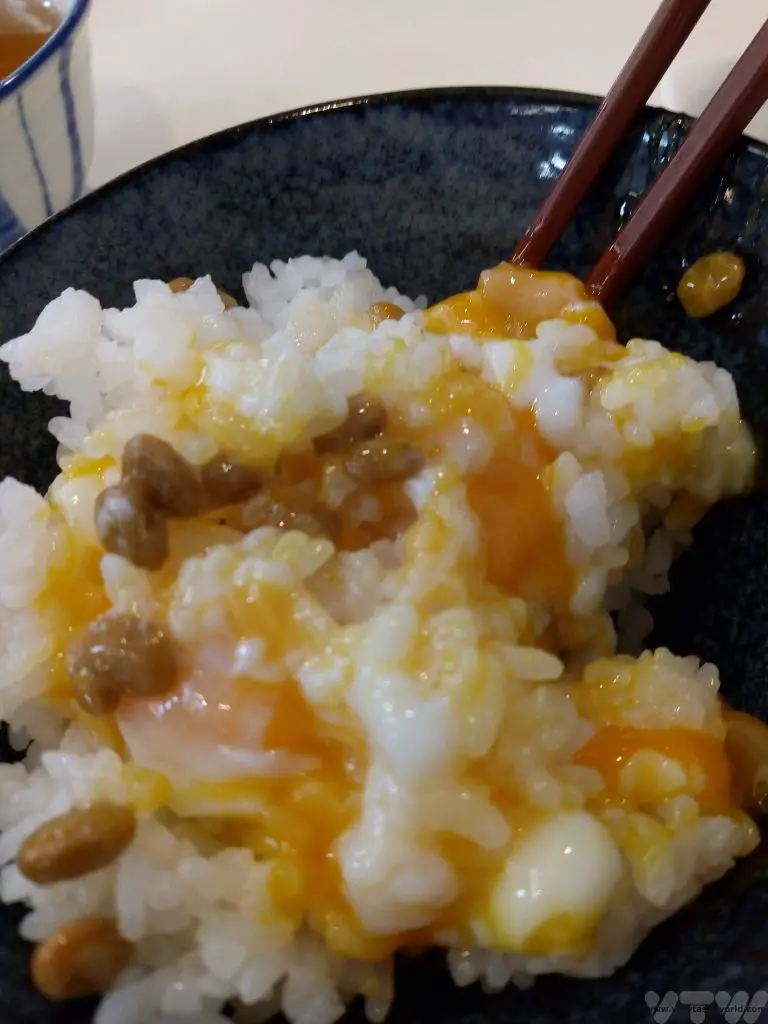
India
A dosa for breakfast in South India is an absolute joy. This is a pancake traditionally made from rice and dal (lentils) which are ground to form a batter and then fermented. The batter is cooked on a hot plate to form a large pancake and served with chutney – coriander, coconut and tomato are particularly popular.

In Kerala, this breakfast comprised vada, which is a doughnut made from fermented pulses and a puffy bread puri served with sambar, a delicious stew made from lentils, vegetables and spices. Multiple chutneys feature as well to provide a variety of flavours that soak into the vada and puri.

It’s Often Okay to Go Off-Menu
It’s quite common for hotels to ask their guests to pre-order breakfast. It makes sense: the hotel staff know what to order in beforehand and this can help minimise food waste. There is usually a form with tick boxes and you can choose from a variety of typical breakfast offerings. But if you do want to eat like a local, we’ve learned that many hotel restaurants are really happy to cook you a regional breakfast.
Uganda
It all started in Uganda when we breakfasted at a lodge with a local guide. We were eating standard fare but our curiosity was piqued when something entirely different was brought out for him. On asking, we learned that it was a rolex – a chapati with a layer of omelette on top, then rolled into a spiral cylinder, perfect for munching on. So the next day we asked the lodge staff if it would be possible for us to have a rolex for brekkie and they were happy to oblige. It’s great – tasty and filling – a good start to the day.

Nepal
In Nepal we were given a standard pre-order form to complete (eggs, bacon, sausage, toast…) to pre-order breakfast for the following morning. We politely asked whether it was possible to have a local breakfast instead. We didn’t specify any dish – just asked for local food. They were delighted. The following morning we were served a marsala omelette accompanied by a joyous curry and roti with home-made yoghurt. It was delicious.

Madagascar
Madagascar is famous for its amazing landscapes and unique flora and fauna and isn’t really known at all for its cuisine. But its breakfasts are great – really hearty and filling. If you want to try a local breakfast, it is best to request it the night before because it takes some time to cook. Rice is the staple in Madagascar, so a typical breakfast includes vary sosoa, or rice porridge. Sometimes it is served with zebu (a kind of cattle) steak for a very rich and decadent breakfast.
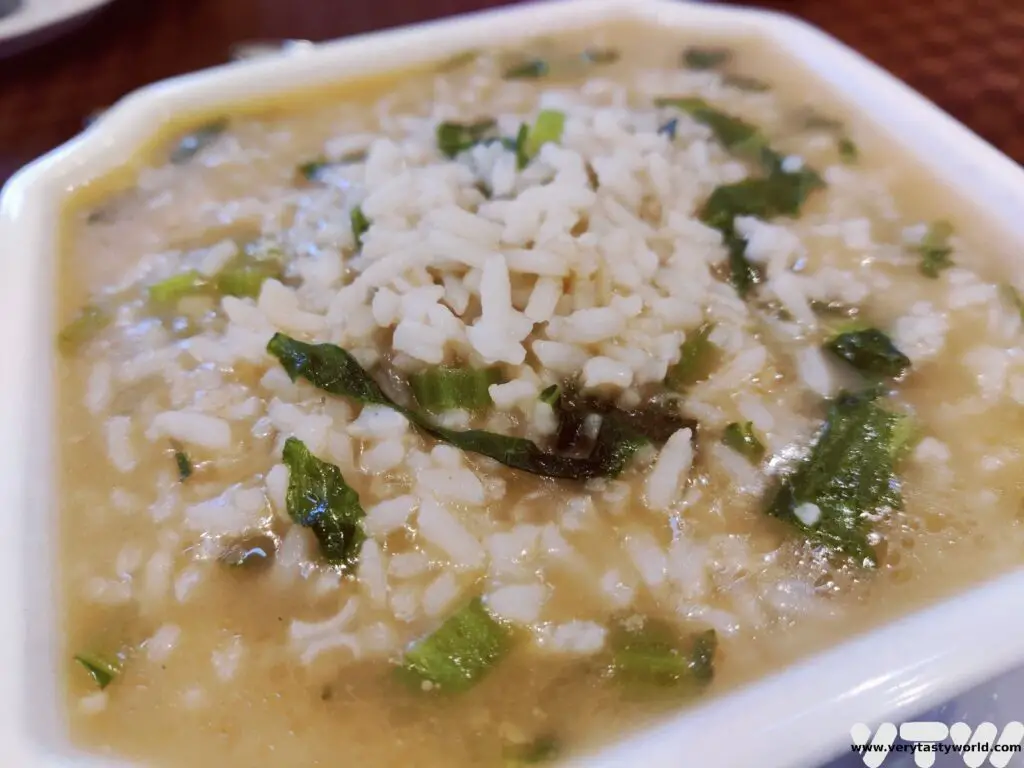
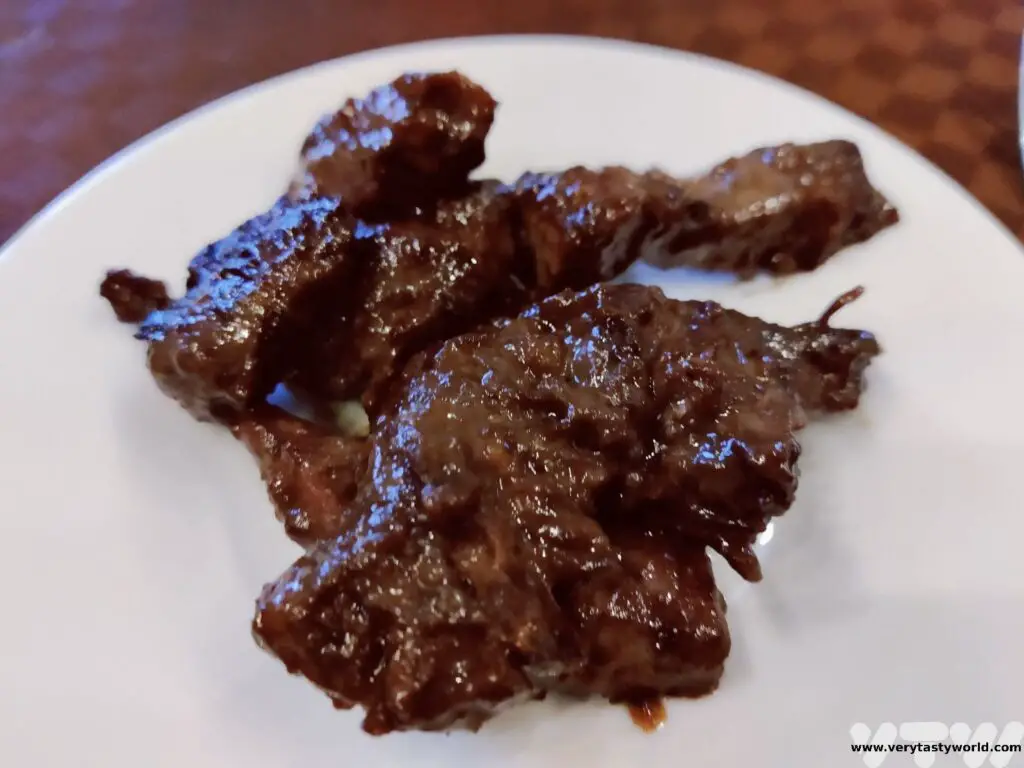
Mofo baoline are fried doughballs. They are very fluffy and filling and will really set you up for the day.
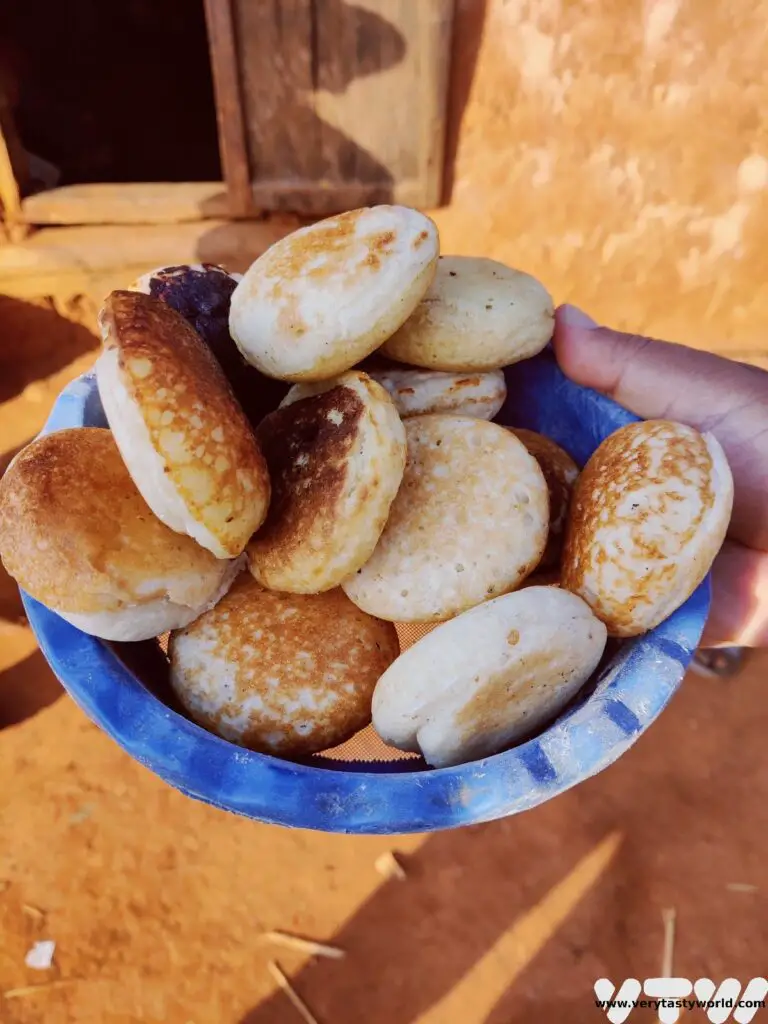
Breakfast, Lunch, Dinner and Breakfast Again
Many countries offer breakfasts that aren’t necessarily only eaten in the morning. When the food is this good, why restrict the dish to the morning?
Costa Rica
One of the world’s best breakfasts is gallo pinto from Costa Rica. It’s so popular it is often eaten for lunch and dinner as well. Which is just as well because it tastes great and is also really healthy. It comprises rice and beans and is usually accompanied by a fried egg at breakfast. Other accompaniments to start the morning include sausage, fried potatoes and some salad.
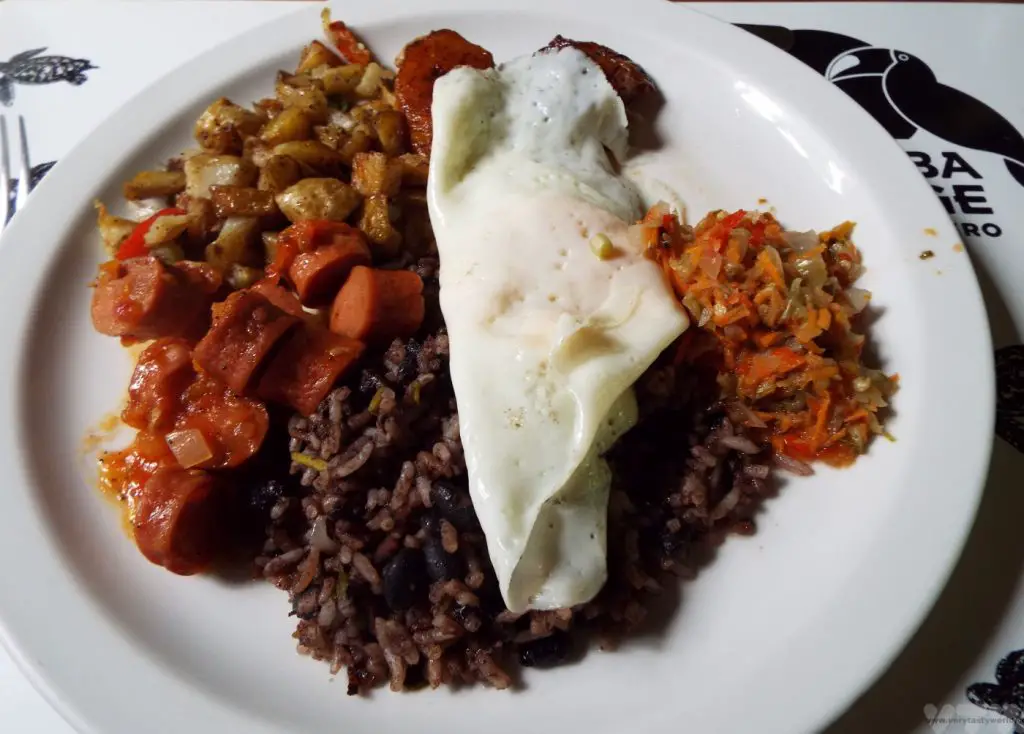
Vietnam
In Vietnam breakfast usually took a buffet form but often there were chefs on-hand to cook some food to order. We were always offered Pho – a tangle of noodles, freshly cooked and served in a yummy broth, topped with meat and vegetables. You pick up a side plate and add herbs, chilli, limes and other delicious items so that you can create your own personalised taste sensation. The liquid of the broth also ensured that we were thoroughly hydrated for the day ahead.
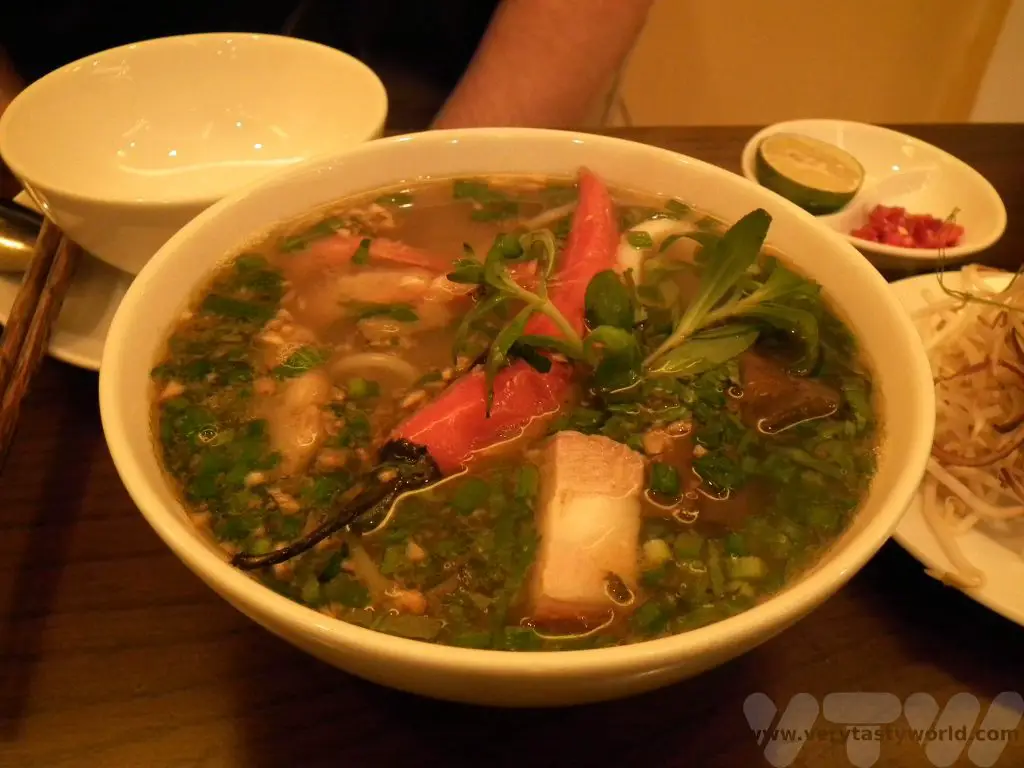
Mexico
We’ve said it before and we’ll say it again: with Mexican cuisine more is always more. There are so many dishes on offer, we didn’t have the same breakfast twice throughout our trip. Tacos with all the trimmings were just as fantastic to eat at breakfast as they were at lunch or dinner (or even for a mid-excursion snack). You can never have too many tacos.

Chuilaquiles are basically tortillas (often leftovers) which form a carb base. Then they are covered in red or green salsa and other ingredients such as shredded chicken, cheese or refried beans.


Tortilla with mole (pronounced molay) makes for a sophisticated breakfast. Mole is famous as the savoury sauce which contains chocolate but it’s so much more than chocolate sauce. It’s actually a very complex sauce, which contains a vast number of ingredients and takes a long time to make. Hotels in Mexico will often provide a sweet, glossy mole but the best ones can be found at the local market.
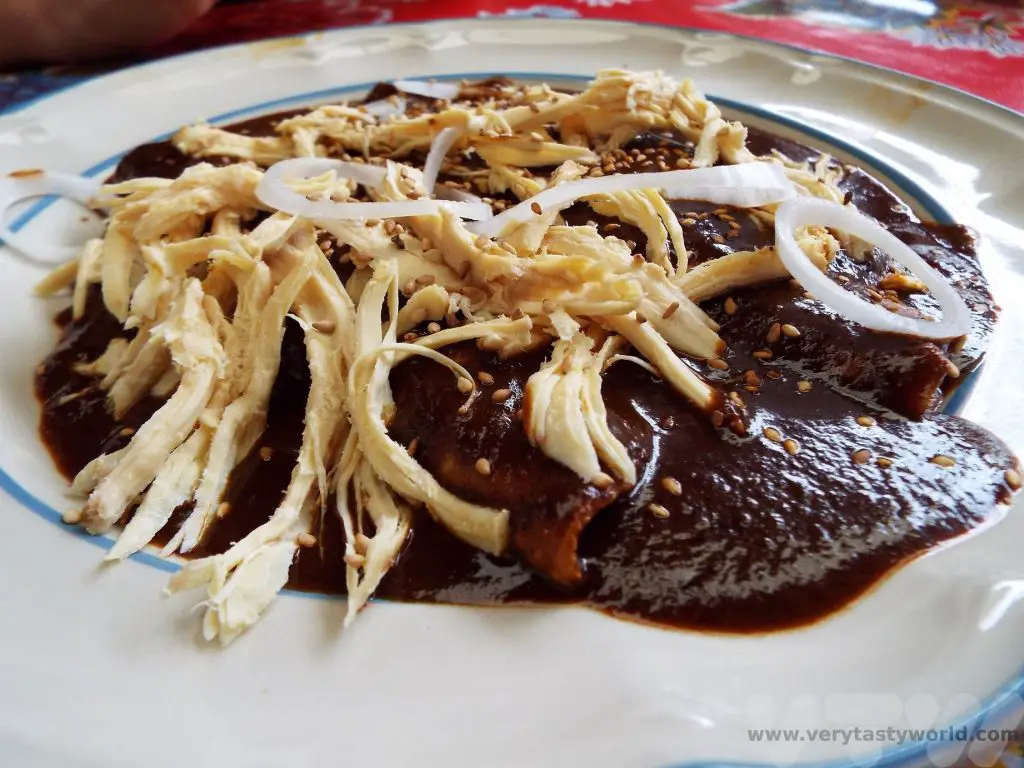
Huevas chiopanecas (below left) are eggs with red sauce and pork tamales (corn dough steamed inside a husk). And huevos coletos (below right) are fried eggs over tortillas with beans and pork sausage, which sounds western enough, until it’s adorned with spicy red sauce.


These dishes are also the sort of food that will be eaten through the day. And quite right too – they are all delicious, so you wouldn’t want to restrict yourself to just the first meal of the day.
South Korea
Like in Mexico, Korean people eat a wide variety of dishes in the morning and many of these aren’t solely for breakfast. Stew, known as jigae, accompanied by rice and side dishes, known as banchan, are popular.


Kimchi also features, as it does with pretty much every Korean meal. It is a spicy fermented cabbage dish and is so popular that most Korean people have two refrigerators – a normal one and a kimchi one. We make our own – you can find our kimchi recipe here.
World’s Best Breakfasts: Minimal Preparation, Maximum Flavour
And there are some brekkies that are surprisingly simple and make full use of great ingredients.
Spain
Andalucia is known as the breadbasket of Spain, and is a region that has more than its fair share of delicious produce. Alongside wonderfully fresh fruits and vegetables, it is the region of Iberico ham, sourced from the black pigs that forage for acorns in the mountains. And in nearby La Mancha, Manchego cheese is a hard cheese made from sheep milk which has a strong, nutty flavour. Sometimes simplicity is the key to a fantastic breakfast.
Pan con tomate is a thick slice of toasted bread, rubbed with olive oil and sometimes garlic, topped with a salsa of crushed ripe tomatoes and just a sprinkling of salt. such a simple dish but it is so delicious. It’s proof that quality ingredients speak for themselves.


Germany
A German breakfast is clever because it really needs minimal preparation in the morning. the perfect way to start the day is to get up and eat.
Key to its deliciousness is the bread. There are over 3000 types of bread in Germany, both breakfast and evening breads. There are so many varieties of tasty Brot (breads) and Brötchen (rolls) for brekkie – white breads, rye breads, whole-grain, wheat-rye and many, many more. There are so many variations, sometimes they are seeded or nutty, all are hearty, filling and a perfect vessel for sweet or savoury delights.
So what can you put on your bread: a variety of meats, cheeses and smoked fish or, if you have a sweet tooth, jams and honey. Honeycomb, dripping with sweetness, slathered over a slice of buttered bread, is a thing of joy. And how can you not love the fact that every September 25 Germans celebrate Butterbrot Day – a day of bread and butter?

Scandinavia
A Norwegian breakfast is savoury. Local seafood is amazing so fish features heavily in the first meal of the day. This may be smoked salmon or pickled herring in a variety of marinades. Bread with pålegg – a spread – is common.
Norway also offers some unusual cheese – brown cheese, called Brunost. This is one of the strangest cheeses we’ve tried because it uses what is normally considered to be the waste product from cheese-making – the whey. Whey boiled with cream results in caramelisation which gives the cheese its distinctive brown colour. A slice of cheese atop a slice of bread is an important part of a typical breakfast.
And you are always guaranteed a great cup of coffee – or three – when visiting Scandinavia. Coffee is an essential part of breakfast.

World’s Best Breakfasts – Back At Home
And, of course, whenever we are staying away from home in the UK, we’ll always have an honest-to-goodness fry-up. Sausage, bacon, egg (usually fried, poached or scrambled), black pudding, mushroom, tomato, beans and sometime a hash brown are the usual components.
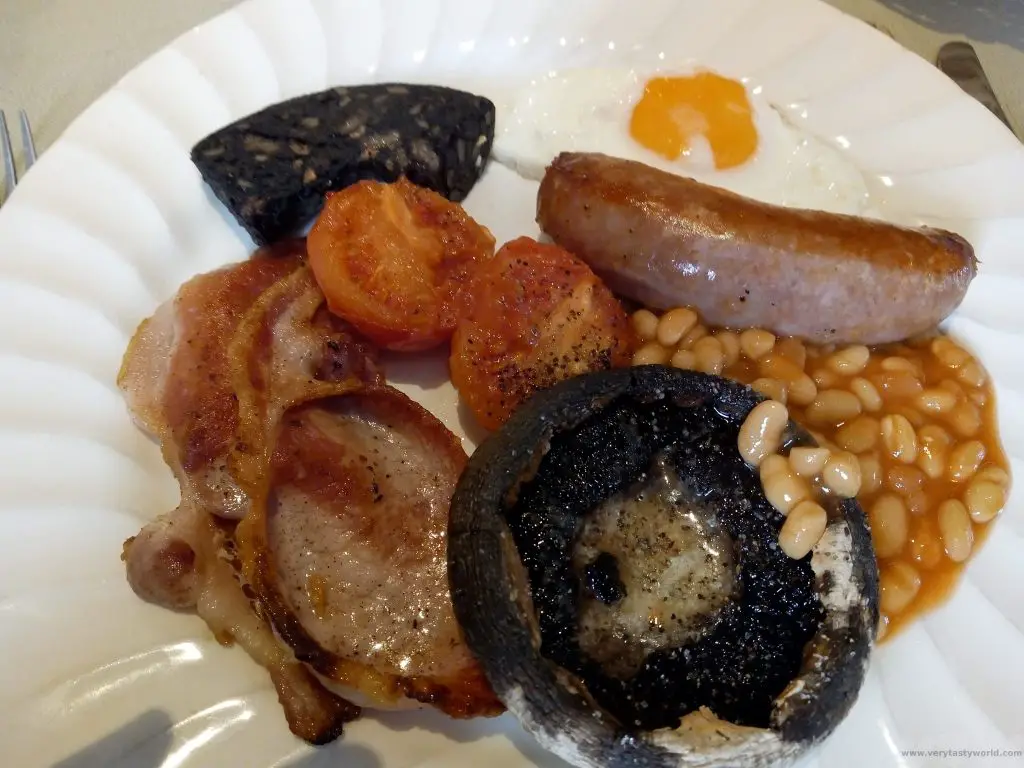
We recently discovered that the best possible place for a full English breakfast that we’ve ever eaten is actually in our home town. While many top breakfast establishments boast locally sourced food (which is, of course, delicious) some go one step further to cure their own bacon and make their own sausages and black pudding. And that’s just the start: The hash brown (never the most fabulous component of a British breakfast) is a home-made bubble and squeak, a glorious blend of fried potato and cabbage. The beans have never seen a tin – they are home-made baked beans in a rich tomato sauce. There is even rich and tangy brown sauce to accompany the feast.
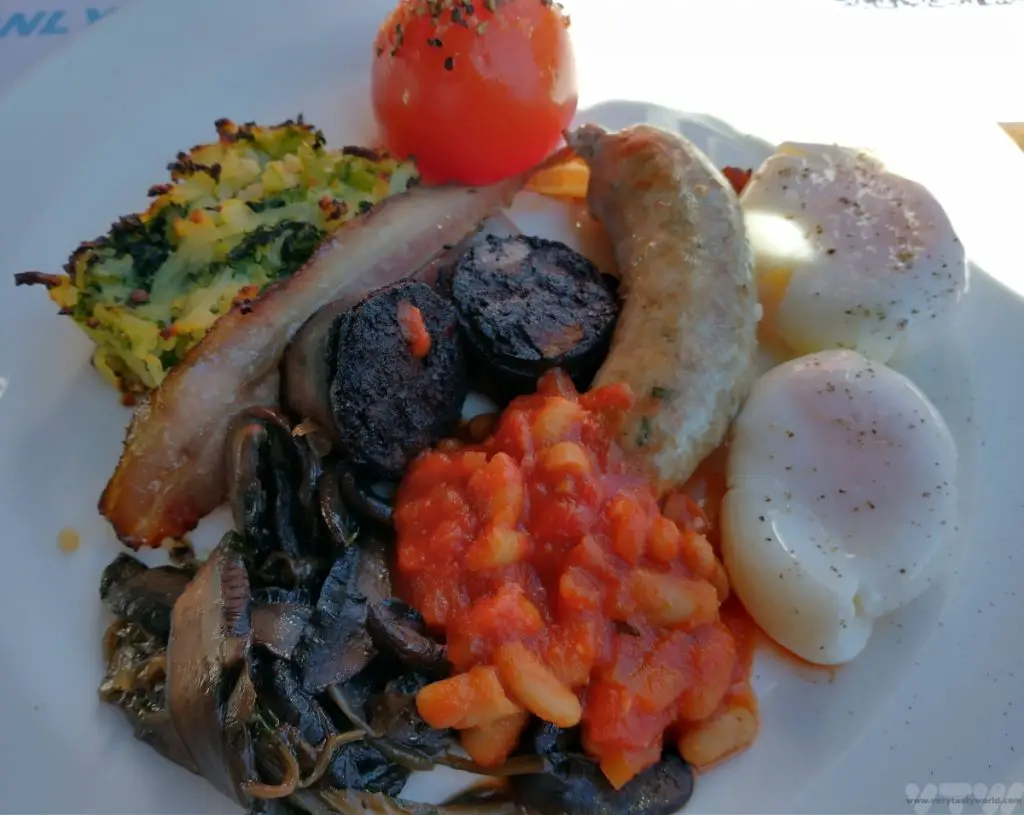
These are our favourite breakfasts from around the world. Do you have a favourite? Let us know!
Related Posts You May Enjoy

- RECIPE: How To Make Elderflower Champagne
- RECIPE Oyakodon Donburi
- Zero Waste Recipes Before Your Holiday
- RECIPE: Vegetable Biryani Tamil Nadu Style
- RECIPE: Vegan Wild Garlic Pesto
- Recipe: Venetian Pasta Sauce
- RECIPE: Biryani Raita Recipe
- RECIPE: How to Make Costa Rica’s Gallo Pinto
- Recipe: Japanese Simmered Pork Belly – Buta no Kakuni

- World’s Best Breakfasts -Breakfast of Champions!
- A One Day Hanoi Itinerary
- Mekong Meanderings
- A Chiang Rai Temple and A Country Retreat
- A Chiang Mai Tour in Northern Thailand
- Sunrise at Angkor Wat & Other Temples To Explore

- World’s Best Breakfasts -Breakfast of Champions!
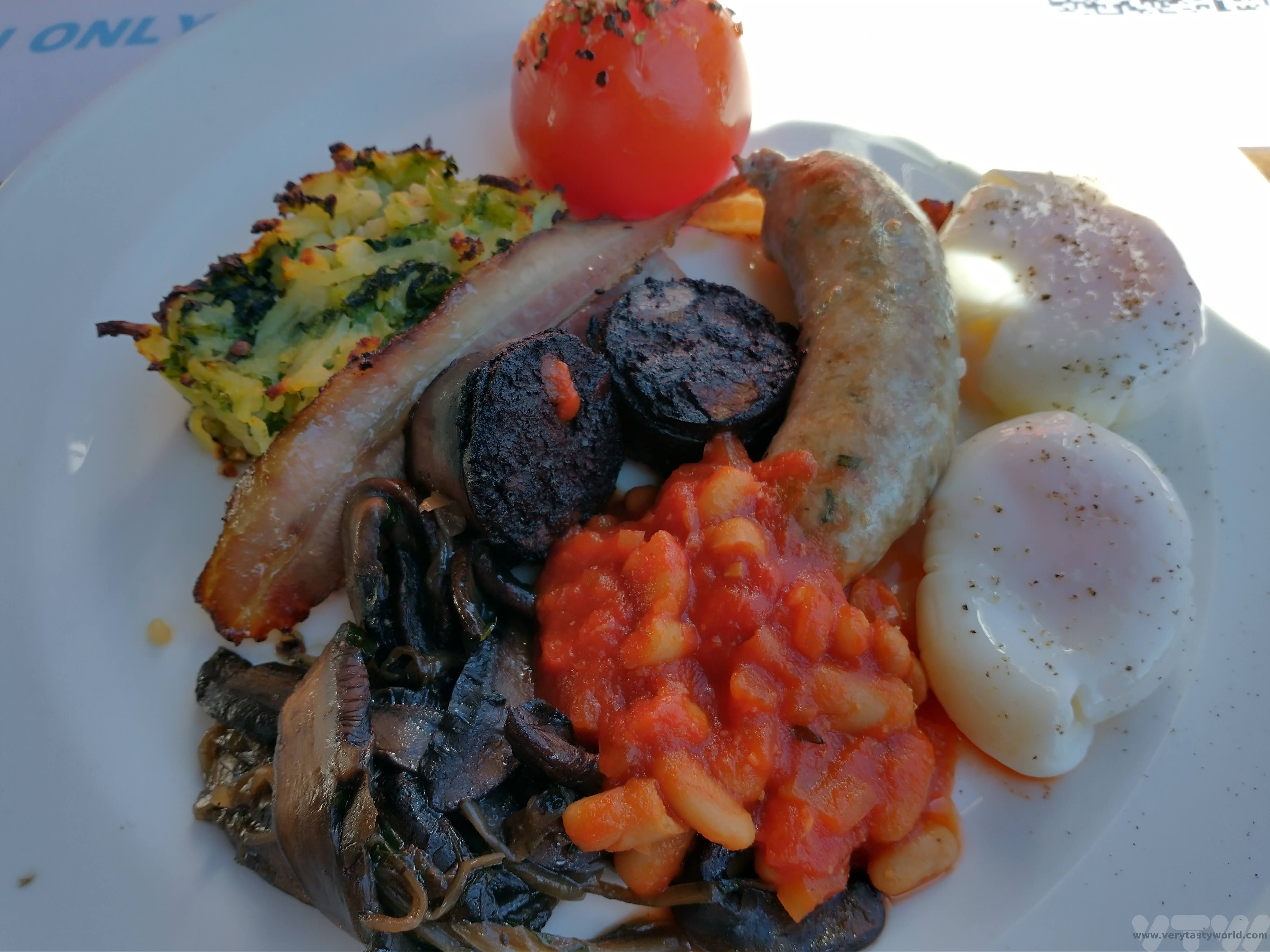
- RECIPE: Vegetable Biryani Tamil Nadu Style

- RECIPE: Biryani Raita Recipe

- The Leh to Manali Highway
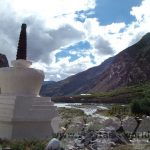
- Places to Visit in Munnar, Kerala
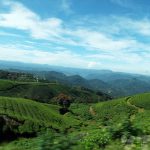
- Kumarakom Houseboats on the Kerala Backwaters
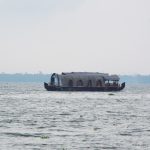

Thanks so much for reading. We hope you enjoyed this article. If you’d like to keep up to date with new posts and recipes, please subscribe to our newsletter or follow us on social media – X, Facebook or Instagram. We always love hearing from you and would be delighted to read your thoughts about this article.
RECIPE: Vegetable Biryani Tamil Nadu Style
Biryani is a delicious aromatic spicy rice dish that is a meal in itself. Eaten all over India, it is also very popular in Tamil Nadu, the south eastern state which runs from Chennai in the north, all along the Bay of Bengal to Kanyakumari in the south. We visited this brilliant state a couple of years ago and were not only inspired by wonderful places to visit but also the deliciousness of south Indian cuisine. And we have a recipe for vegetable biryani Tamil Nadu style.
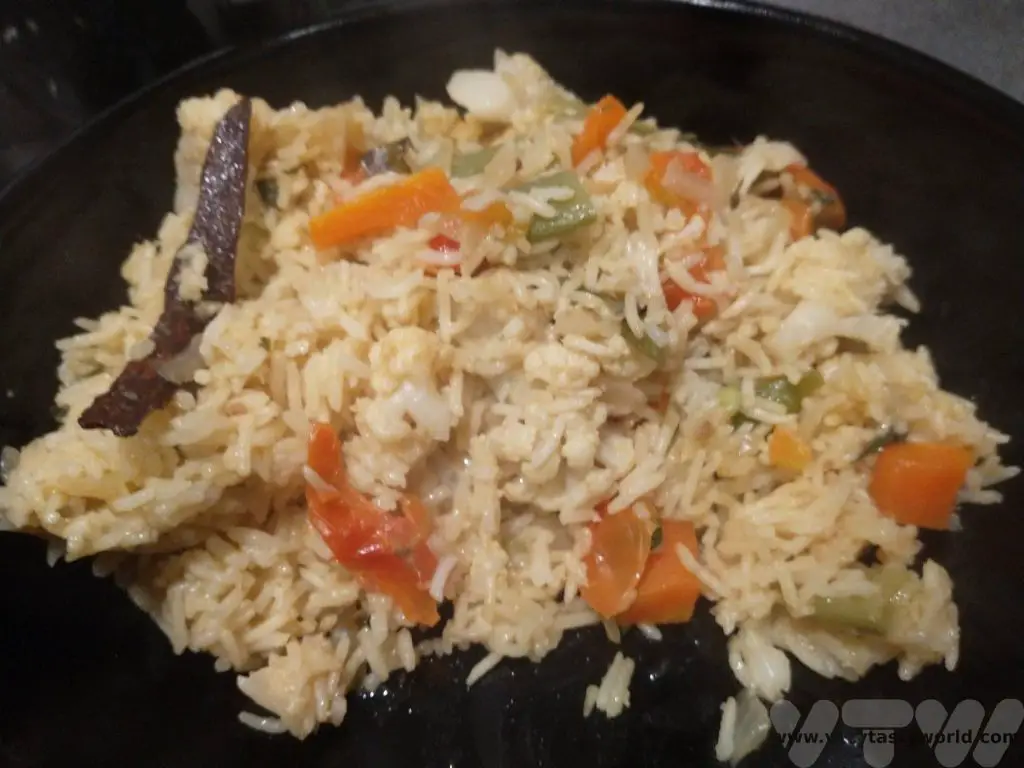
Although biryani is best known as a dish from India it is thought that it probably originated in the Middle East. The Persian word ‘birinj biriyan’ means ‘fried rice’. The cuisine of the Mughals, who ruled much of South Asia between the 16th and 19th centuries, had a significant influence on Indian food. The Mughals also introduced ingredients, such yoghurt, and also the ‘dum’ technique of cooking the dish over a low heat in a sealed pot which helps retain all the flavours as the food cooks.
This recipe comes from Tamil Nadu courtesy of our dear friend, Shankari. We were lucky to be gifted a traditional Indian pressure cooker which is absolutely perfect for cooking this delicious biryani but we have adapted and tested the recipe for a standard hob top pan as well. We often use a rice cooker to cook rice but we find it really doesn’t work very well with biryani because you are sautéing spices and vegetables beforehand and the rice is layered on top of these. A rice cooker can do this to some extent but not really enough to properly cook the spices.
Many people in Tamil Nadu are vegetarian so this dish contains no meat. When we visited this region every restaurant offered both a veg and non-veg meal option. This biryani could easily be adapted to include lamb or chicken but we love the simplicity of the vegetables and it is so tasty, you really don’t miss the meat. The spice combinations are warming and aromatic. If you wish to make the dish vegan, fry the ingredients in oil and omit the yoghurt.
The process involves cooking whole spices first to release their oils and to maximise the flavour. We leave the whole spices in the finished biryani but they aren’t really designed to be eaten – they won’t harm you if you do but you might get an overly intense hit of flavour if you chomp on a clove!
The quantities here will serve 2 hungry people but you can double up to feed more people, or you can use these quantities if you are accompanying the biryani with other dishes. We use a cup that is around 200ml in volume.
How To Make Vegetable Biryani from Tamil Nadu
Ingredients:
1 bay leaf
1 stick of cinnamon
3 green cardomom pods
3 cloves
2 tbs mint leaves
2 tbs coriander leaves
½ teaspoon red chilli powder
½ teaspoon coriander powder
1/8 teaspoon turmeric powder
½ teaspoon garam masala
1 cup of Basmati rice
2 tbs ghee or butter (use vegetable oil for a vegan biryani)
Small, finely chopped tomato
2 tbs natural yogurt
1 tsp ginger garlic paste (you can buy this frozen or in jars, or you can crush 2 cloves of garlic and a thumb of ginger in pestle and mortar)
1 green chilli (add another if you like spice)
Chopped vegetables (anything you like but beans, carrot, peas and cauliflower work really well)
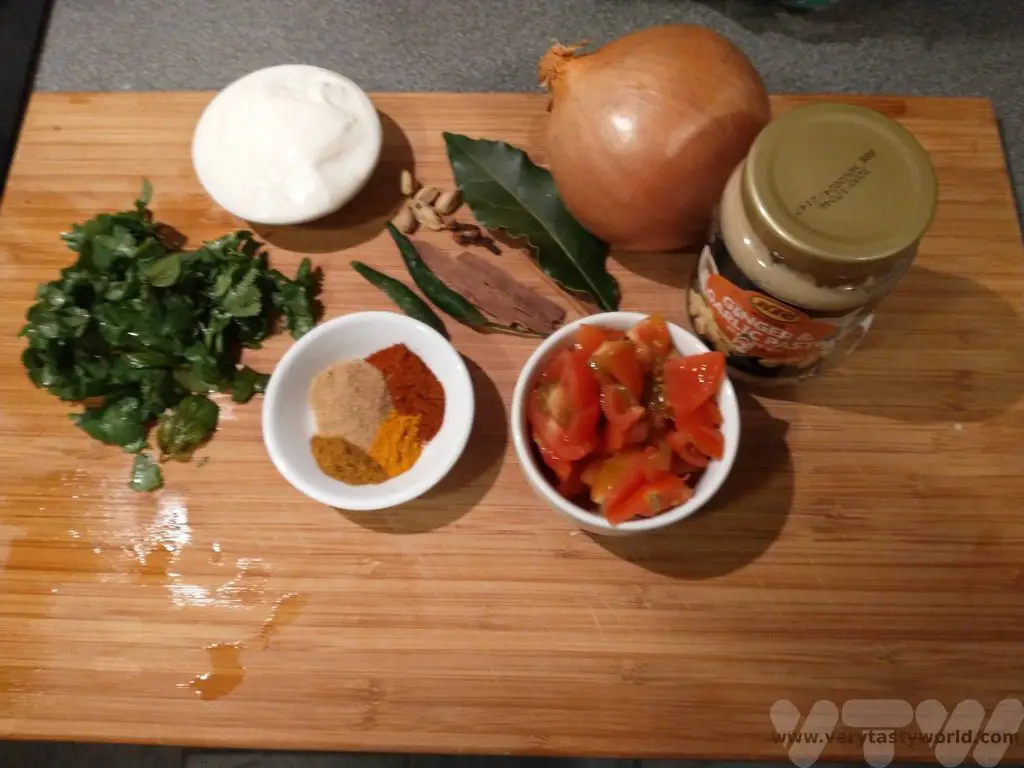
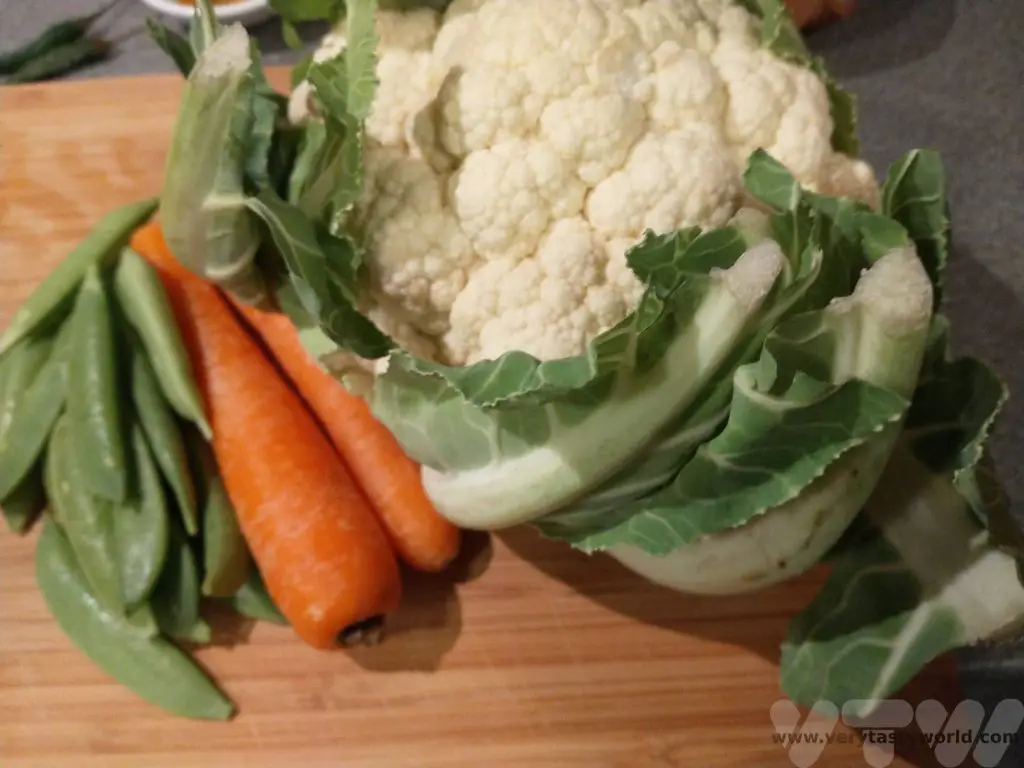
Method:
Add 1 cup basmati rice to a bowl and soak it in water for 30 minutes.
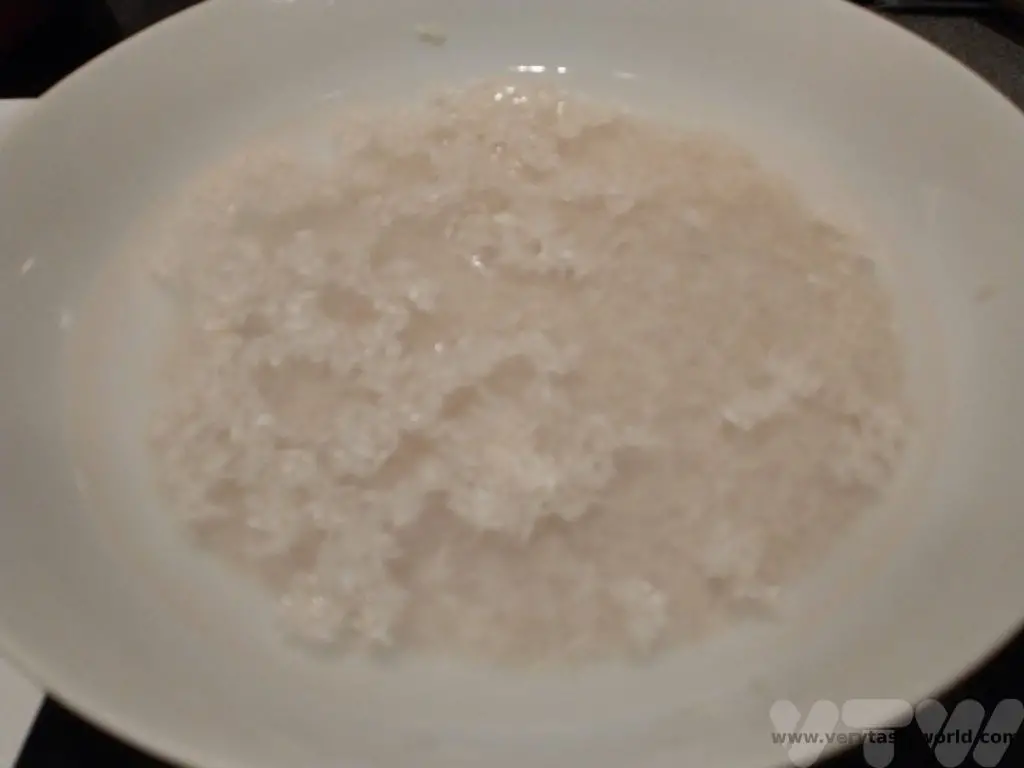
Heat 2 tablespoons oil or ghee or butter in a pot or pressure cooker.
Add whole spices:
1 bay leaf
1 inch cinnamon
3 green cardomom
3 cloves
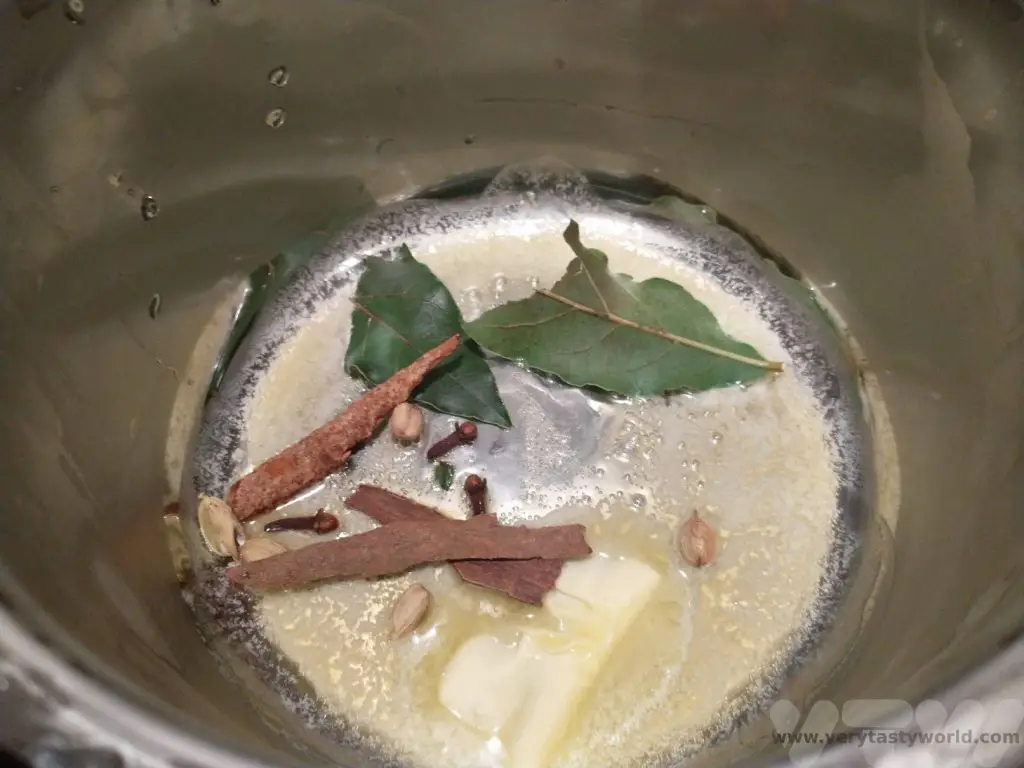
When the spices, begin to crackle, add 1 sliced onion and 1 chopped green chilli. On a medium heat, sauté until the onions turn golden.
Add 1 teaspoon ginger garlic paste. Sauté this for a couple of minutes until the raw smell goes away.
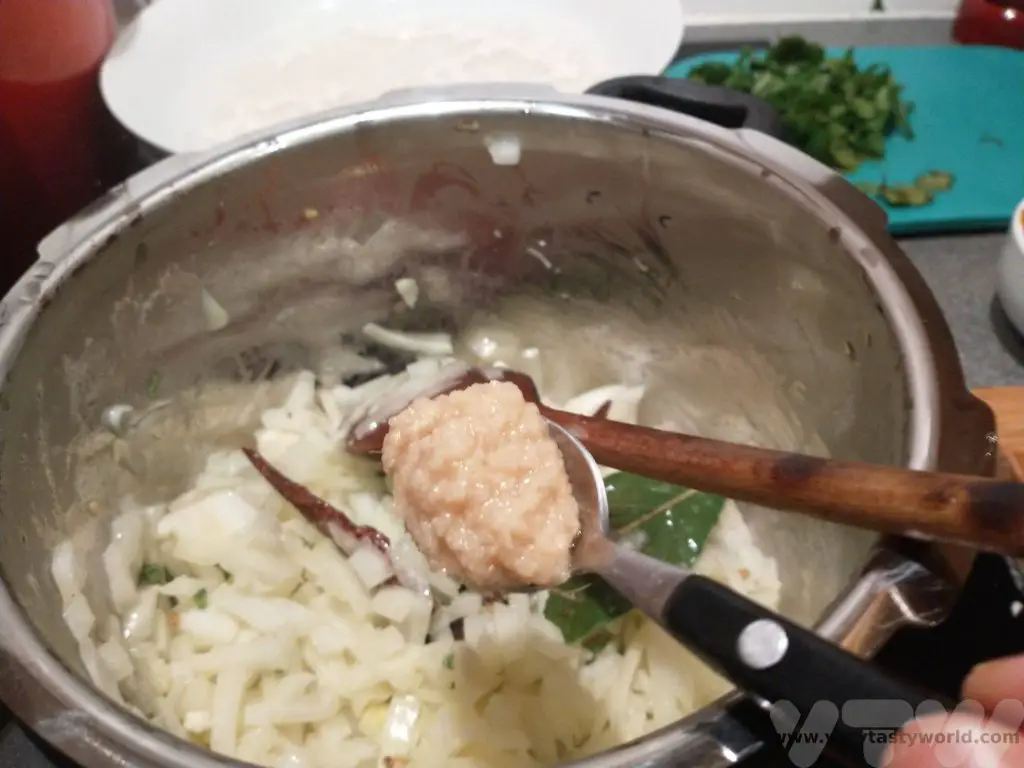
Add 1 cup chopped mix veggies and sauté on a medium heat for 2 -3 minutes.
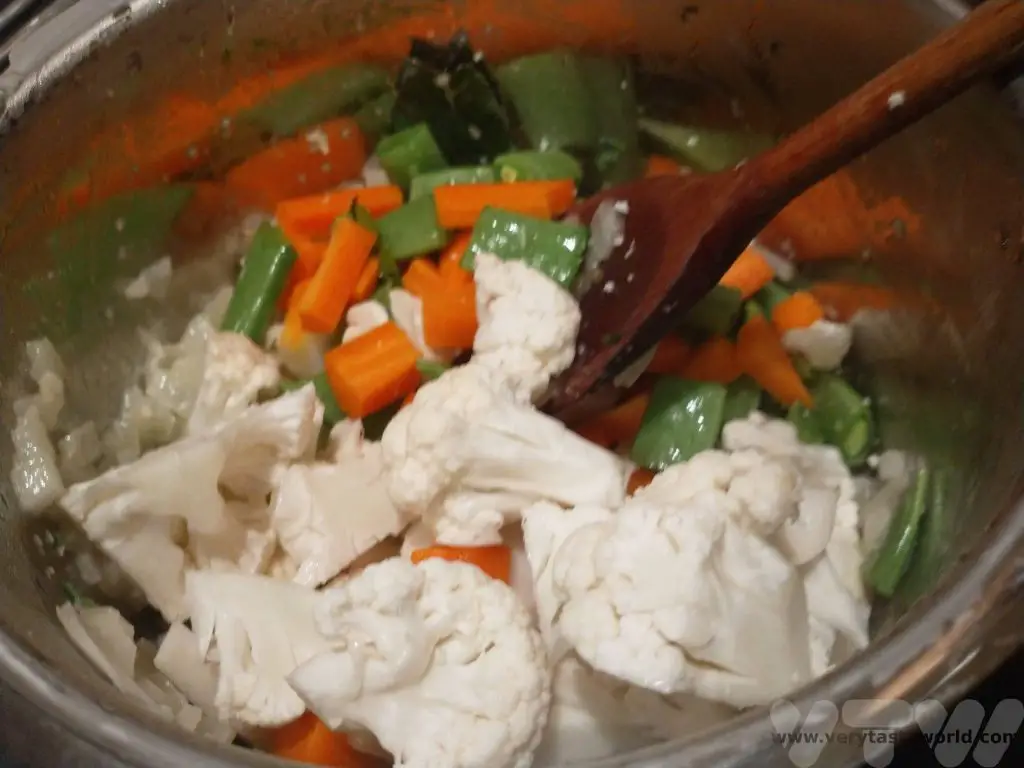
Add the following:
2 tablespoons mint leaves
2 tablespoons coriander leaves
½ teaspoon red chilli powder
1/2 teaspoon coriander powder
1/8 teaspoon turmeric powder
½ teaspoon garam masala
1 small finely chopped tomato
2 tablespoons of yogurt
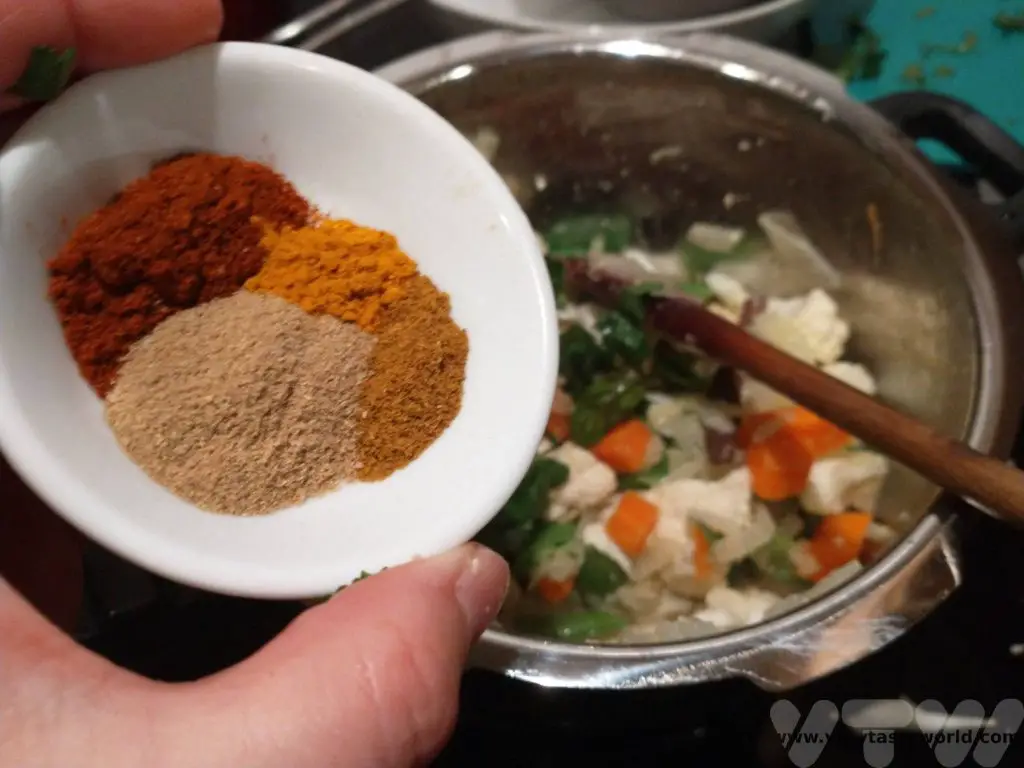
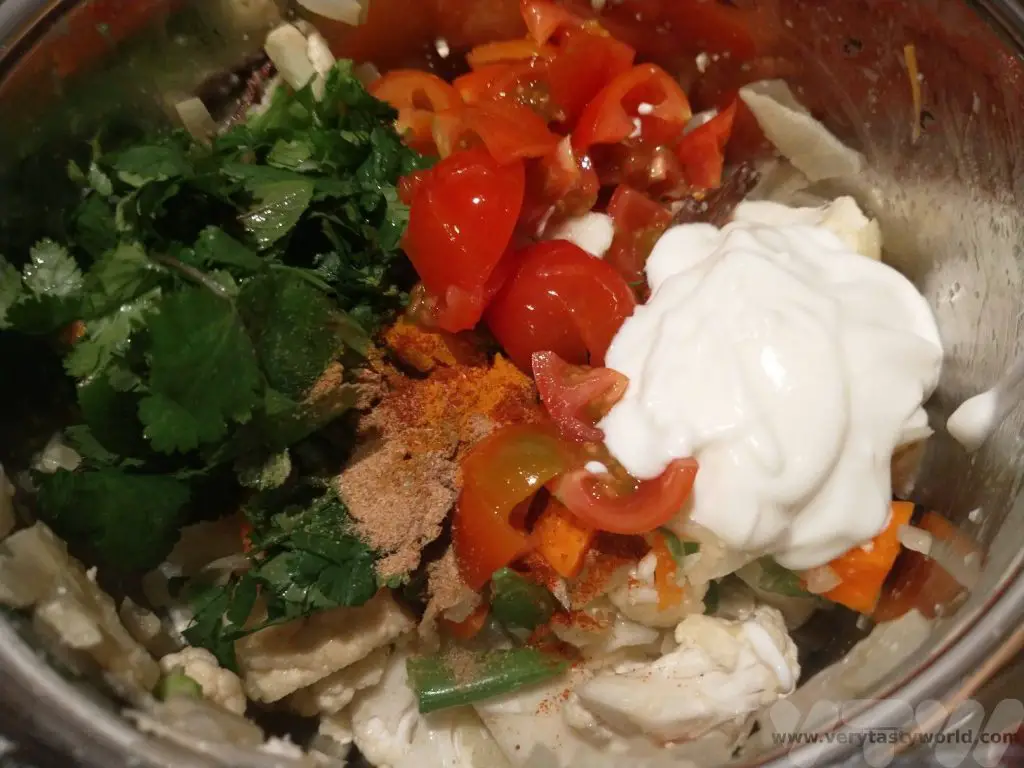
Mix and fry again for 5 minutes on a medium heat until the tomatoes break down. The mixture turns aromatic after frying.
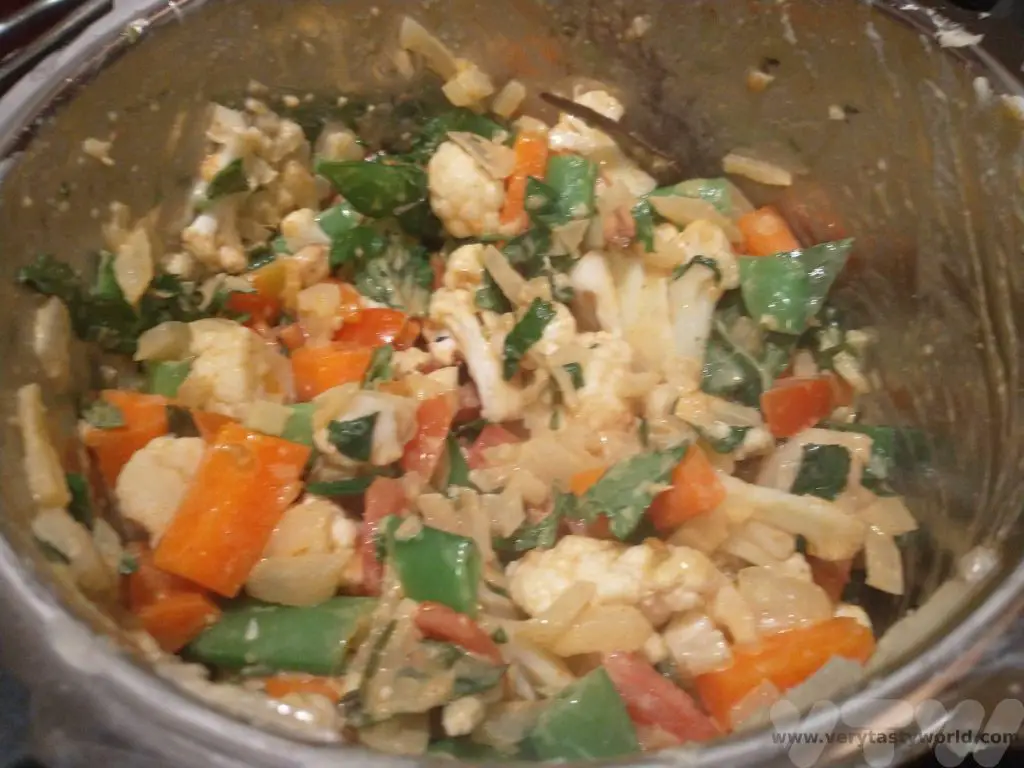
Add the drained rice and spread it evenly across the top of the mixture.
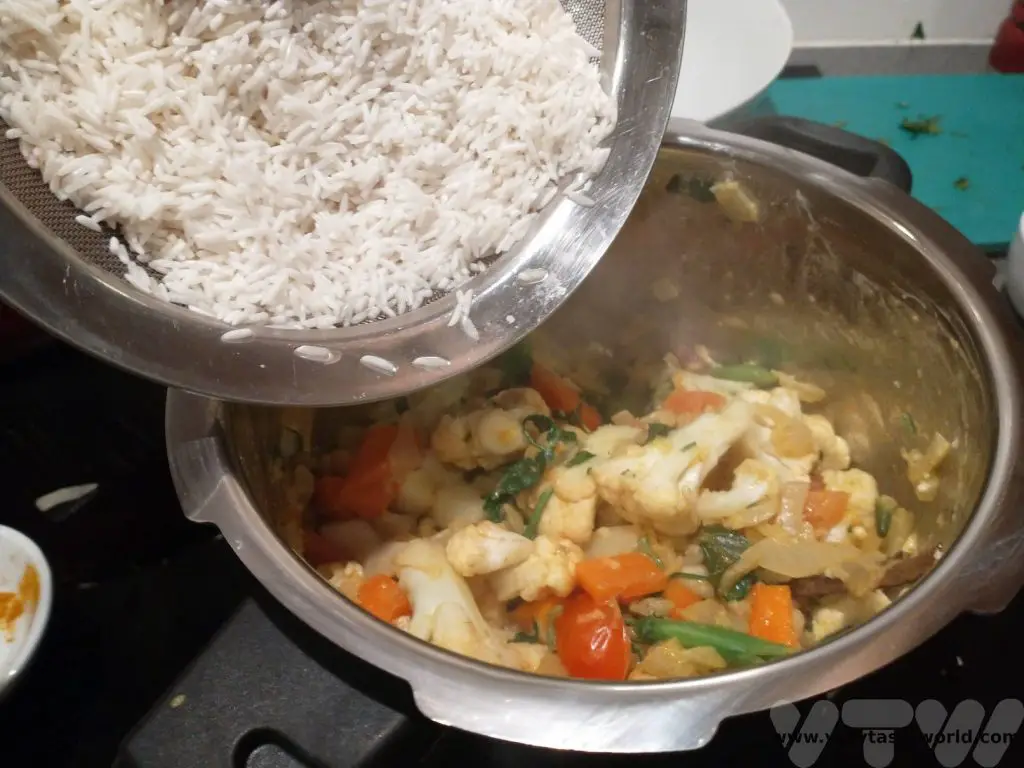
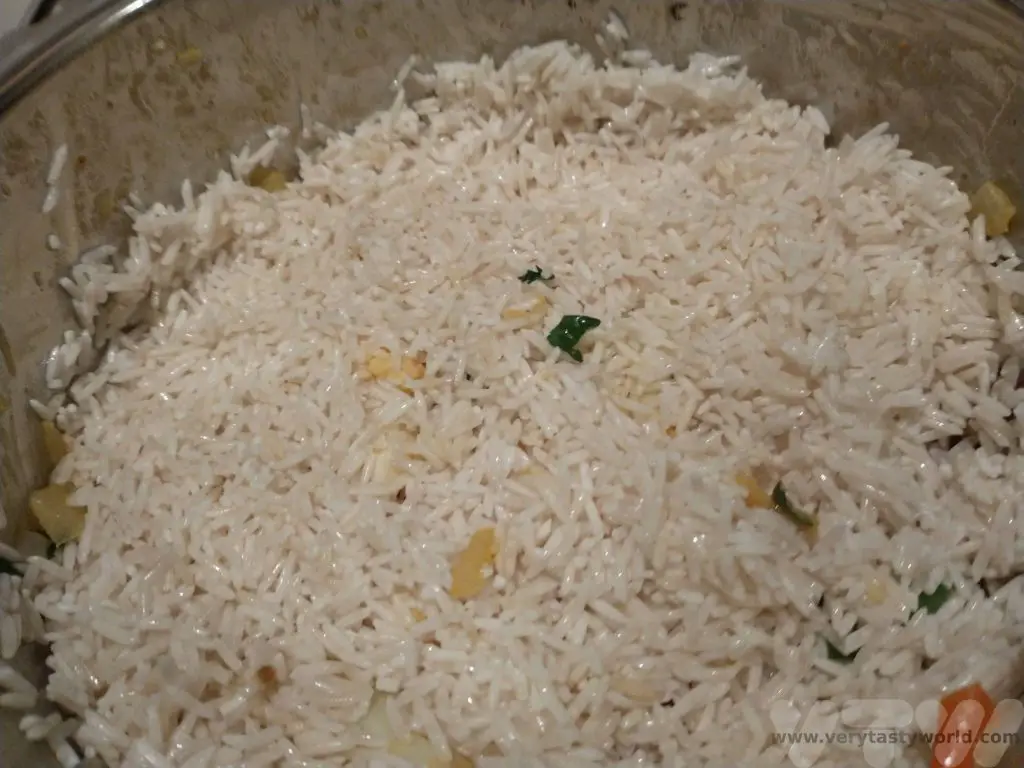
If you are using a pressure cooker: add 1 cup of water and salt to taste.
If you are using a pot: add 1.5 cups of water (this is because some steam will escape) and salt to taste.
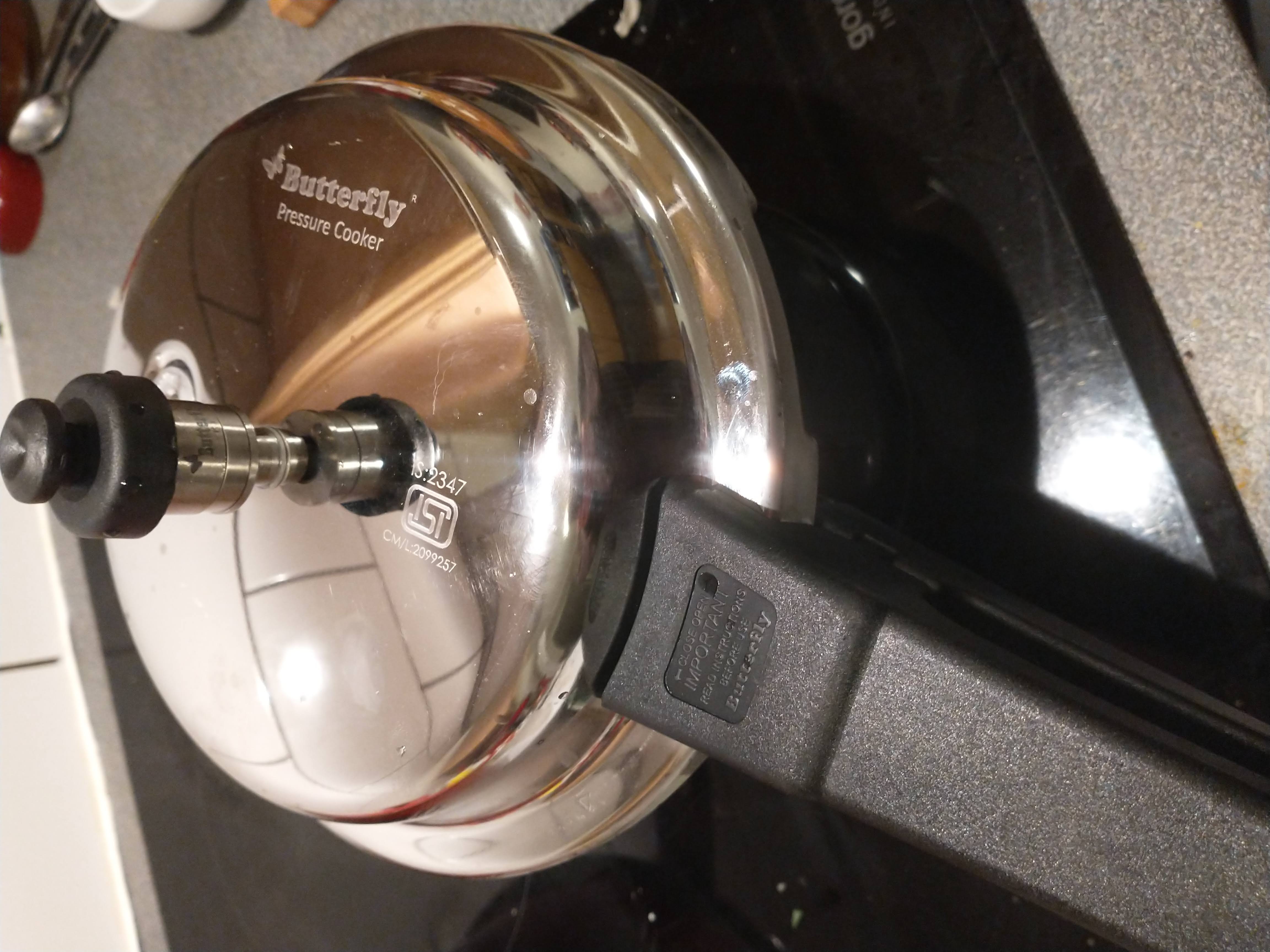
Cover the pot or pressure cooker with the lid.
Pressure cooker – cook on a medium-high flame for one whistle
Pot – cook on low heat until all of the water is absorbed and rice cooked is nicely.
Once the rice is cooked, take the biryani off the heat and let it rest for 15 minutes.
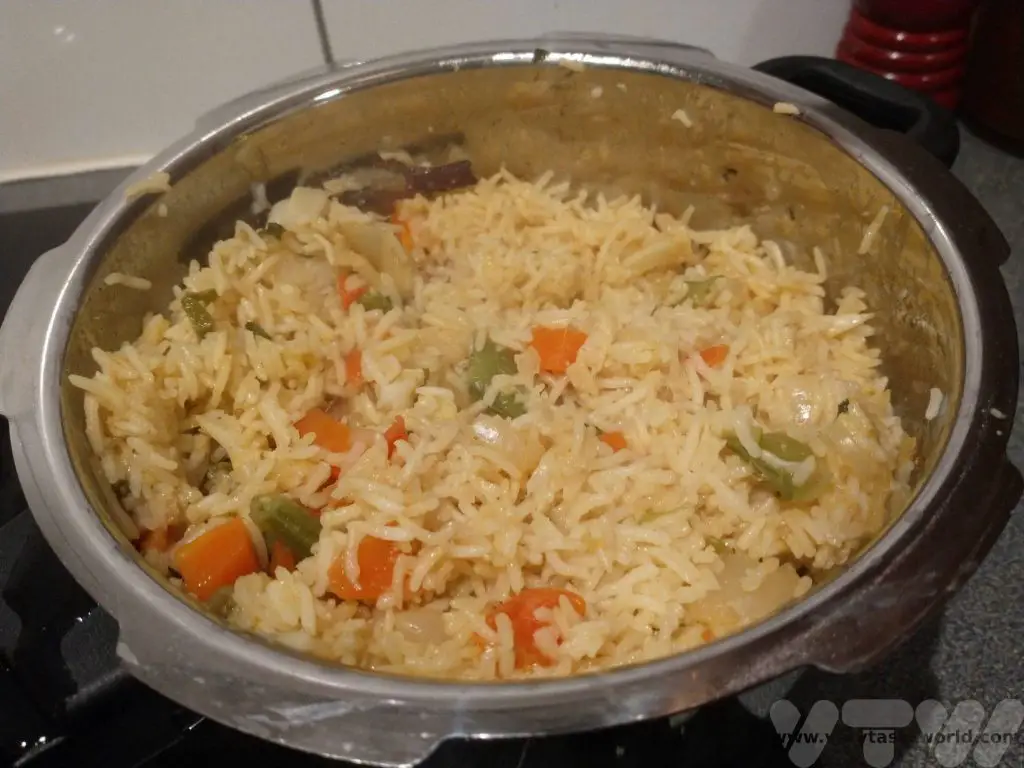
Serve on its own as a main meal, with a biryani raita, or it also makes a great accompaniment to other dishes.

We often enjoy it as an accompaniment to palak paneer – a paneer cheese and spinach curry – for a really delicious veggie meal.
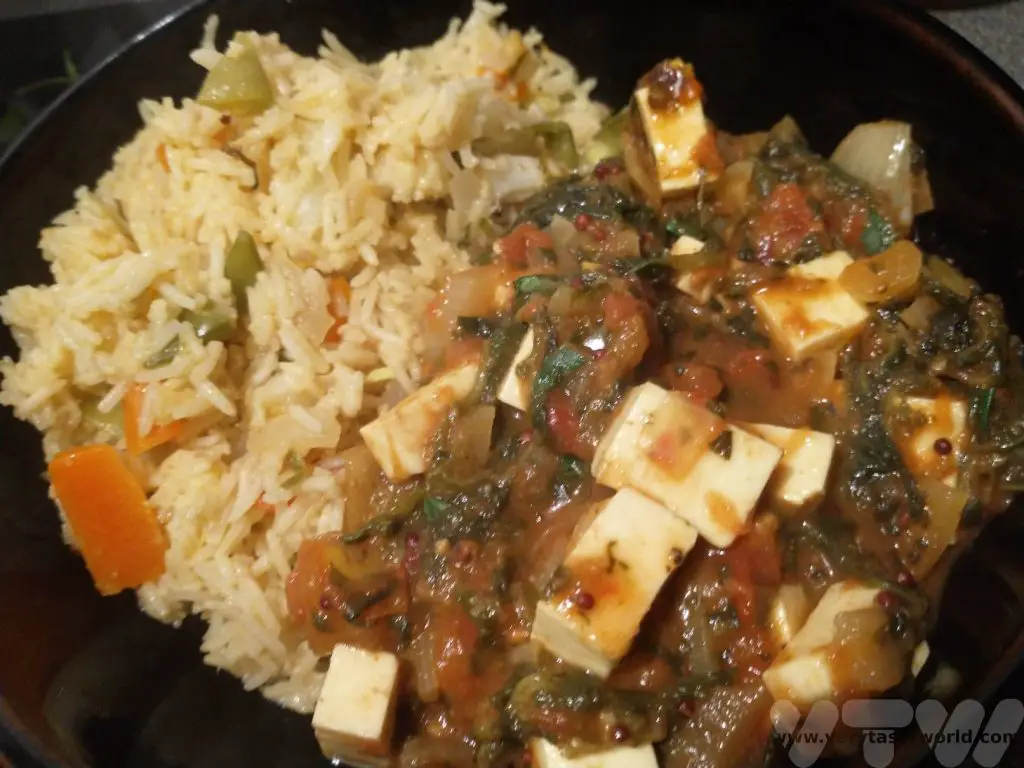

RECIPE: Biryani Raita Recipe
There are many cuisines around the world that use yoghurt-based dips or sauces to accompany particular dishes. Tzatziki is a Greek dish which incorporates cucumber and herbs into a Greek yoghurt. Salatat Khyar is an Arabic salad which is similar to tzakziki in that it uses cucumber and mint with the yoghurt but can be eaten as a standalone salad. And then there’s raita, often used in Indian cuisine as an accompaniment to ‘cool’ the spiciness of a main dish. This biryani raita recipe is simplicity itself to make and really delicious.
Yogurt is ideal to counteract the heat of chillies in any dish it accompanies. There’s a protein called casein which is found in dairy products. It binds to the active component of chillies which is called capsaicin and is the main cause of the burning sensation in the mouth. The casein helps soothe the burn. If you eat a spicy chilli, a drink of milk will help quash the heat far better than water.
(The combination of chilli and cheese in Bhutan’s national dish is cleverly designed to be spicy but the intense heat is tempered by the cheese.)
Raita uses cucumber but it can also have other vegetables such as onion and carrot, often diced. This dish can easily be adapted to incorporate different vegetables or even spices. If you wanted to add a warm earthiness, chuck in a teaspoon of cumin. Or add a touch of fire with a teaspoon of chilli or paprika. Harissa is a nice addition for a Middle Eastern dish. Similarly, you can vary the herbs – mint is a lovely alternative to the coriander or you can just add both in.
Our biryani raita is fantastically flexible in accompanying so many different types of dish.
Biryani Raita Recipe
Ingredients
3 heaped tbs plain natural yoghurt
2 garlic cloves (use 1 if you’re not so keen on garlic or are planning on kissing someone later on in the day)
Juice of half a lemon
Half a cucumber
2 spring onions (green onions)
Bunch of coriander/cilantro (mint also works really wall, or combine the two)
Pinch of salt. We particularly like crystal salt rather than table salt
Method
Grate the cucumber.
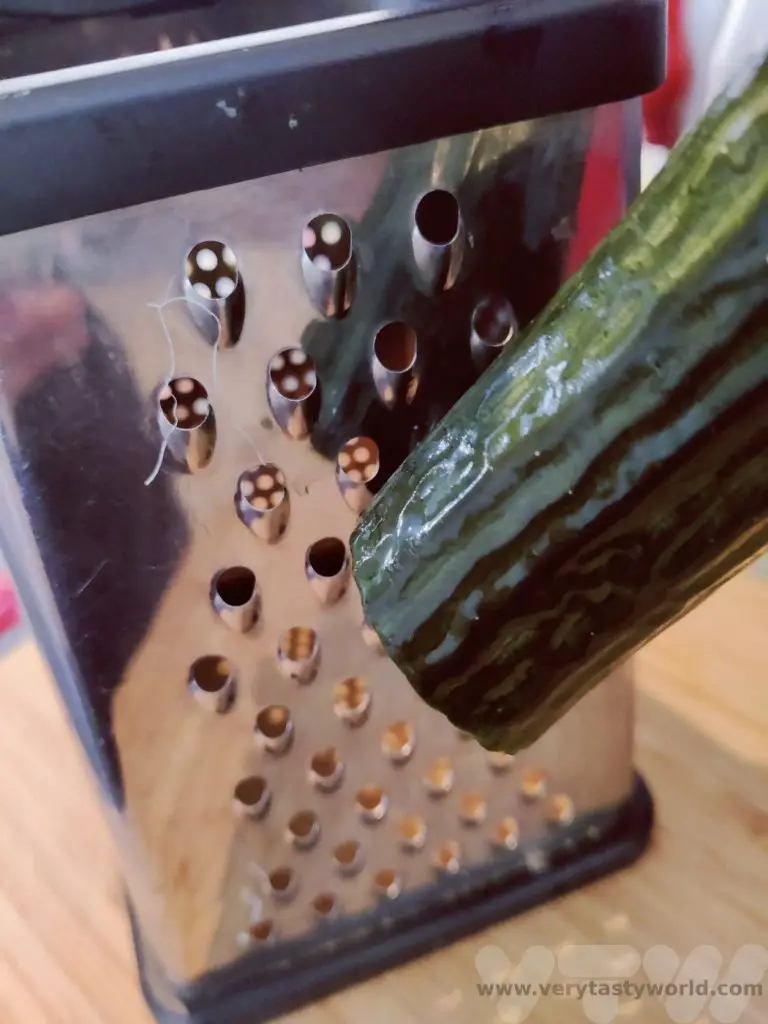
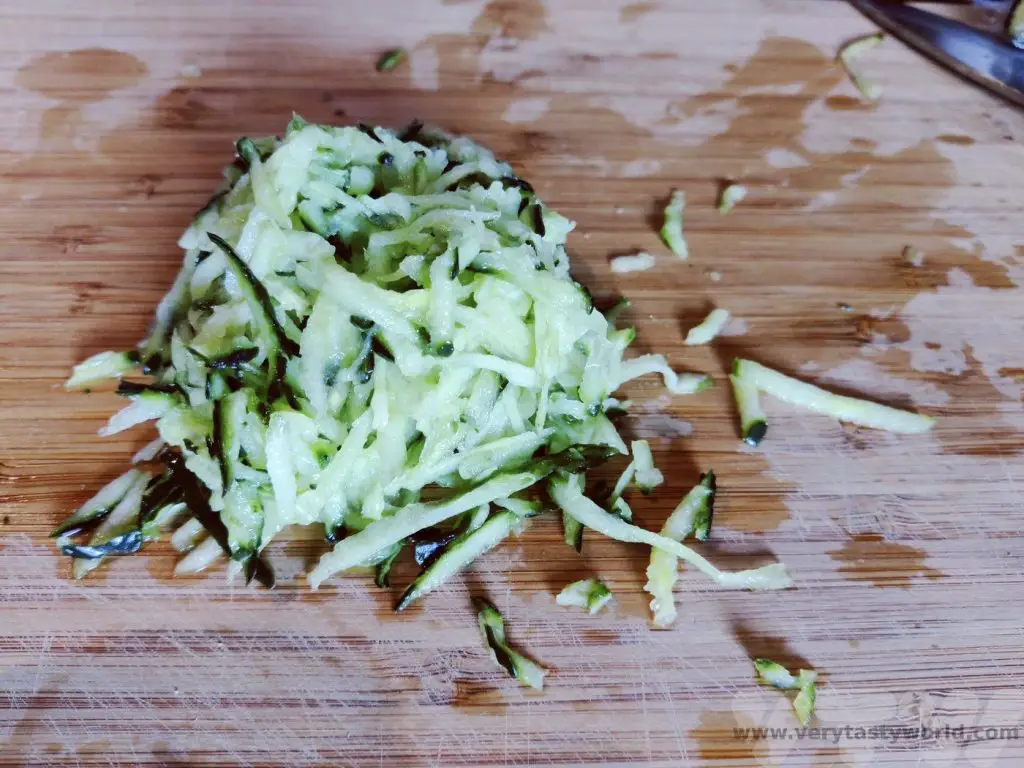
Gather up grated cucumber and squeeze the water out.
If you wish you can wrap the grated cucumber in a tea towel to absorb the rest of the water. It’s important to get as much water out of the cucumber as possible to avoid the raita becoming watery.
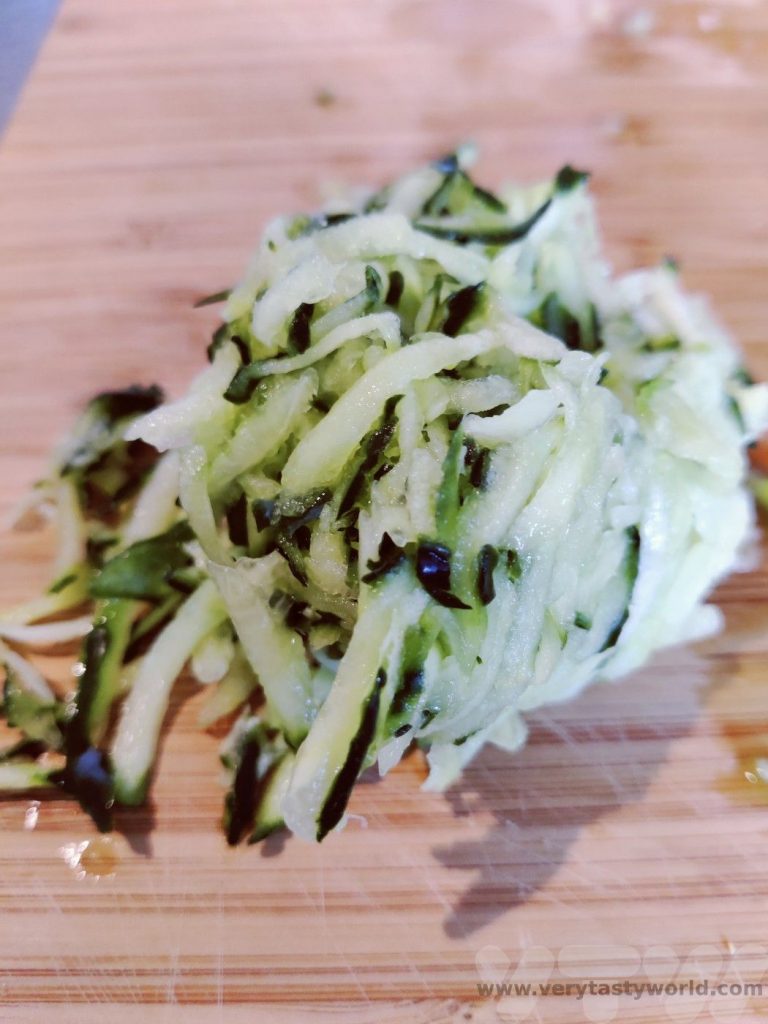
Finely chop the spring onions and coriander.
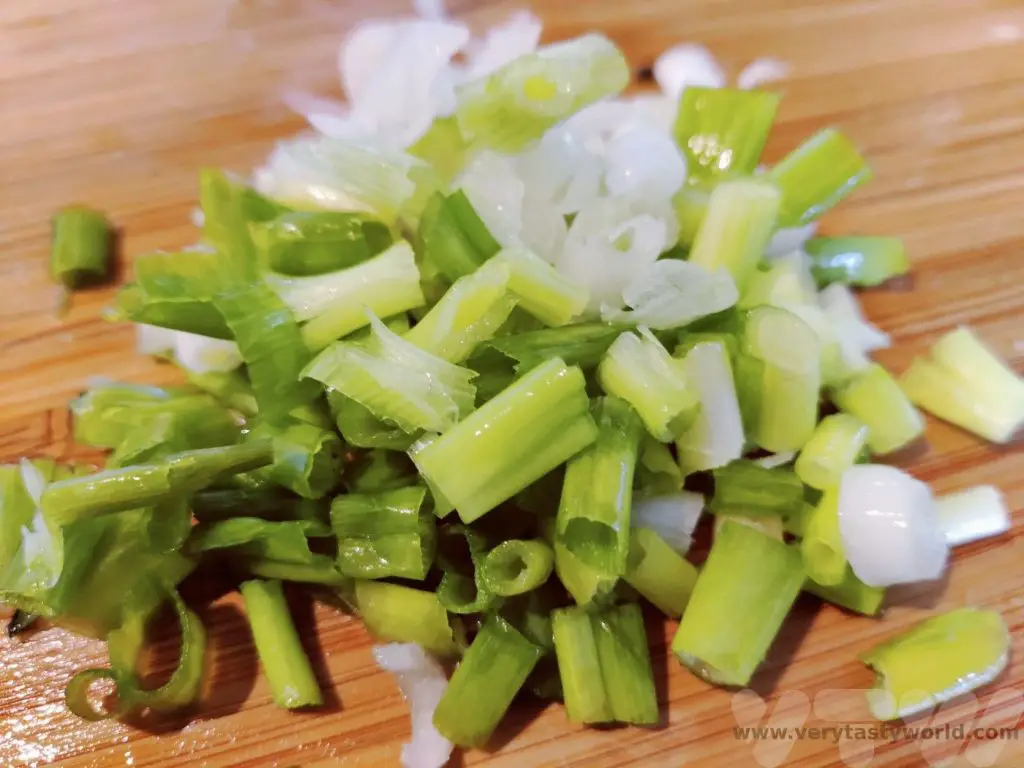
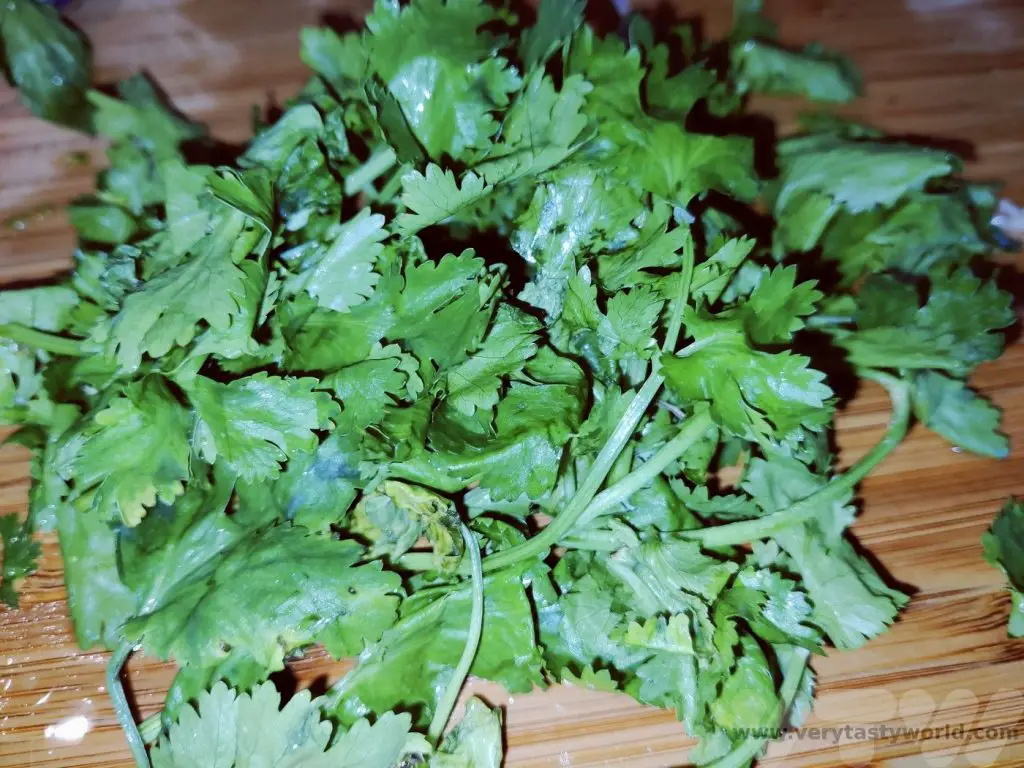
Place yoghurt in a bowl. Add the cucumber, spring onions and coriander.
Grate the garlic into the bowl – we find that a microplane grater is perfect for this. Our you could use a standard garlic press.
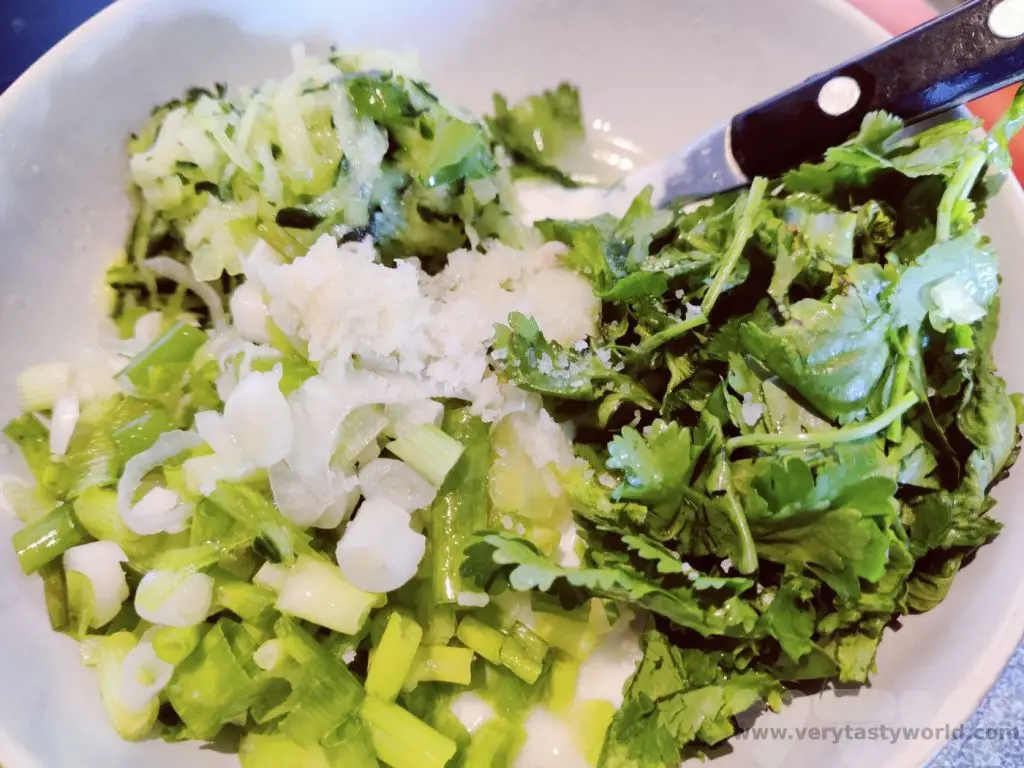
Squeeze the lemon to extract its juice, making sure that none of the pips end up in the mixture, and add the salt.
Mix together.
Ready to serve.
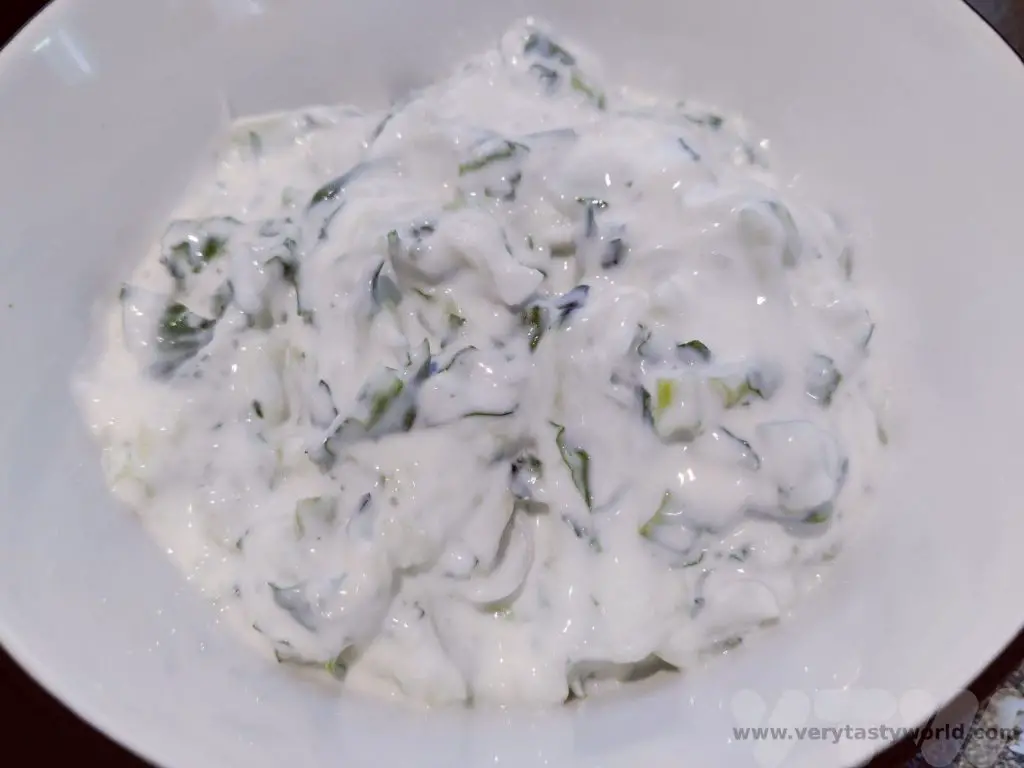
This works brilliantly to accompany a biryani, and cool it down if it’s particularly chilli hot.
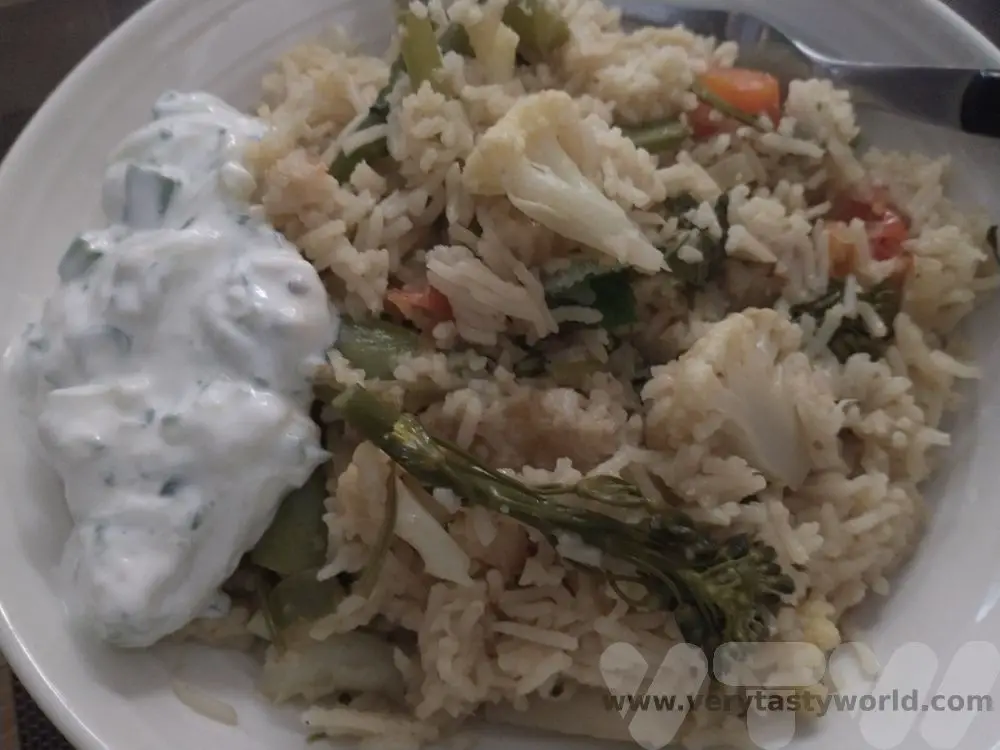
Or a delicious dollop as a great accompaniment to felafel in a wrap.
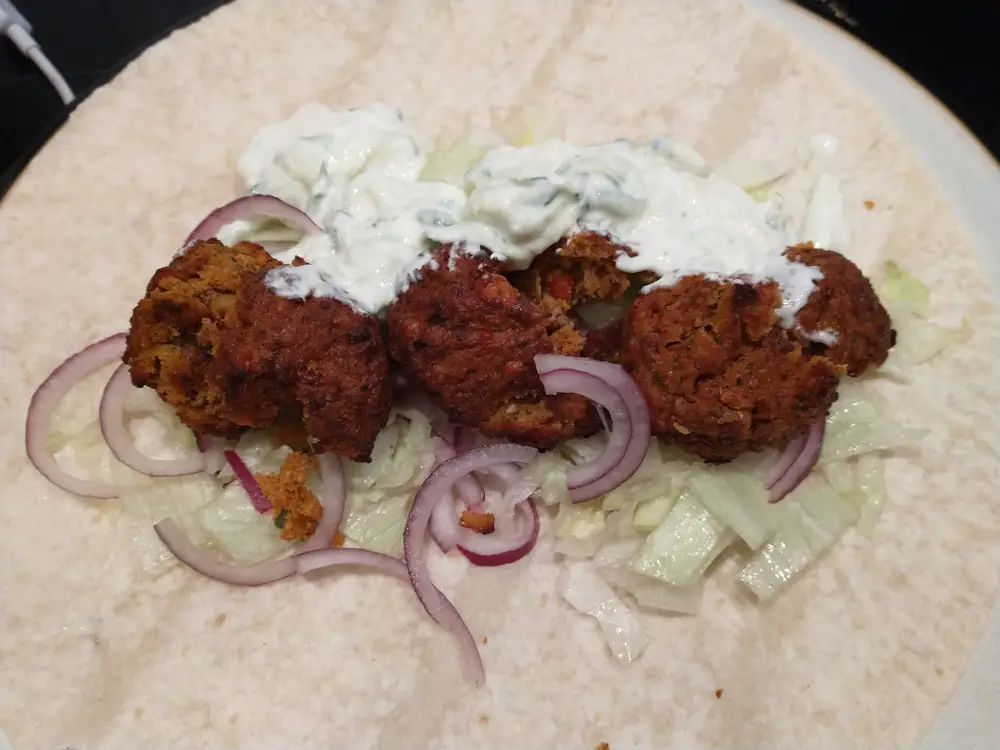
Or to accompany a Middle Eastern mezze. Here with home-made dolma (stuffed vine leaves), baba ganoush (aubergine dip) and tabbouleh (cous cous herb salad).
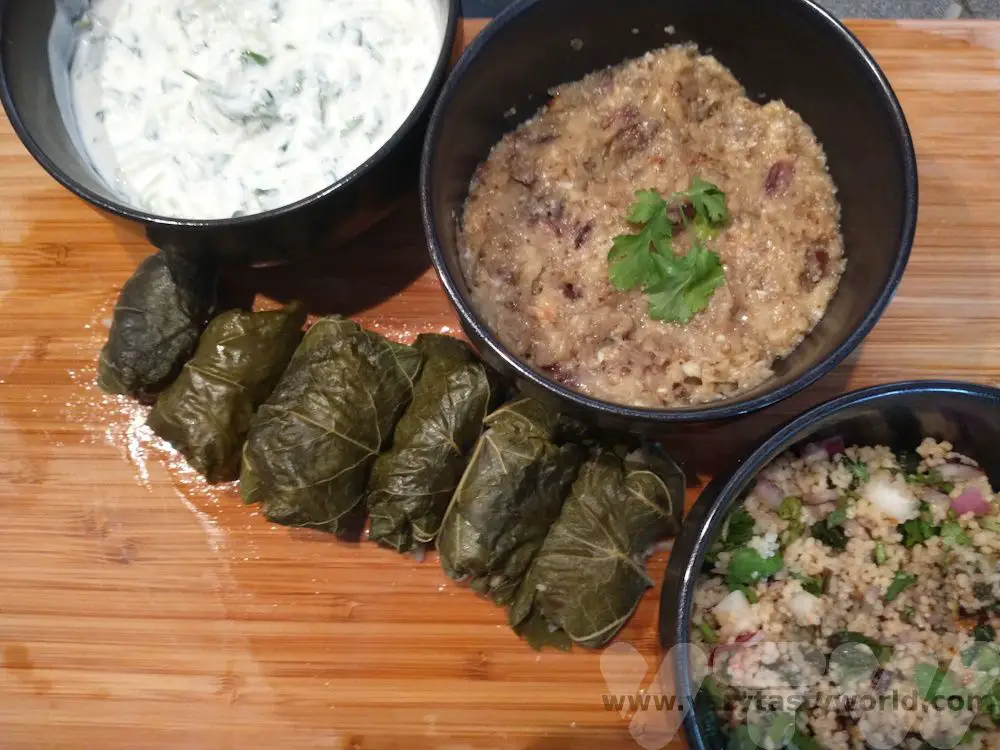
Related Posts You May Enjoy

- RECIPE: How To Make Elderflower Champagne
- RECIPE Oyakodon Donburi
- Zero Waste Recipes Before Your Holiday
- RECIPE: Vegetable Biryani Tamil Nadu Style
- RECIPE: Vegan Wild Garlic Pesto
- Recipe: Venetian Pasta Sauce
- RECIPE: Biryani Raita Recipe
- RECIPE: How to Make Costa Rica’s Gallo Pinto
- Recipe: Japanese Simmered Pork Belly – Buta no Kakuni

The Leh to Manali Highway
No Bridge Over Troubled Water
See the sublime splendour of the Indian Himalayas, the majestic snow-capped peaks, the stark and ethereal beauty of the world’s highest and most romantic mountain range! The magnificence of nature revealed in all its craggy, towering glory, waiting just for us. After a wonderful few days exploring Ladakh, we were to travel the long and winding Leh to Manali highway to take us from lofty Ladakh to the lush valleys of Himachal Pradesh.
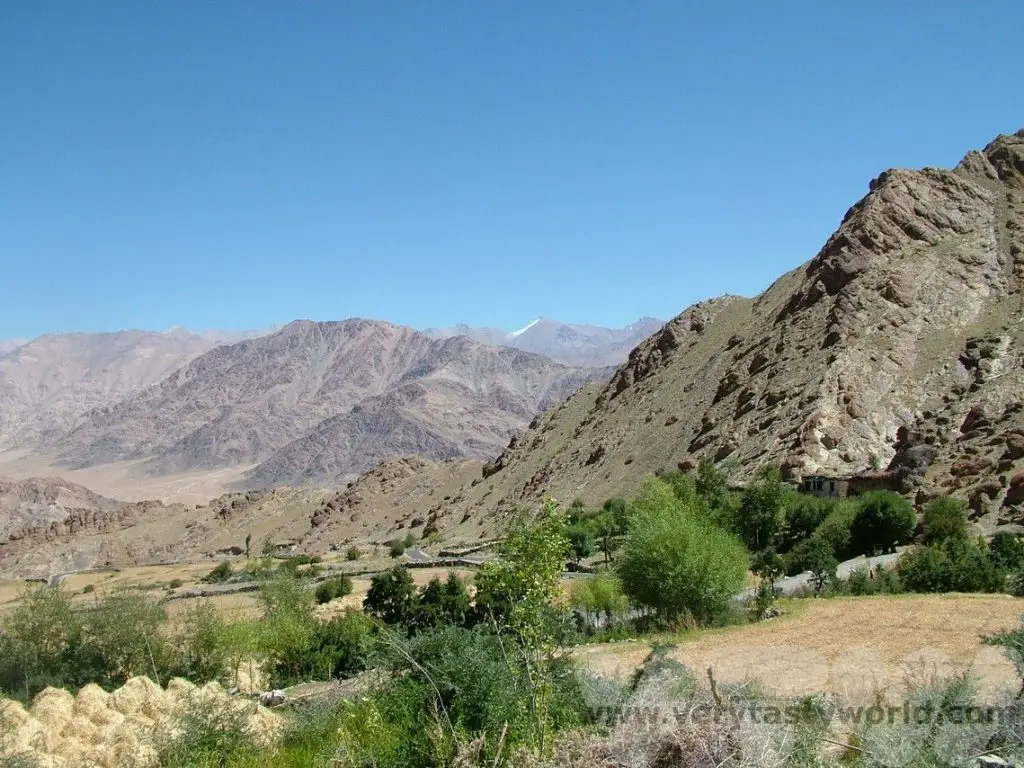
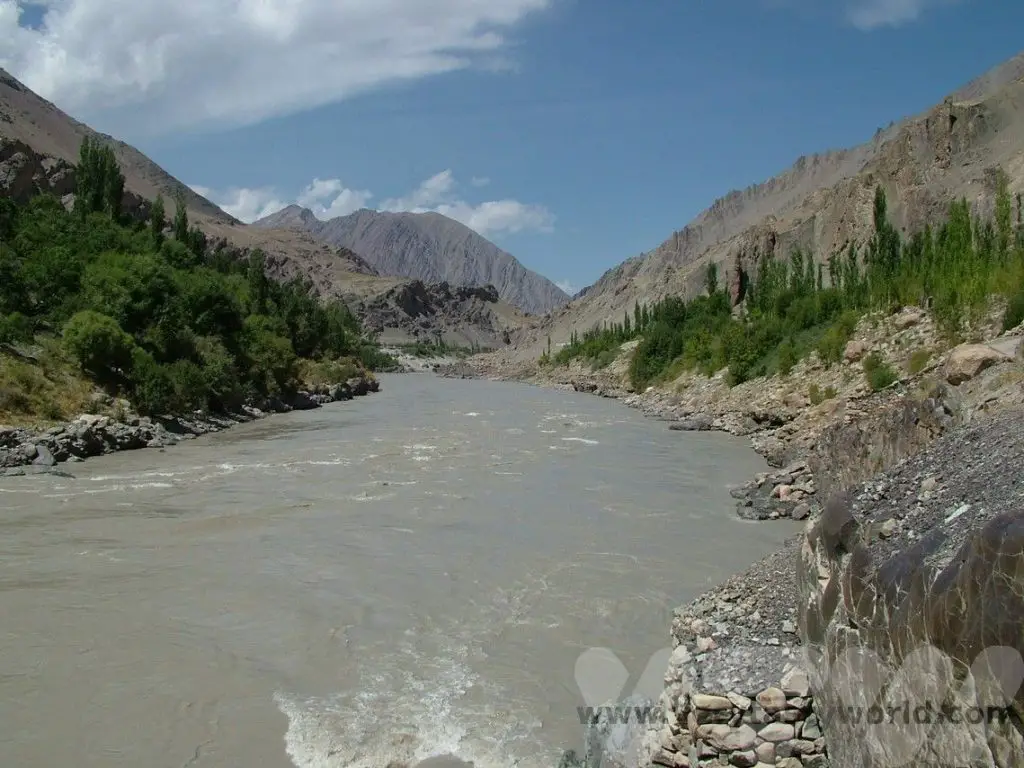
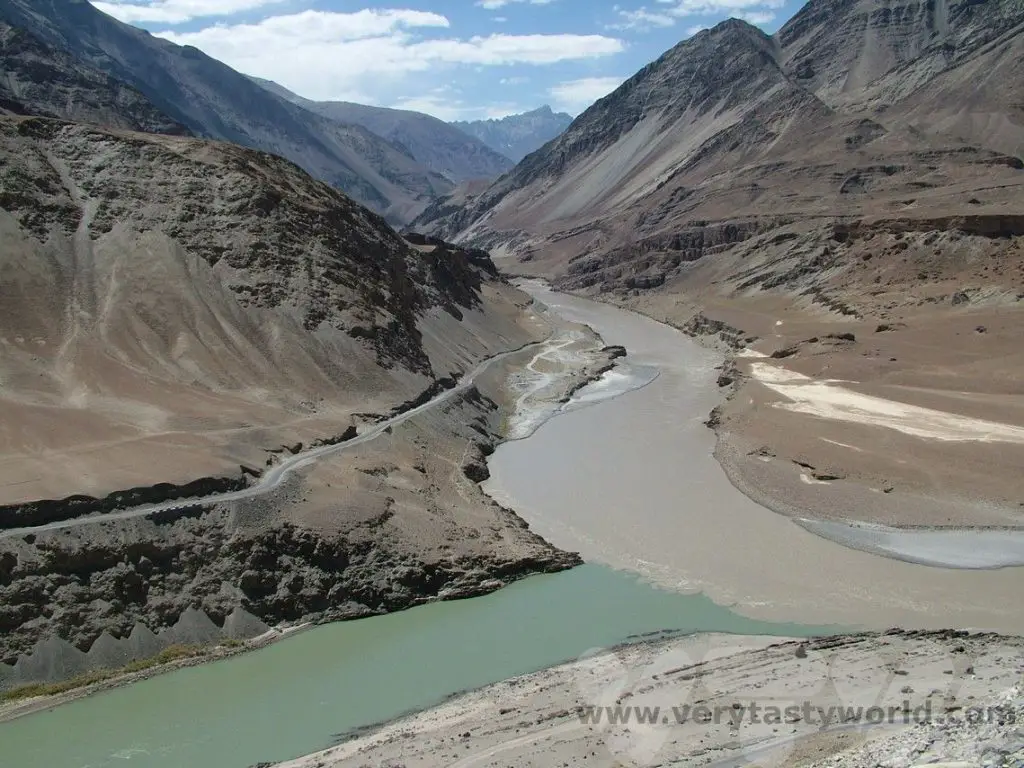
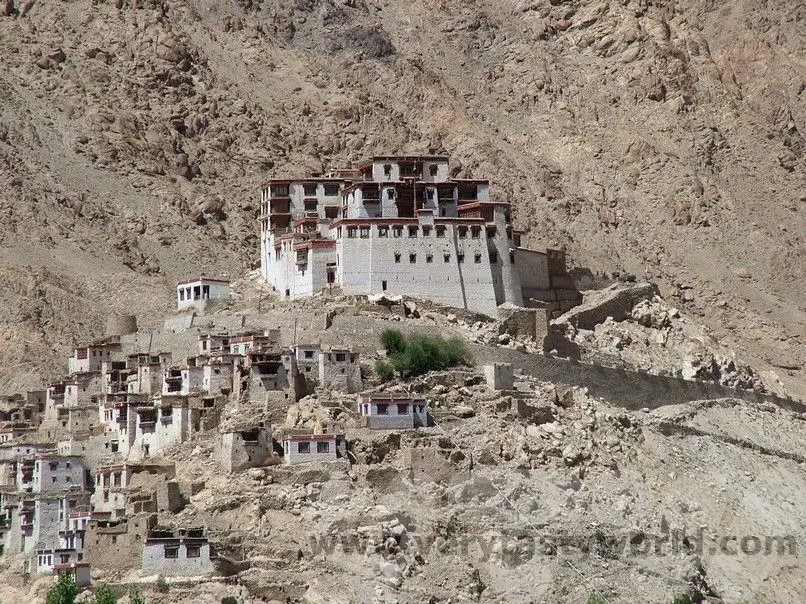
It’s just that the holiday sales pitch promotes the magisterial tranquillity of the experience without fully explaining the other, less expected, ‘joys’ that await the hapless tourist on their journey of a lifetime. It’s the laws of physics applied in a wider context, as every action has an equal and opposite reaction so every experience of aesthetic perfection must necessarily be tempered with some form of discomfort or inconvenience.
Travelling the Leh to Manali highway is a remarkable journey that takes three days. Our mode of transport for this illustrious road trip was a coach. If you are travelling in a coach on a long and winding road be aware that it could be bumpy. Don’t, whatever you do, sit in the back seats – you may want to relive those school trips where the cool kids all sat at the back of the bus, but the suspension and the road will have you bouncing around all over the place.
Leh to Sarchu
Soon after we left Leh we crossed the Taglang La – the second highest road in the world (at the time) at 5328m. When the road marker stated, ‘Unbelievable is not it?’ we couldn’t help but agree.
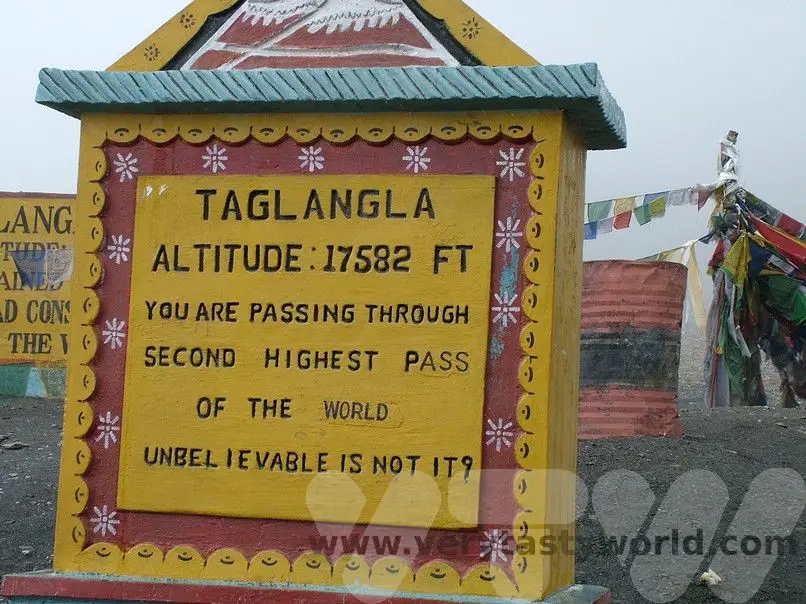
Then we wound our way through the Gata loops, a series of 21 hair-pin bends, which required the coach to engage in some mildly terrifying 3-point turns in order get around each curve, with the driver’s assistant getting out at each bend to take the vehicle’s wheels to the very edge of the road with its precipice below. Indeed much of the journey involved travelling along single track roads which skirted long drops to the valley below.
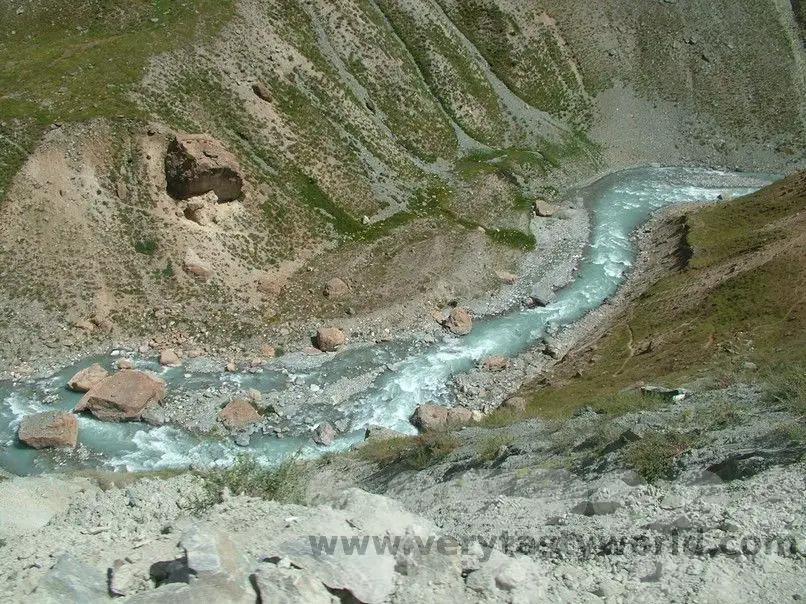
It is a lonely, desolate road, but also a strangely beautiful road.
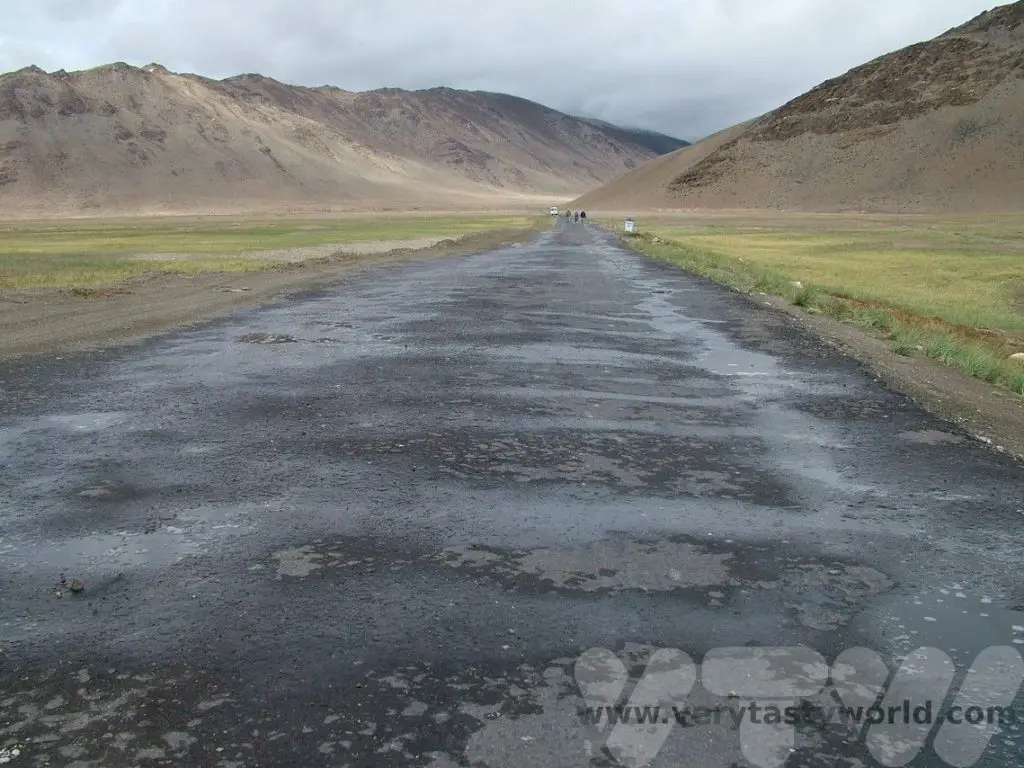
But it can be a dangerous road. All along the highway we saw evidence of vehicles that had not stayed on the highway and had plummeted several hundred metres into the valley below and were gently rusting in the river.
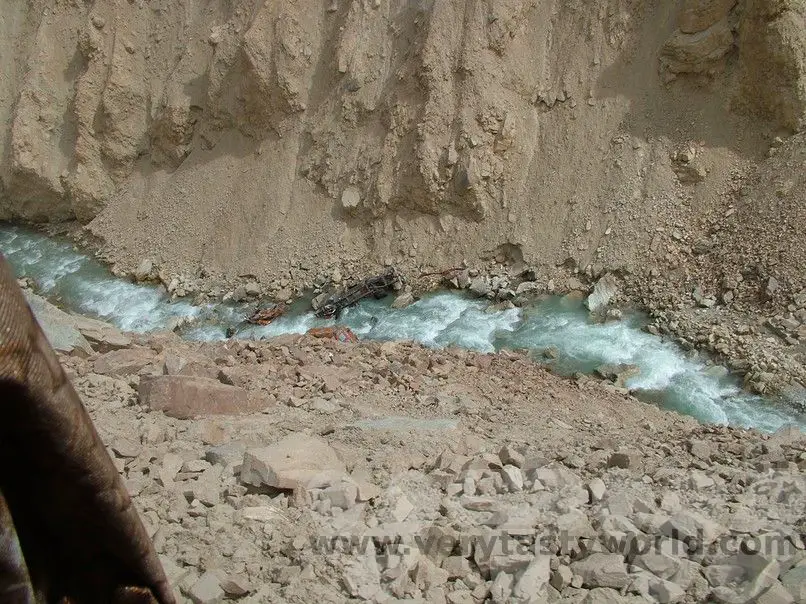
Along the route are camps where it’s possible to get a break and a cup of tea or a snack. We would see many workers whose job it was to maintain the road each year.
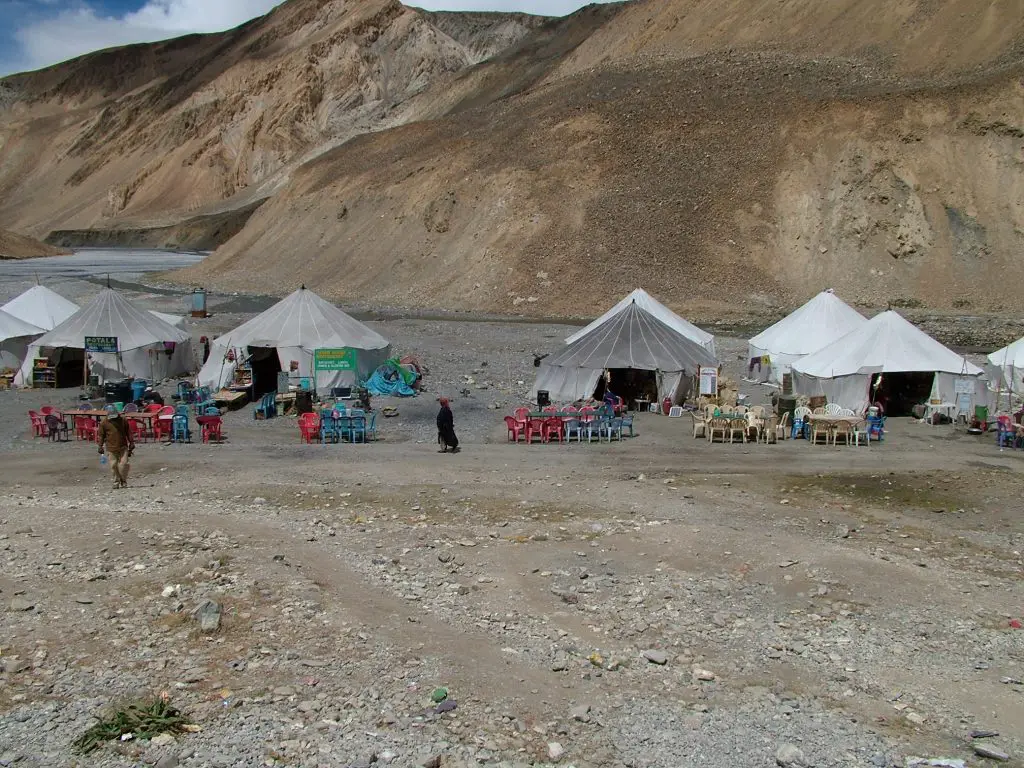
We were headed for Sarchu where we camped at 4200m.
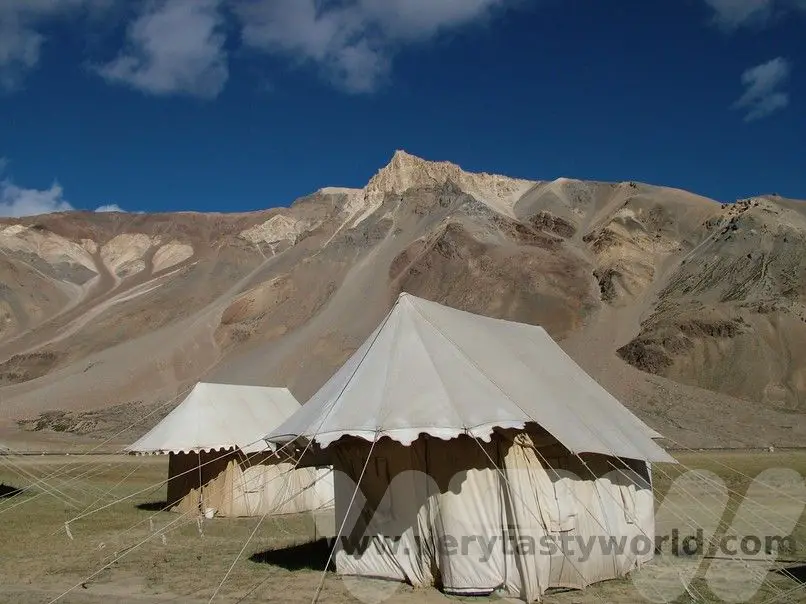
Considering the remoteness of the location the accommodation was good – our tent even had an en-suite toilet, basically a long drop loo with a seat. There was no shower but no need even to think about showering, or even getting undressed, as the temperature was very cold indeed. This was the highest altitude we have ever spent the night and, although we both had slight headaches, were generally fine.

Sarchu to Jispa
The following day would involve the long and winding road climbing to 4891m at the top of the Baralacha La Pass and then descending to Jispa which was a pretty place to stop for the night. It was possible to have a walk around the area – much needed after sitting on a coach for hours on end.
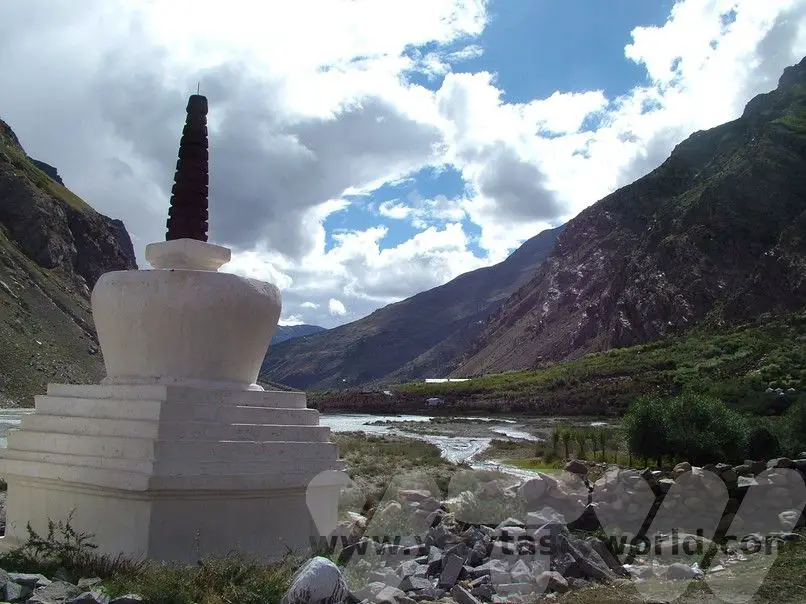
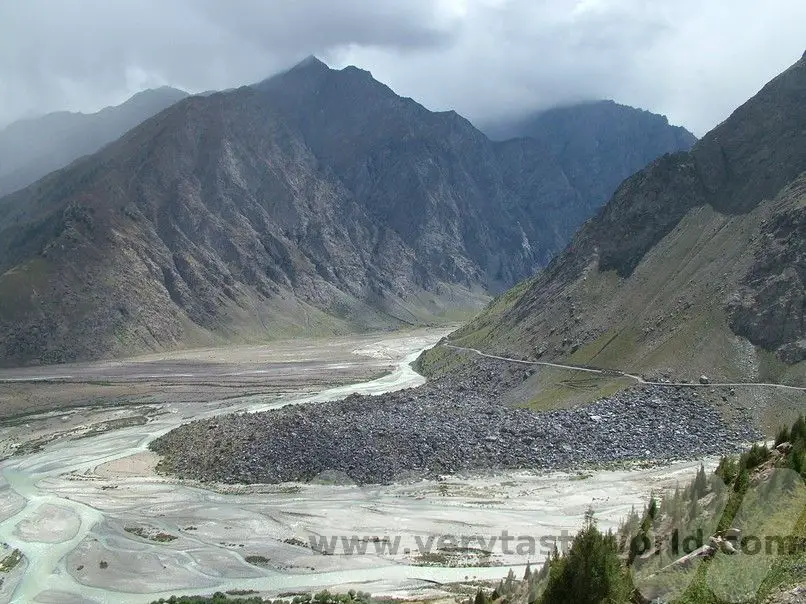
Jispa to Manali
The next day would offer something altogether unexpected. The Leh to Manali highway is a beautiful one and a treacherous one, but it is also the only one. Maintained for the short window of the year that it is actually traversable, the long and winding road is a marvel of man against nature. Except nature always, always wins. A case in point: scattered along the expansive road are a number of bridges crossing unfeasibly deep gorges through which the mighty Indus flows, plunging hundreds of feet into foaming rivers of kinetic danger. These bridges, as innumerable signs tell you, can only take one – that is one – vehicle at a time at a maximum speed of 5mph. So naturally a mini-convoy of four articulated trucks decided to play Indy 5000 across a particularly vulnerable bridge with inevitable girder-crashing results.
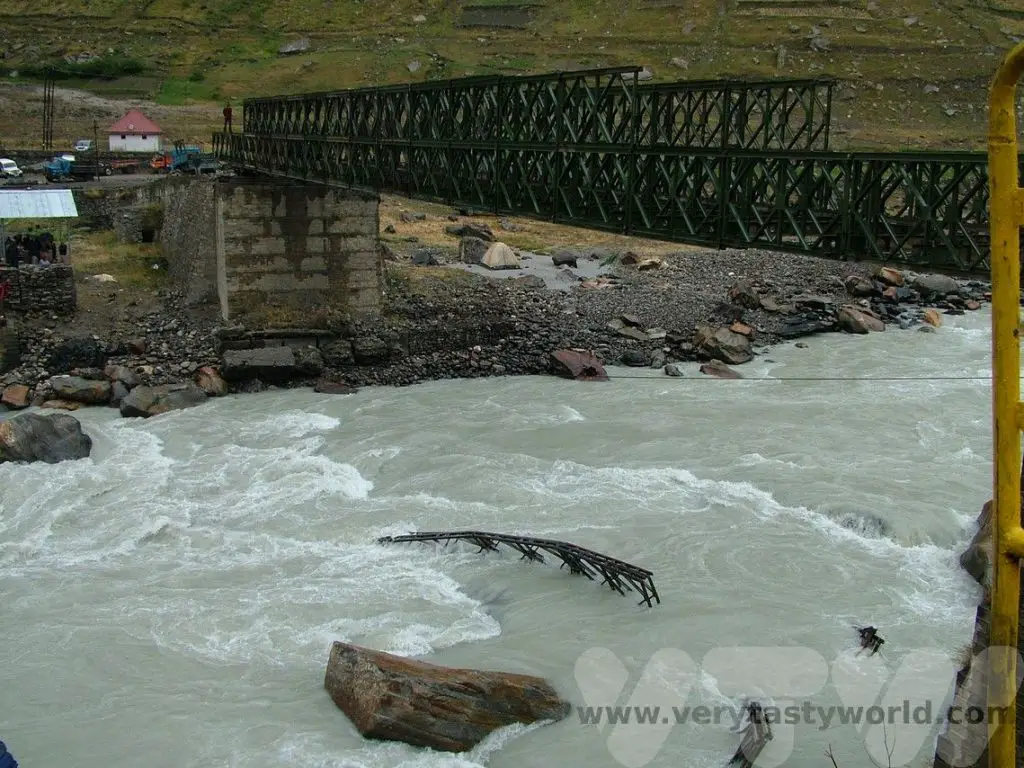
The result? One non-bridge slap-bang in the middle of the one of the world’s most inhospitable roads with ‘no-go’ season rapidly approaching and little opportunity to retrace our steps.
We had already travelled for two days. There wasn’t really any going back. It started raining. The ravine approached, with its considerable drop to rocks and fast flowing river, strewn with debris in busted and rusted decay. When we finally arrived at the crossing, the bridge was being slowly reassembled to make it safe to travel across the fissure of fear. Unfortunately it wouldn’t be ready in time for us to cross. But cross we must. Fortunately there was a solution.
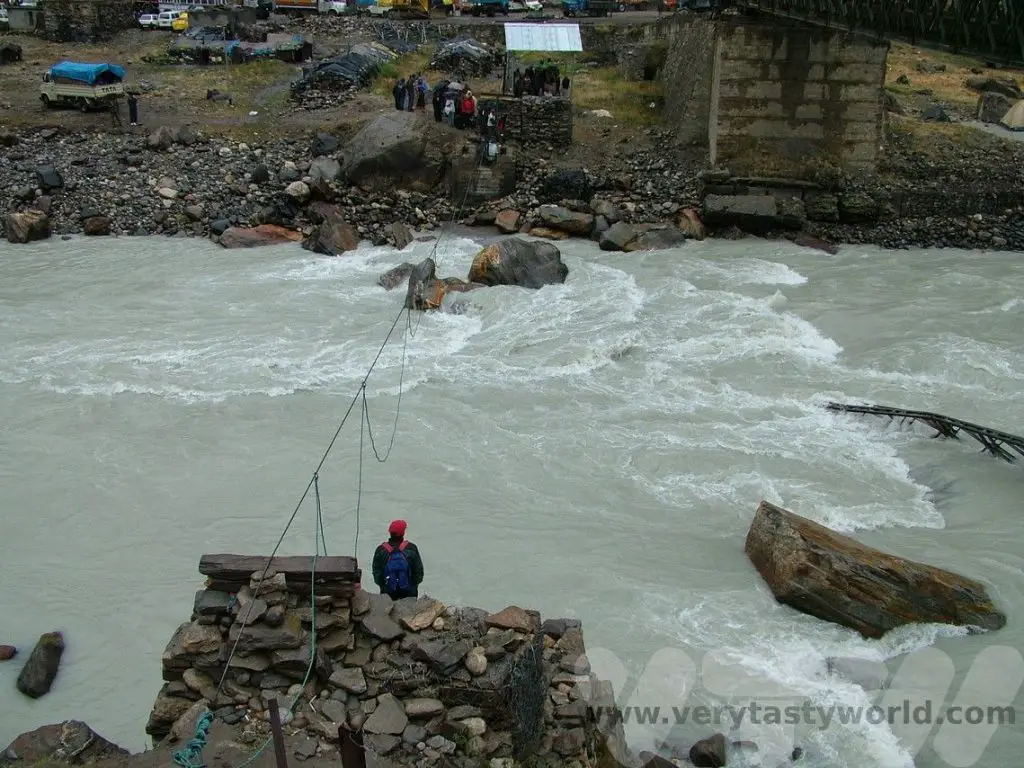
A petrifying solution that made rickety wobbling across a rusty bridge inside a heavy coach utter bliss compared to what was on offer: A cage. An open metal cage. A cage that needed to be accessed from the edge of a slippery jetty over a rocky fall. And then it was hoisted across the raging river on a rope, with the claustrophobic couple of passengers squished in together, along with their possessions, suddenly wishing they had packed less and not eaten so much. Horrifying consequences consolidated in the imagination as we were compacted in the cage of doom and pulled across the ravine in abject terror.
Fortunately these concerns proved to be unfounded as the cage glided across the turbulent torrent and deposited both human cargo and their luggage at the destination. Safe at last and on terra firma, rather than experiencing terror further. Soaked to the skin but with our lives and luggage intact, we dripped with joy. It’s a shame the coach didn’t make it (there was no cage and rope for the vehicle) but a back-up had been made available on the other side.
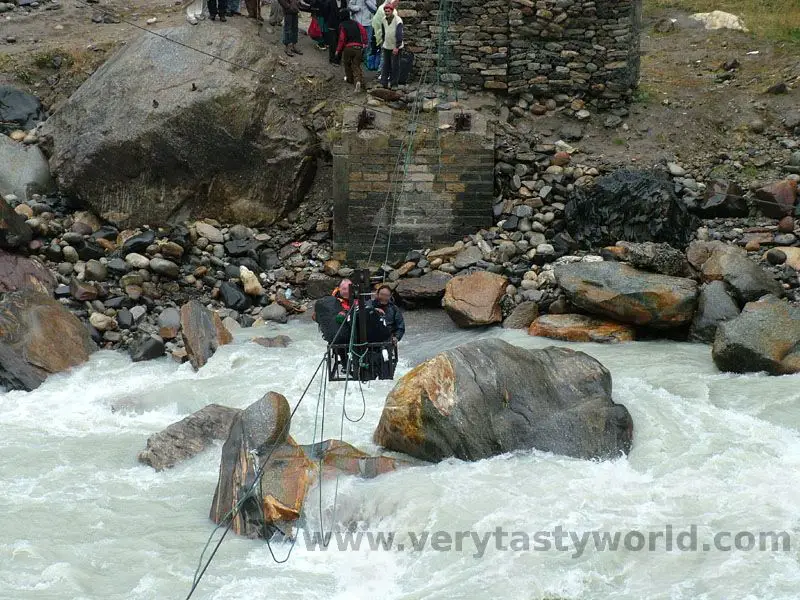
The experience had left us in much need of recovery sustenance. Fortunately for the ravenous rescuees there was a roadside café that offered a vat of dal and a plethora of freshly made chapatis that beckoned consumption. After such an ordeal any food may have been welcome, but this was the best tasting dal experience ever, the spice a delight, the texture a perfect consistency, with the forever welcome taste of fresh chapati allowing for distribution of the soupy lentil joy to instigate itself on the palette and in the stomach. Survival dal! A memorable meal.
Then it was simply a drive over the Rohtang pass (3977m)…
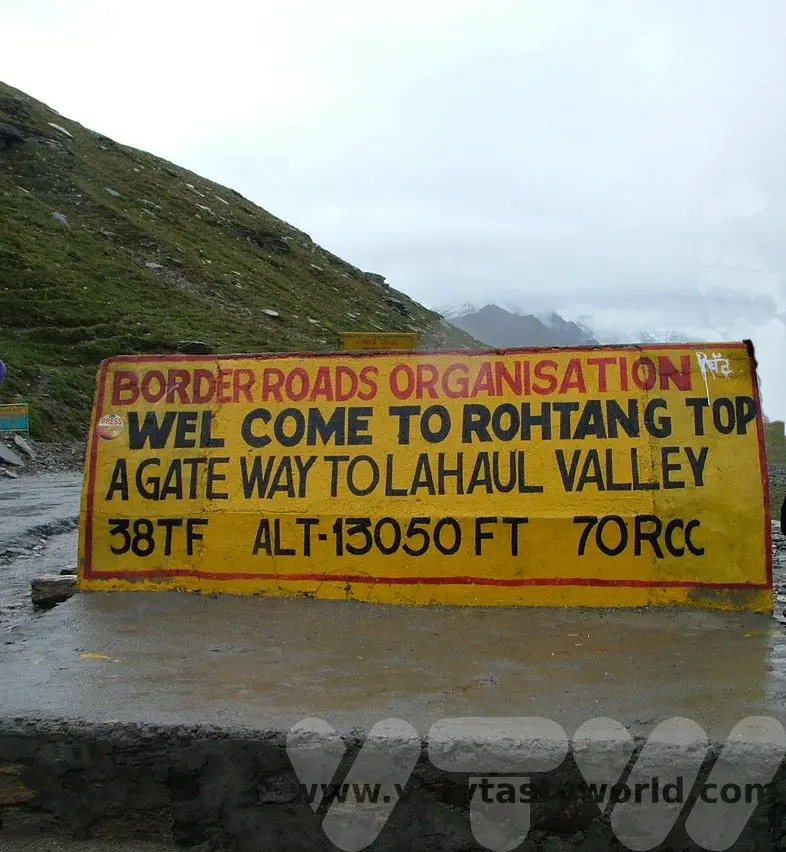
…and into the lush valleys of Himachal Pradesh towards Manali.
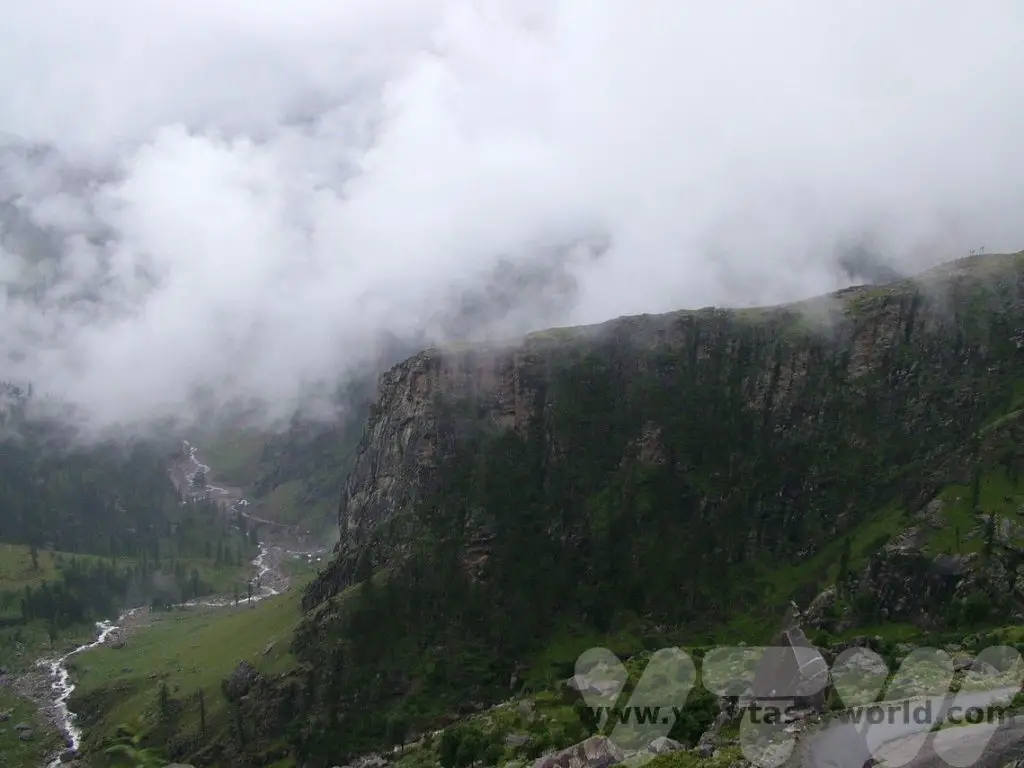
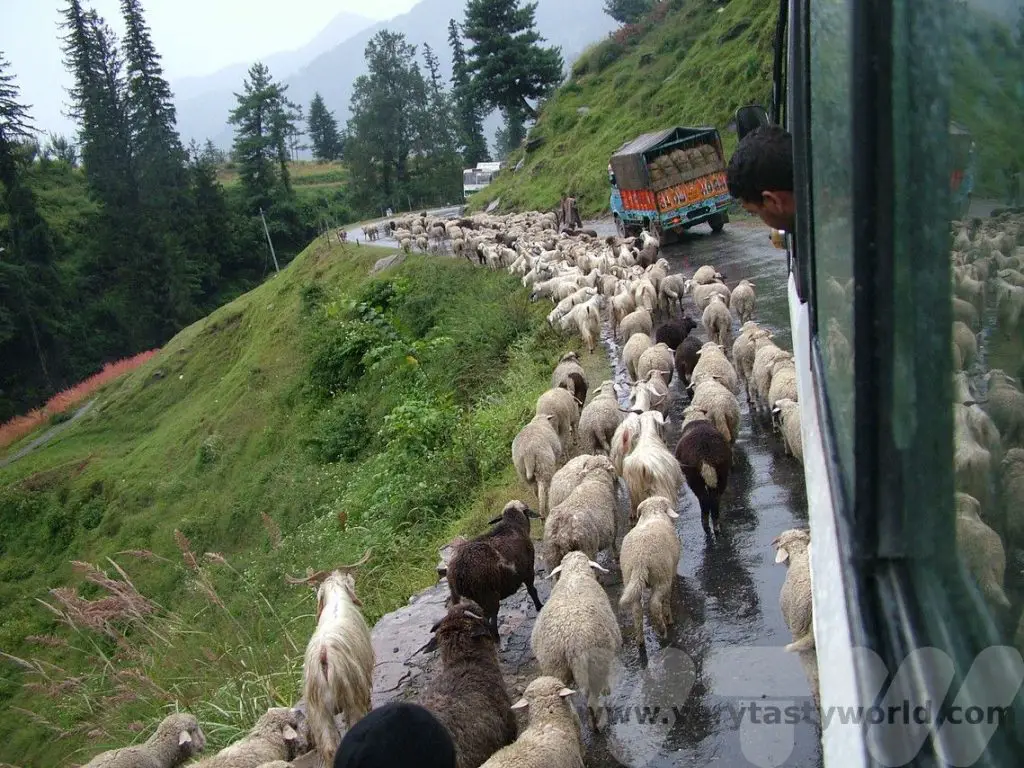
Related Posts You May Enjoy

Places to Visit in Munnar, Kerala
One of the most striking things about the state of Kerala in Southern India is how very green it is. A popular place to visit, it has spectacular scenery, interesting wildlife, fascinating culture and fantastic food. It’s no wonder that the locals call it ‘God’s Own Country.’ We toured the area for a week, visiting Athirappilly, Thekkady and Kumarakom, where we spent a very pleasant afternoon on a houseboat in the backwaters. The hill station near Munnar has the perfect climate and landscape for growing tea. At an elevation of 1500m the temperature is much more comfortable than the searing temperatures closer to sea level. There are lots of places to visit in Munnar and the surrounding area.
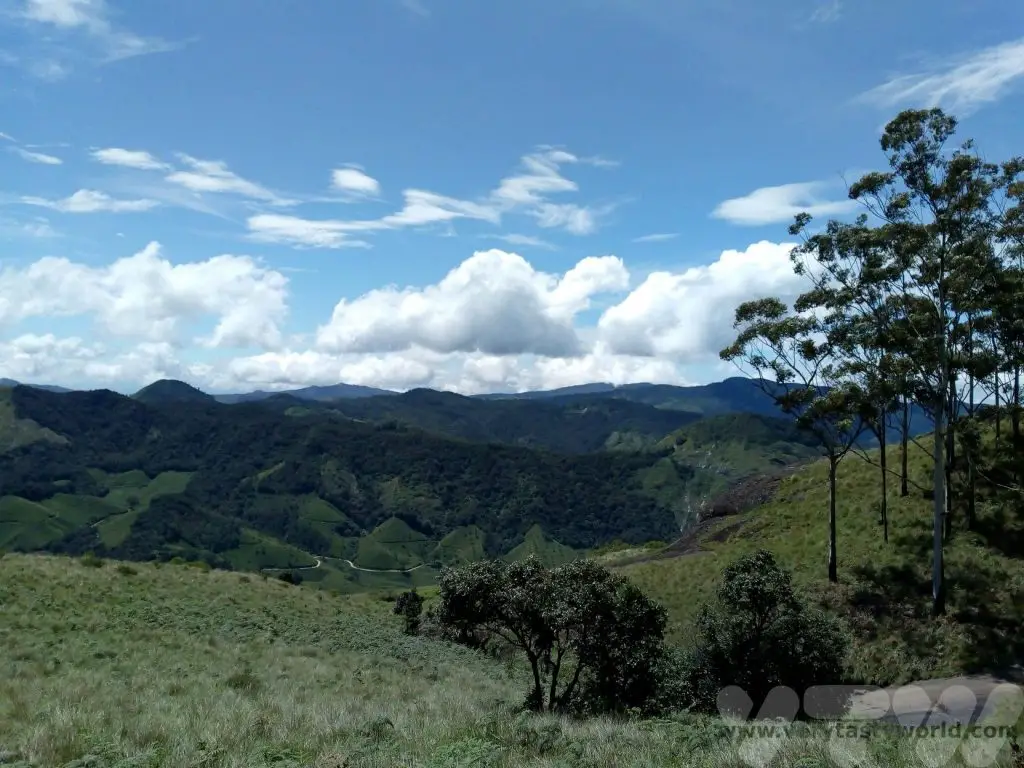
Places to visit in Munnar – Eravikulam National Park
The Eravikulam National Park is one of five national parks in Kerala and is home to a lots of wildlife, including the Nilgiri Thar, a type of goat which is seriously endangered and can only be found in any significant numbers in this area. There also are deer, monkeys, wild dogs, otters, mongooses, martens and porcupine as well as many species of bird and butterflies.
The park used to be a British game reserve during colonial times and was known for its rich hunting grounds. Later, the Kannan Devan Hill Produce Company managed the lands which were handed to the Kerala Government in the early 1970s. The Nilgiri Tahr had become almost extinct by 1972 and was placed on the endangered list so the park became a conservation area and achieved national park status in 1978.
The park is located around 15km away from central Munnar and you can either get a cab or hire a car/driver to reach it. Buses are available but less convenient. You can’t walk or drive around the area, private cars are not allowed inside the park and you have to catch a bus from the entrance car park. Just buy your tickets at the kiosk and join the queue. Beware that the queue may be long as it’s a popular place to visit. The bus ride is very scenic as it climbs the hill via a number of hairpin bends.
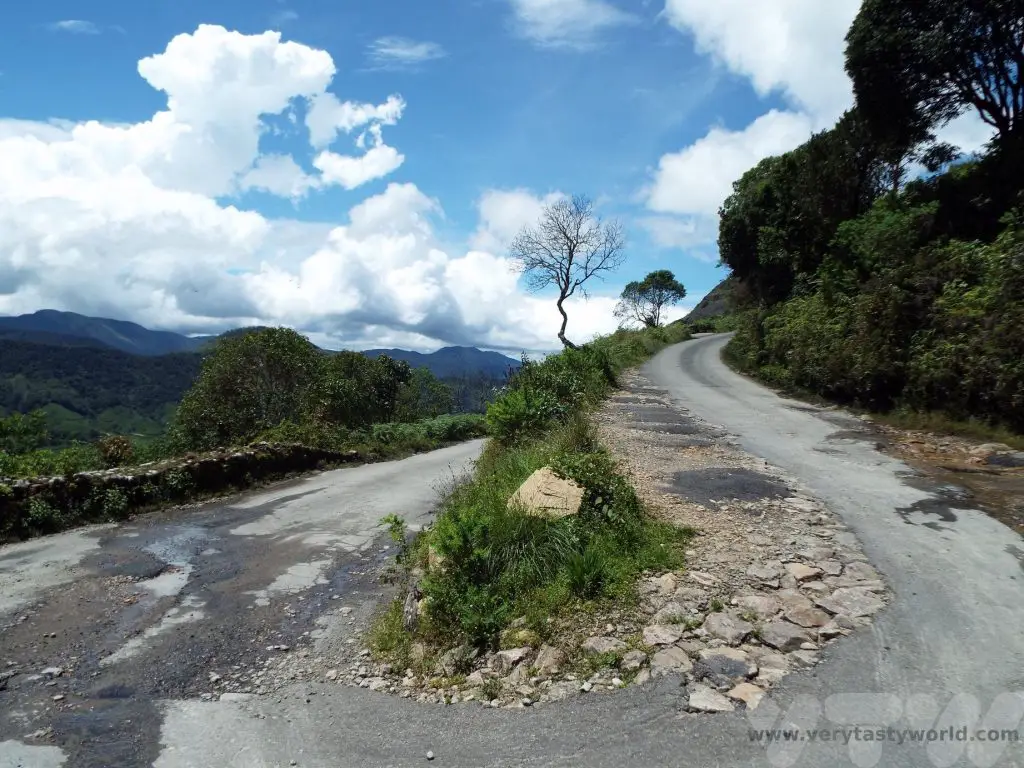
The wildlife wasn’t co-operating when we visited but the trip nevertheless offered a lovely walk with spectacular views.
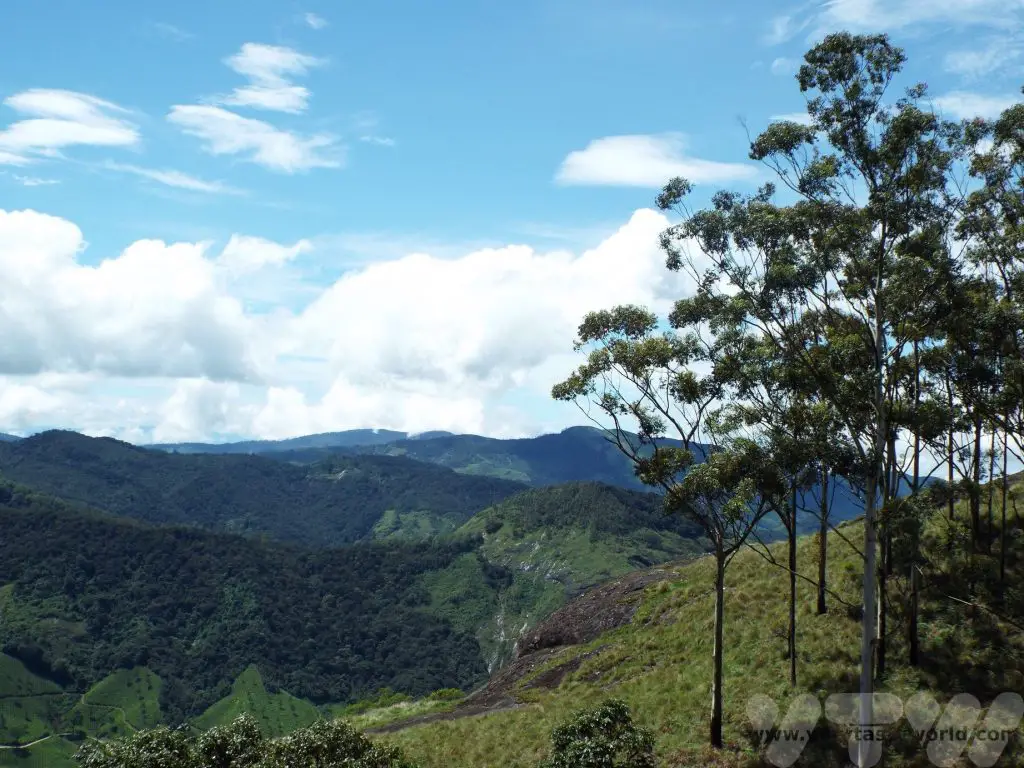
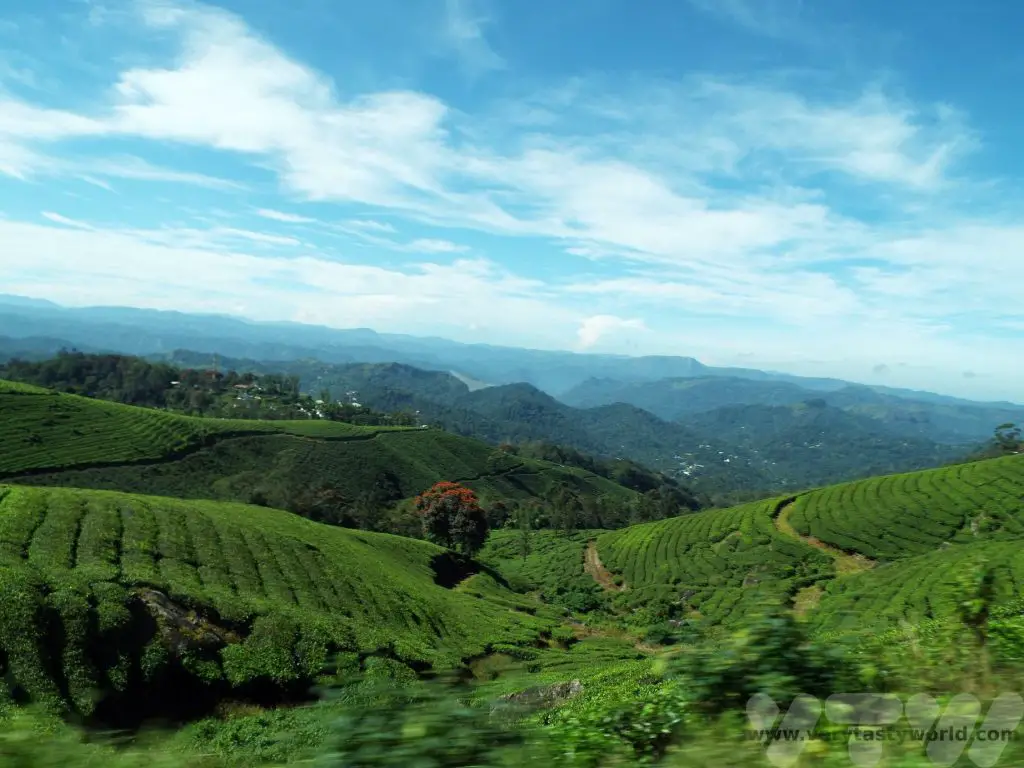
Visit the Rose garden
The Floriculture Centre, more commonly known as the Rose Garden, is worth a short visit if flowers and plants are your thing. You can wander through the terraces and have a look at the local flowers and plants.
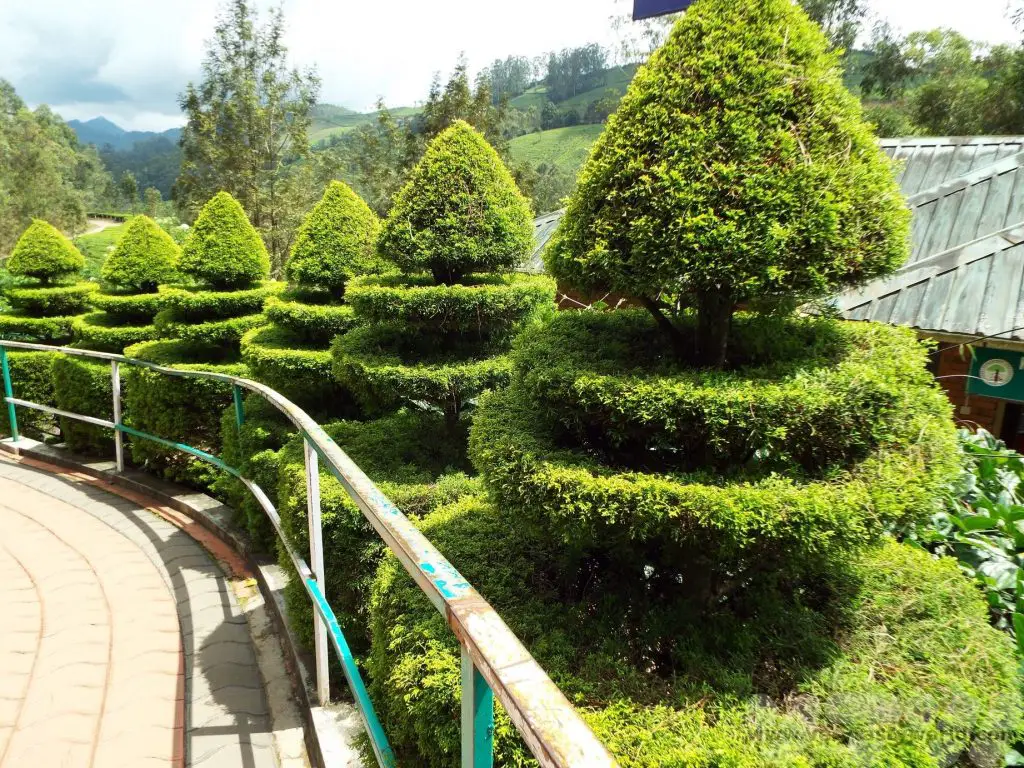
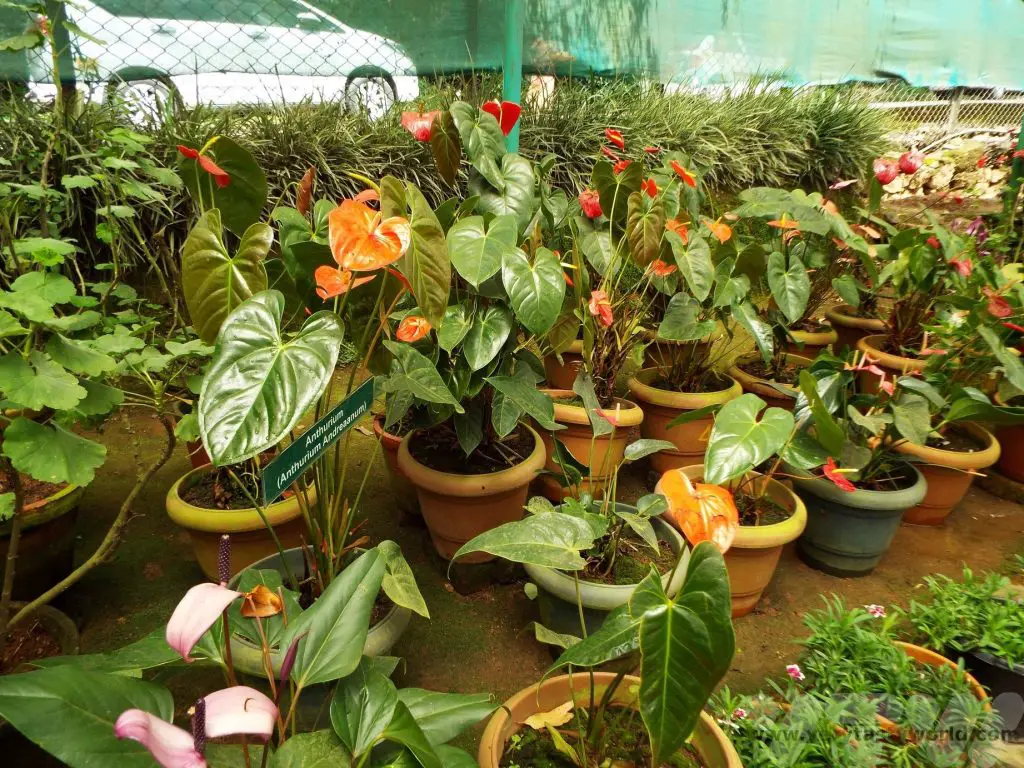
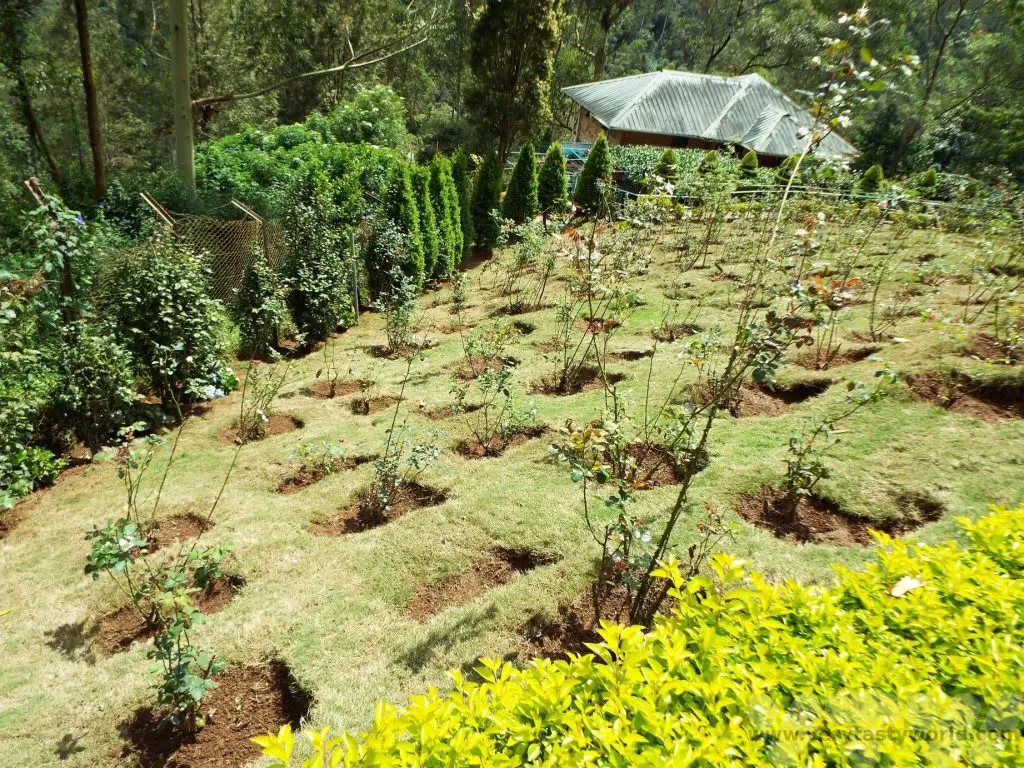
After lunch (you can read about thali here) we headed out through the countryside to visit the Mattupetty Dam and Kundala Dams. On the way to the Kundala Lake, we spotted a bunch of people gathering at the roadside with cameras and phones out and most definitely pointing in a particular direction. It’s always worth stopping to see what the crowds are looking at. And we were rewarded with the sight of a couple of wild elephants sauntering through the fields.
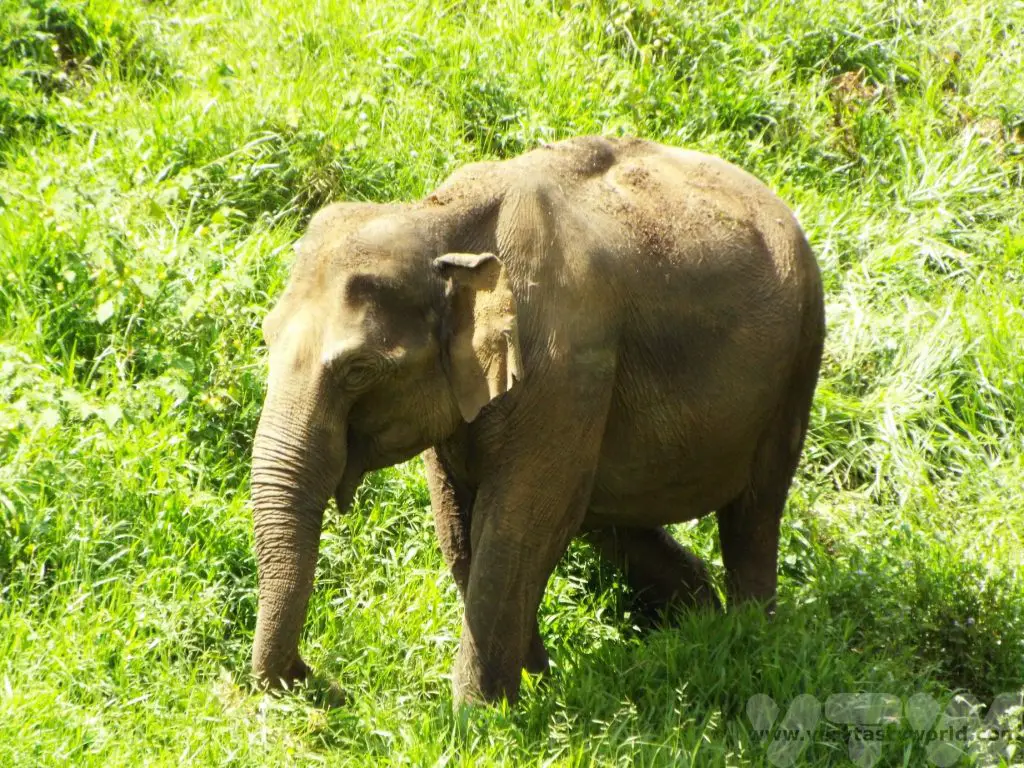
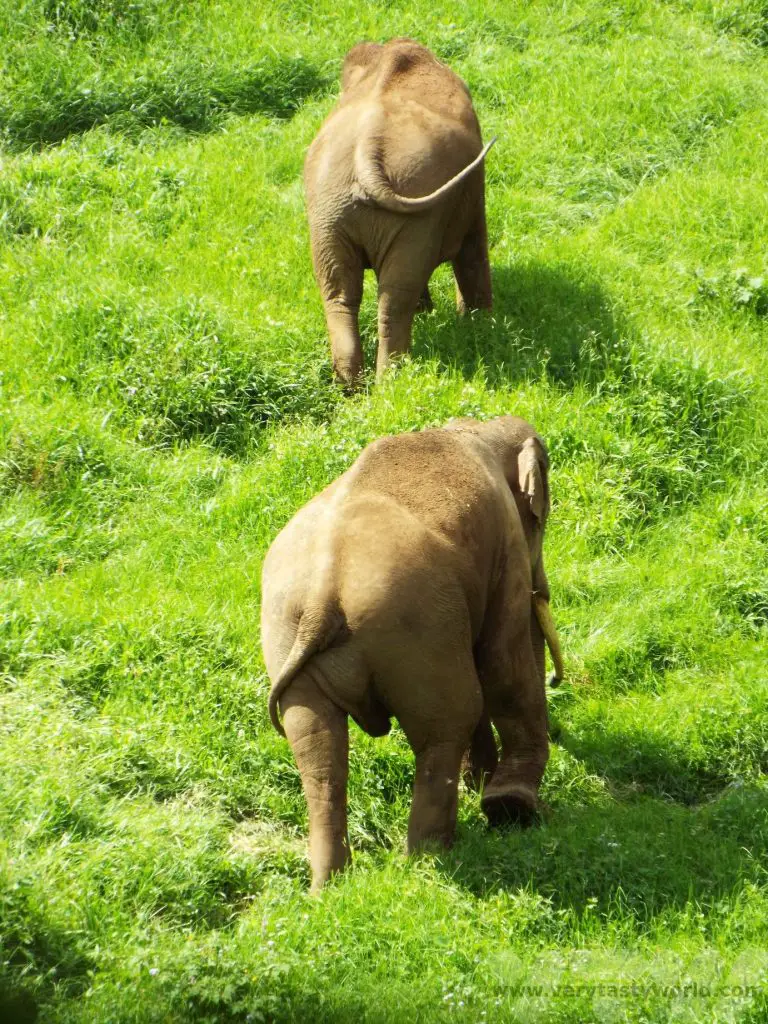
It’s possible to walk in the forests surrounding the lakes and across the dams.
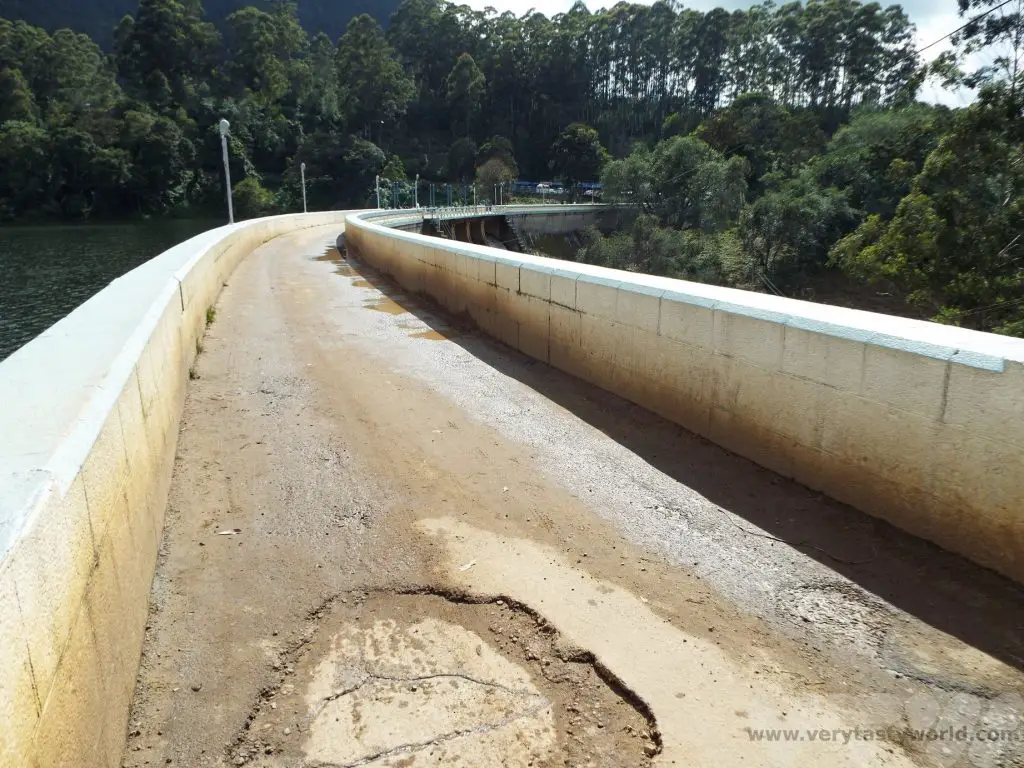
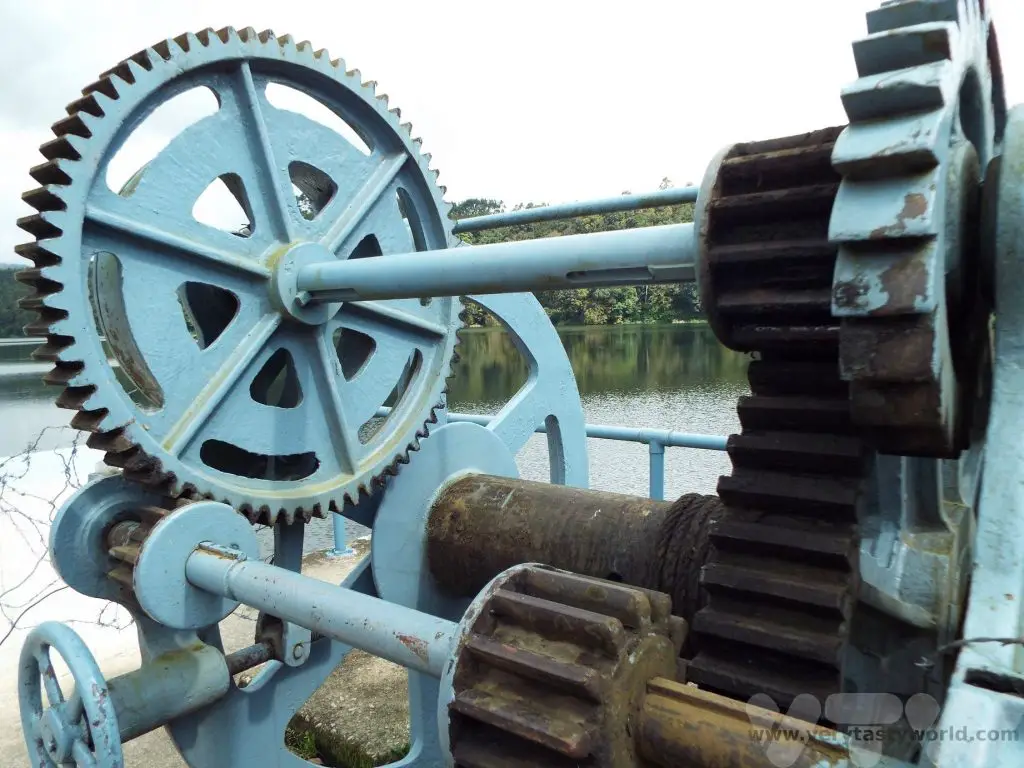
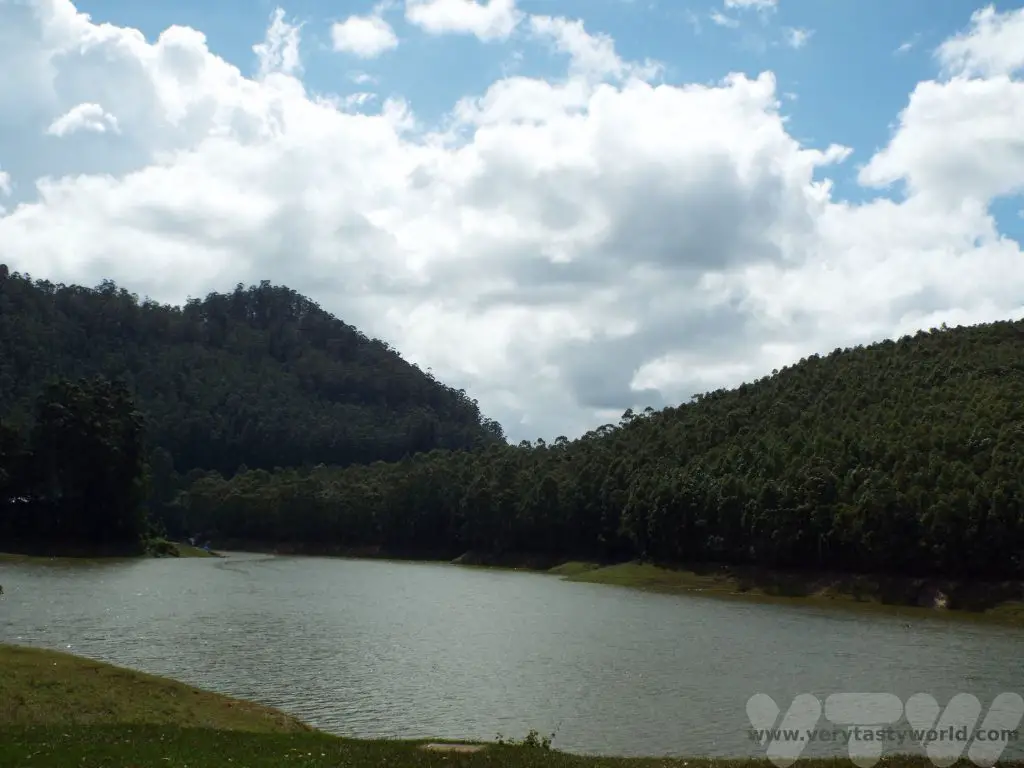
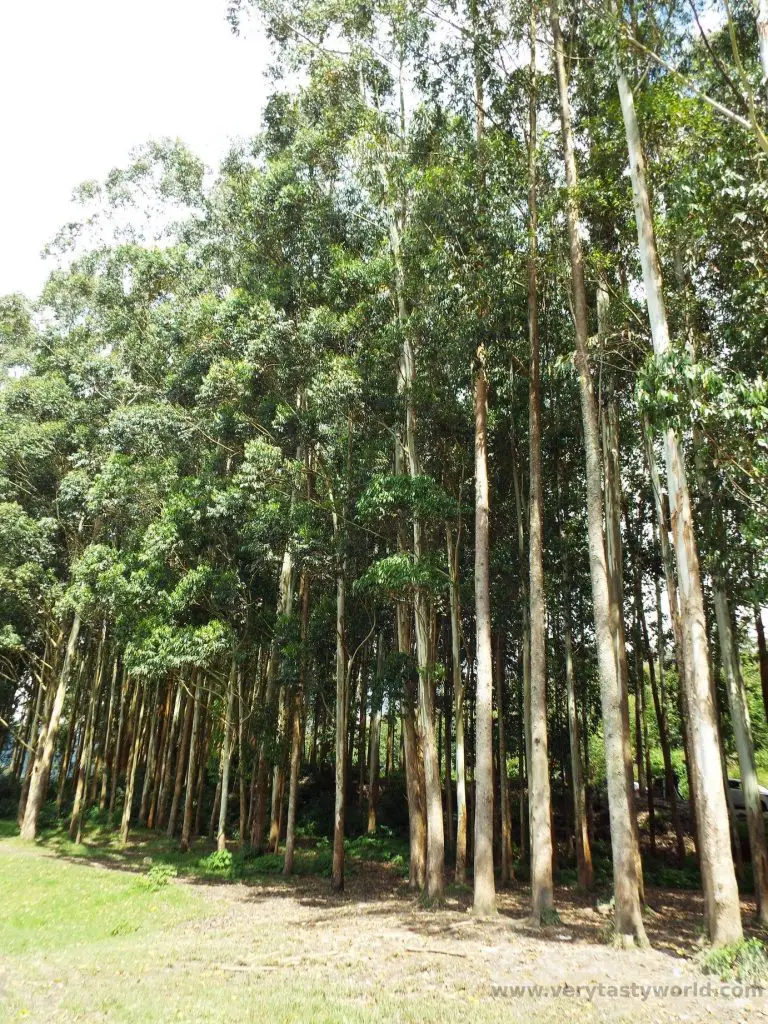
Tea and Spices
Tea plantations adorn the surrounding hills in all directions, each individual tea plant creating a pattern that dominates the landscape.
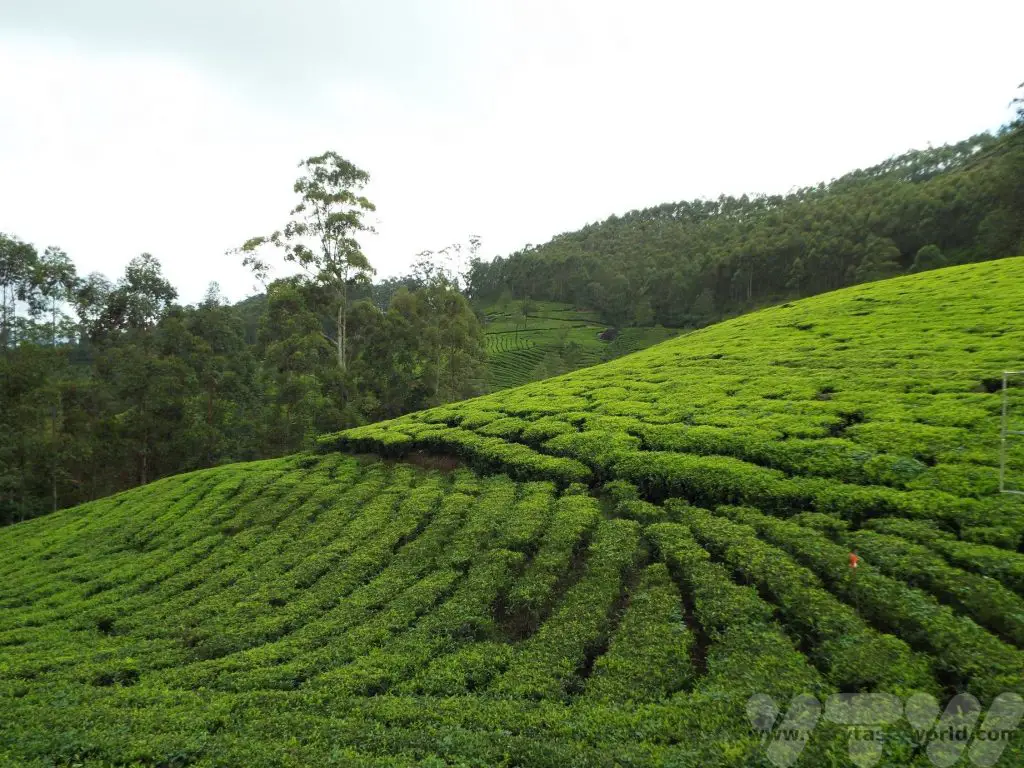
Tea plants like receiving lots of water but don’t like sitting in water, hence the plentiful rainfall in Kerala provides plenty of hydration and the hilly landscape is ideal for perfect drainage.
The tea is picked by hand. Only the top three leaves, which are the most tender, are used. There are a number of processing plants around Munnar. We didn’t have time to visit a tea plantation but did bring back some Munnar tea as a souvenir.
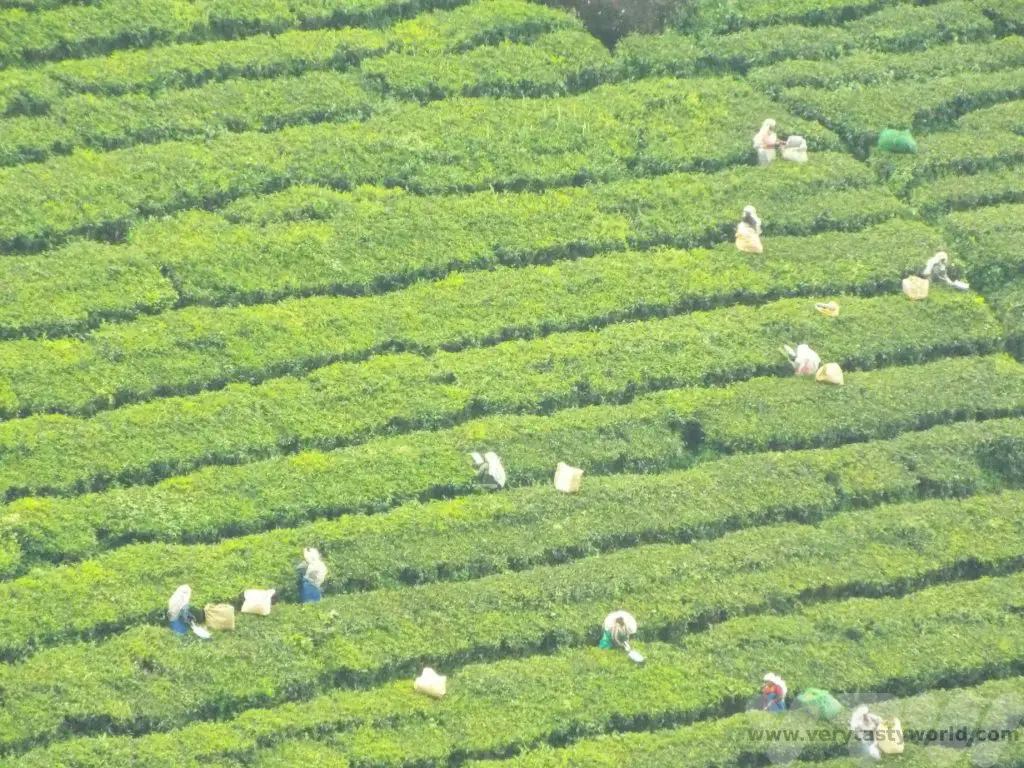
Kerala is also famous for its spices. Keralan cuisine is amazingly good – all the dishes we tried were beautifully flavoured. Many of the spices grown can be used in both savoury and sweet dishes. We visited a spice plantation, in the pouring rain (thankfully they loaned us umbrellas) and saw a number of plants that are used for culinary and medicinal purposes.
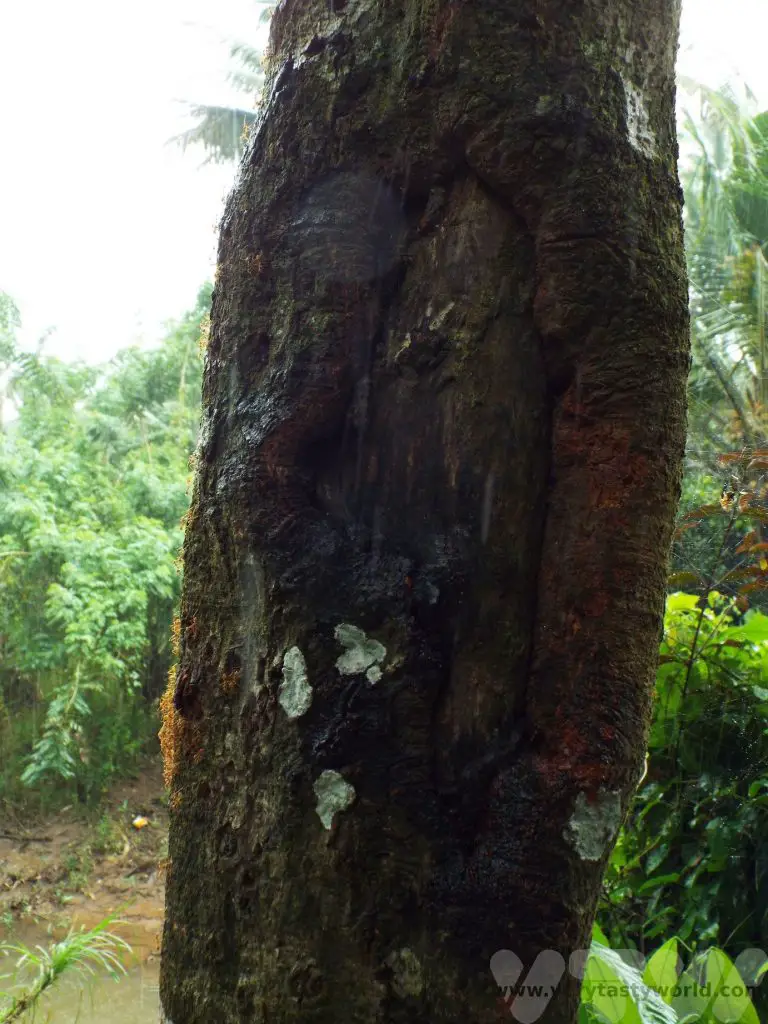
Cinnamon comes from the bark of the tree. Peel it off and it curls up into those familiar scrolls.
Allspice is a very apt name. If you smell and taste: think of nutmeg. Yes! Think of cinnamon. Yes! Think of cloves. Yes! It really has a flavour that can emulate many different spices and is a great all-rounder.
Cardamom is an amazingly aromatic spice. It actually grows at the base of the plant in little pods.
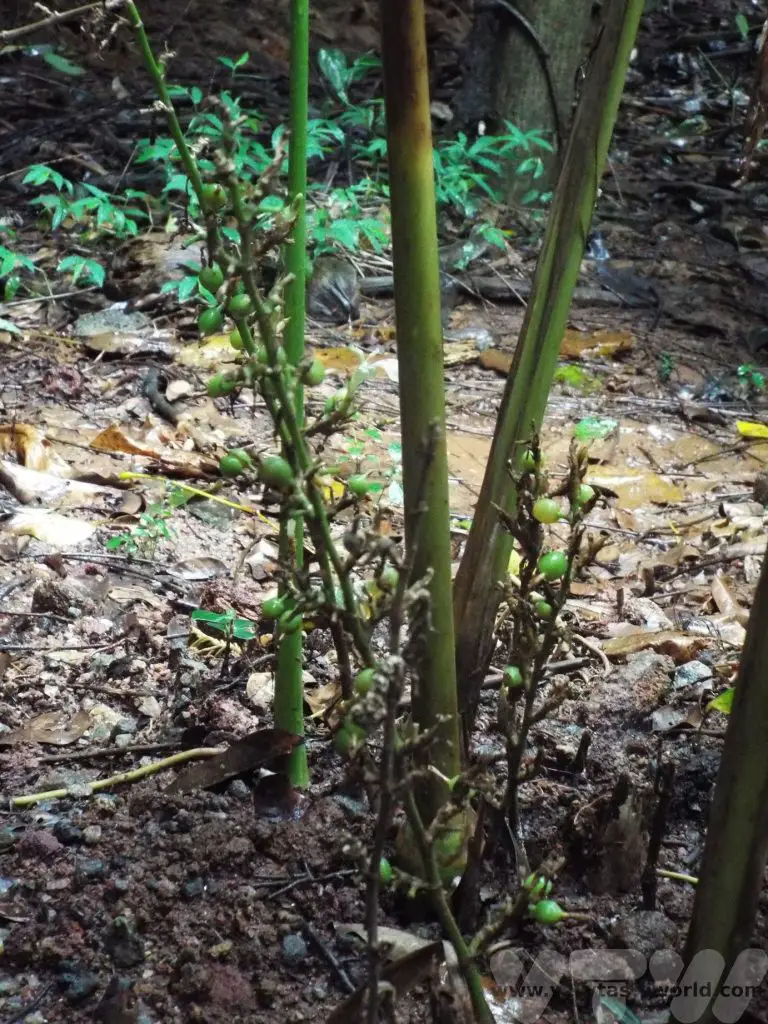
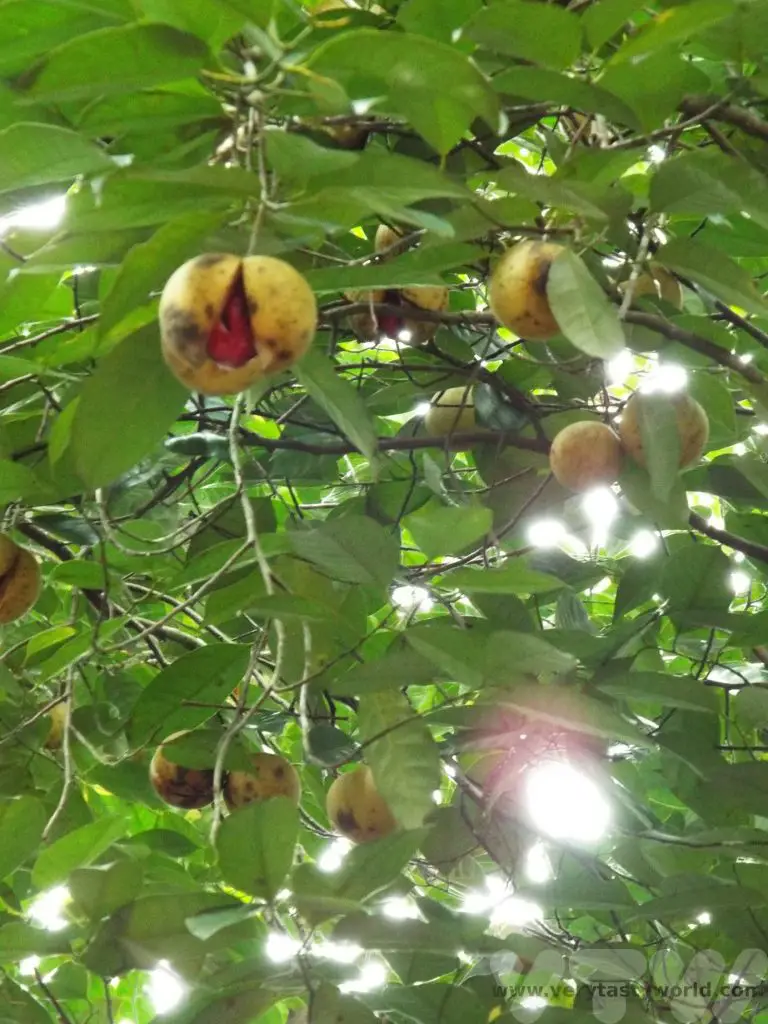
Nutmeg and mace. Mace is the outer ‘skin’ of the nutmeg – you get a milder nutmeg taste with a more citrusy flavour.
Cloves add a real fragrance to savoury dishes. They also have a numbing effect and are a traditional remedy for toothache.
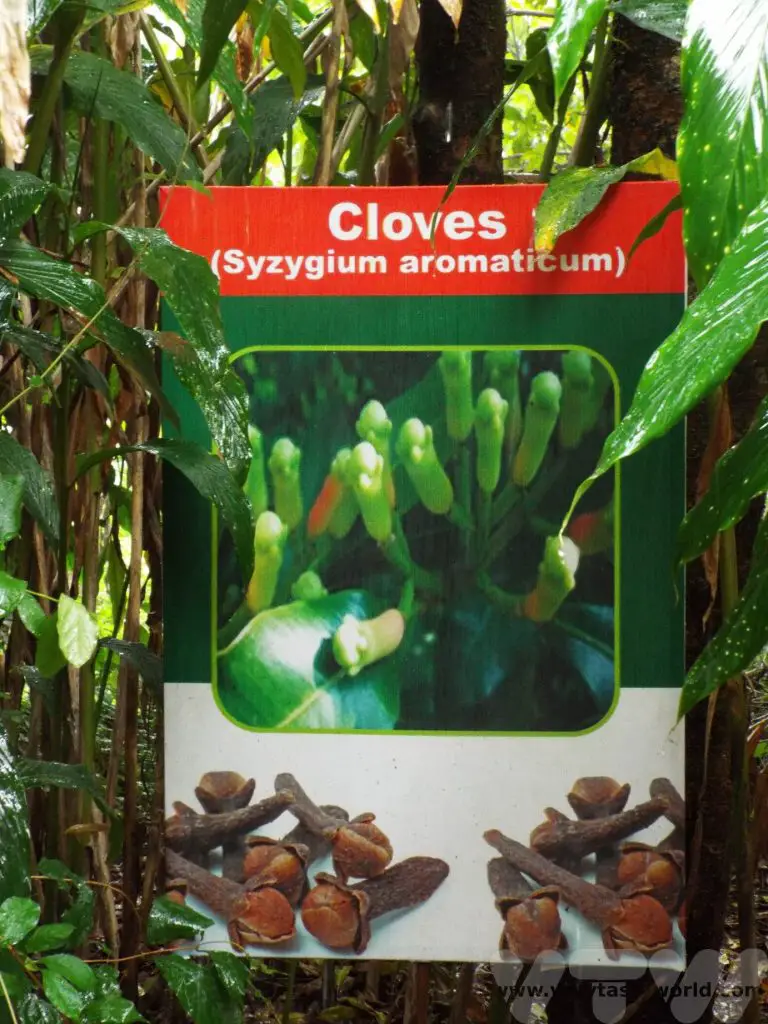
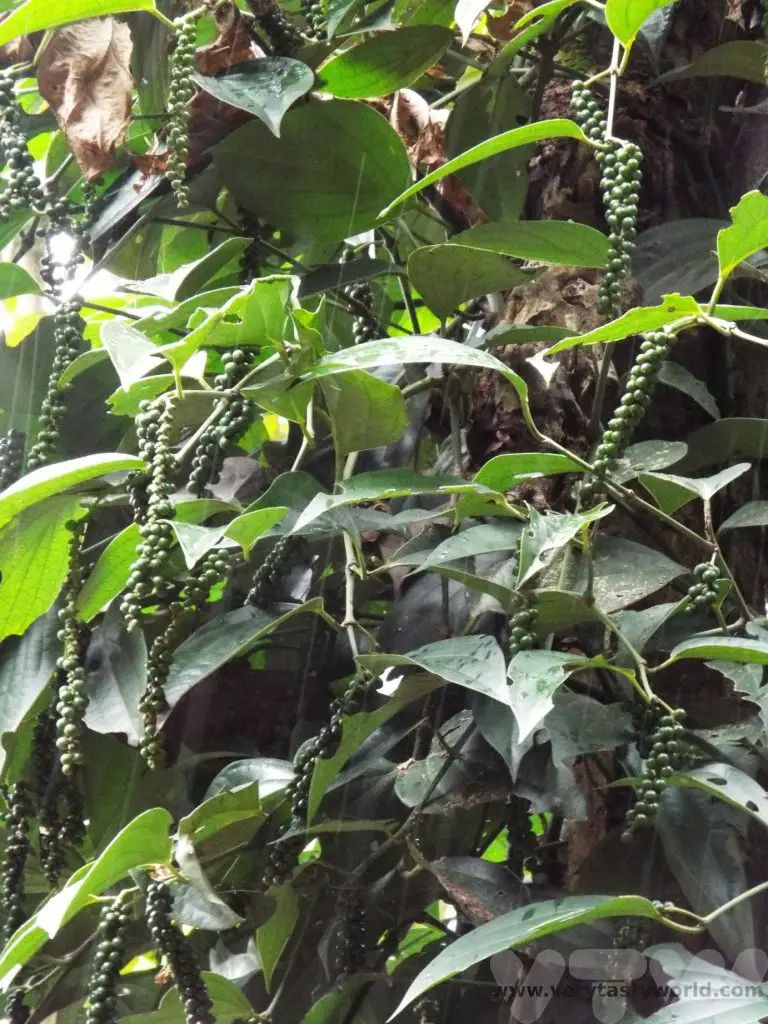
Peppercorns are native to Kerala and have been used in Indian cooking since at least 2000 BCE. Once the most valuable spice in the world, pepper can be eaten in its many different forms (albeit the same fruit of the tree): green peppercorns are the unripe fruit of the pepper tree. When they turn red they are ripe. Black and white peppercorns are, likewise, both the same fruit of the pepper plant, but are processed differently. Black peppercorns are picked when the fruit is almost ripe and then they are sun-dried, and this turns the outer layer black. White pepper is the peppercorn without the skin. It’s the black skin that has the distinctly peppery flavour elements. If you want heat but not the flavour, white peppercorns are the one to use.
We purchased some of the spices, particularly those that are expensive to buy at home. They make ideal souvenirs as they easily slip into any spaces your backpack and ours have been used extensively since our return home.
Places to Visit in Munnar – Kathakali and Kalaripayattu performance
We made our way to the Punarjani traditional village to see a Kathakali and Kalaripayattu performance in the early evening.
Kathakali is a form of classical Indian dance which tells a story, often based on traditional legends, Hindu mythology and Indian epic stories. There is a narrative but no dialogue – dance, mime and song are the means by which the story is told. Artists spend several years training at specialist schools in order to develop their skills. The expressive performance is emphasised by the spectacular costumes and make-up, which can take around 3-5 hours to apply.
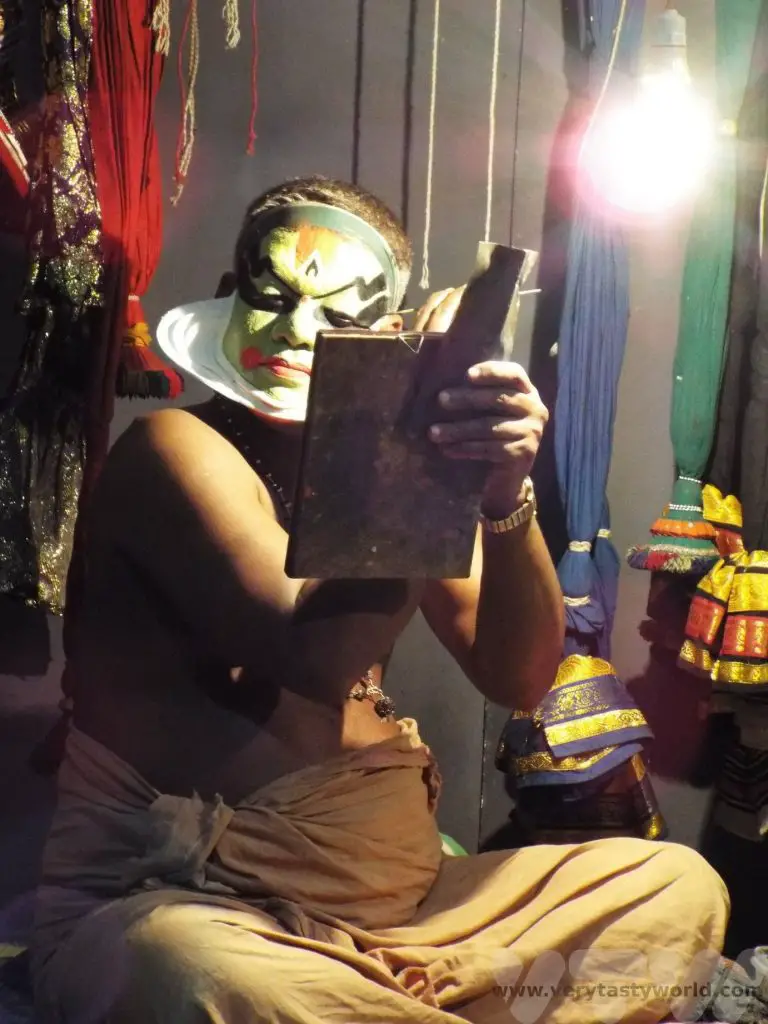
It is worth arriving early for the performance because you are often allowed backstage to watch the performers apply their remarkable make-up.
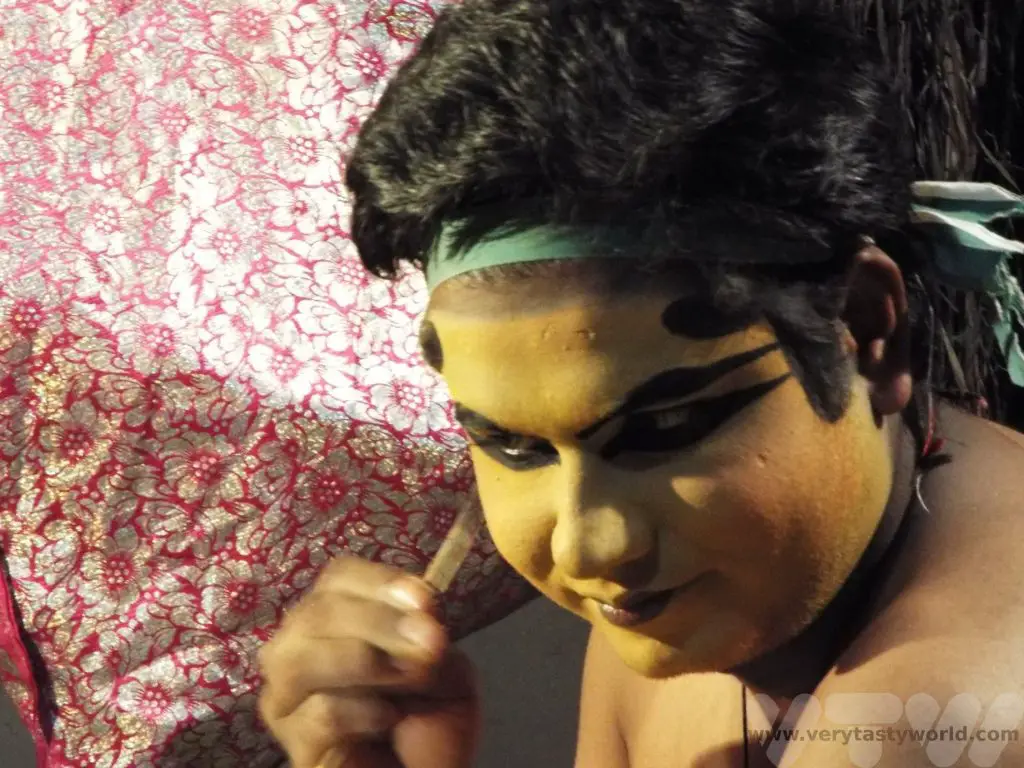
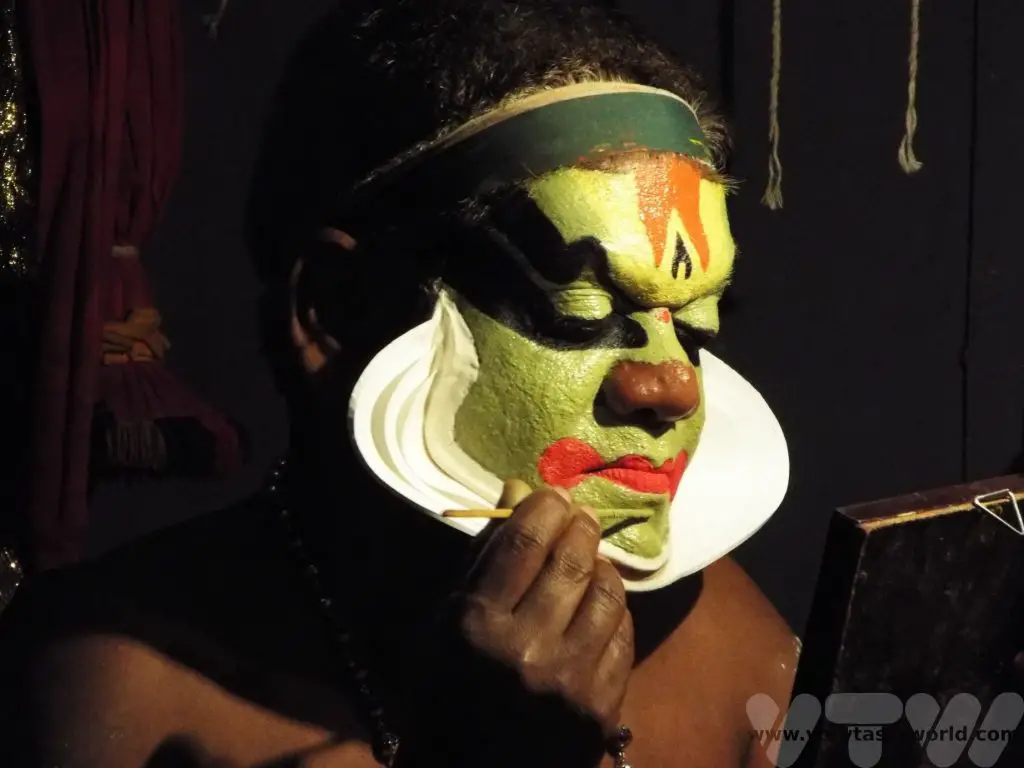
You have a choice of seating and if you sit in the stalls there’s a possibility that you may be called up on stage to take part in the performance. It’s largely mime-based so no need to worry about any language skills.
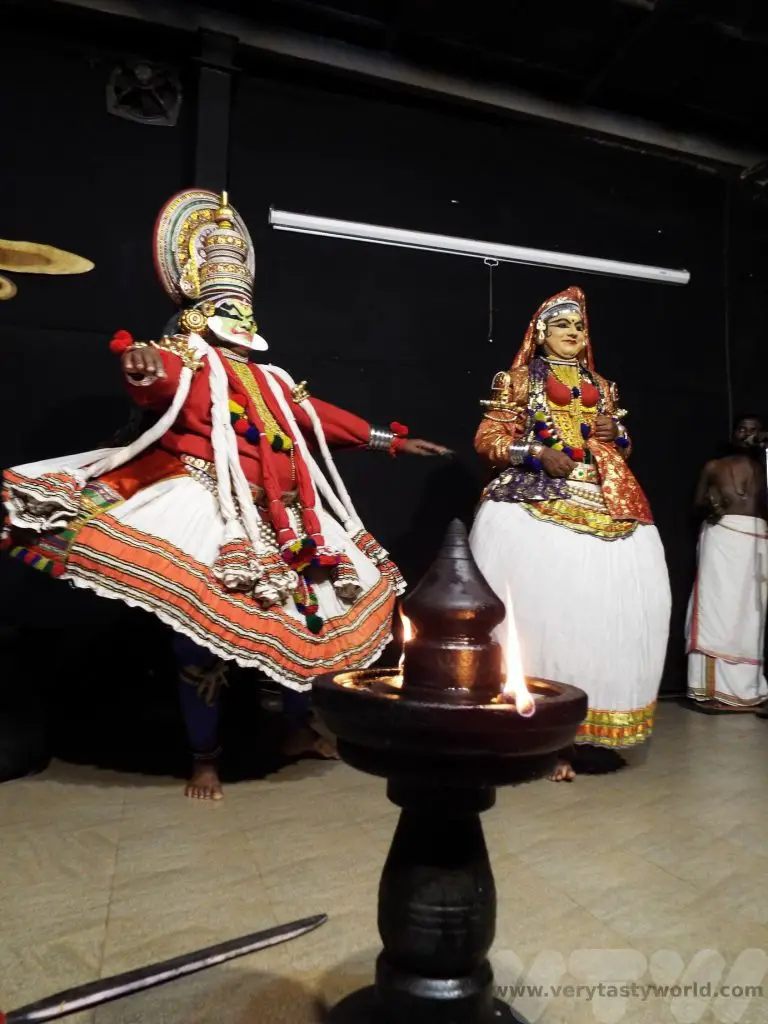
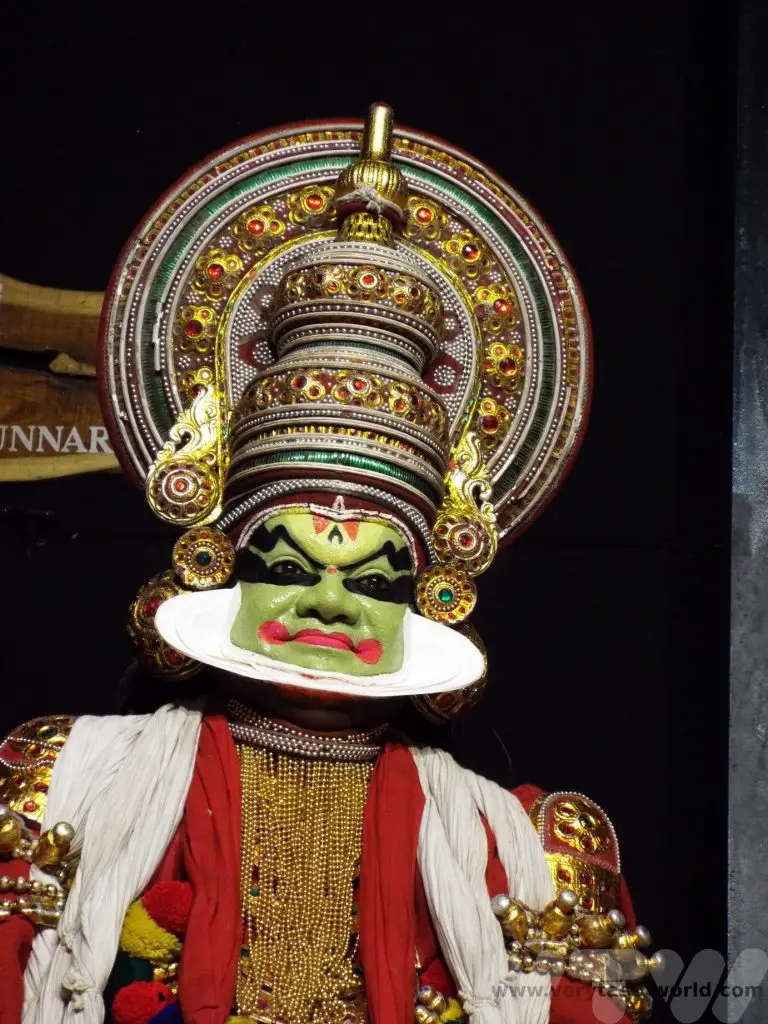
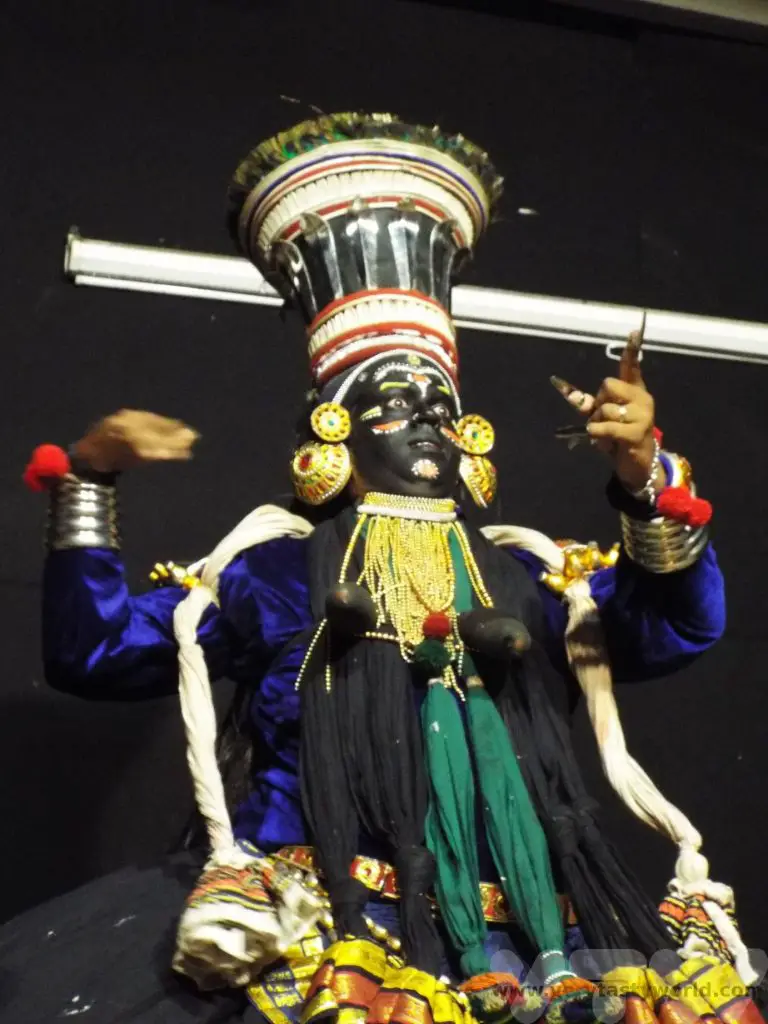
The Kathakali lasts around an hour and, if you wish, you can then watch a Kalaripayattu performance in an adjoining theatre. This is a form of Indian martial art, indeed it is one of the world’s oldest martial arts, and is spectacular to watch. It is highly acrobatic and uses a number of weapons. The demonstration is lively, exciting and occasionally scary!
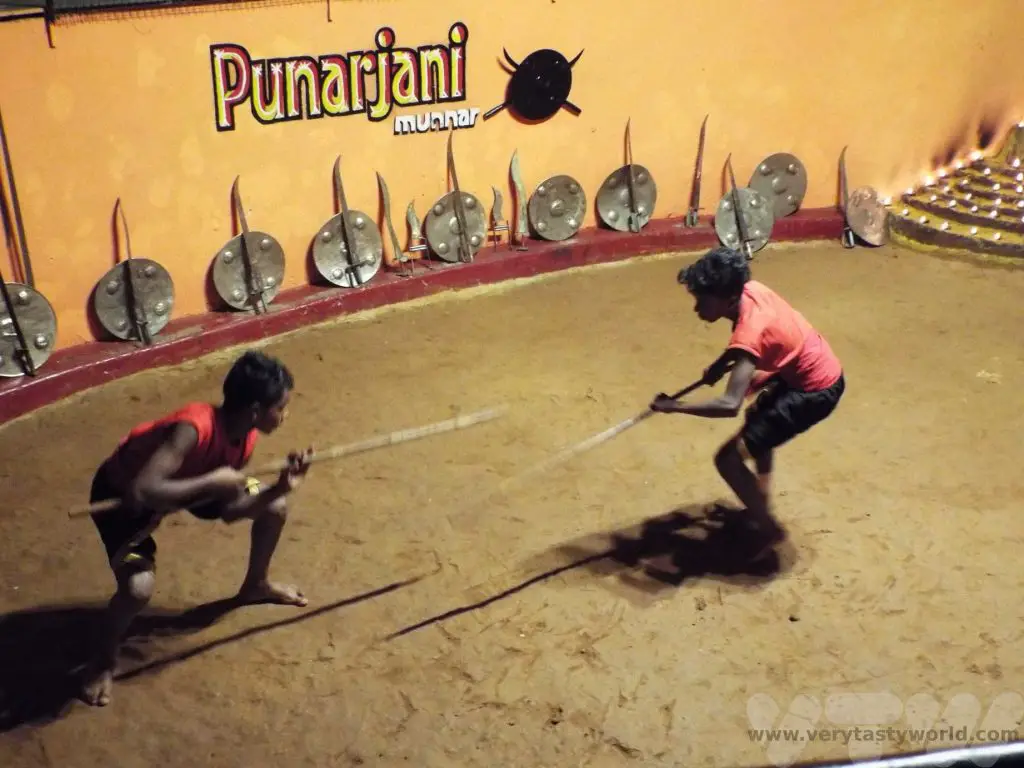
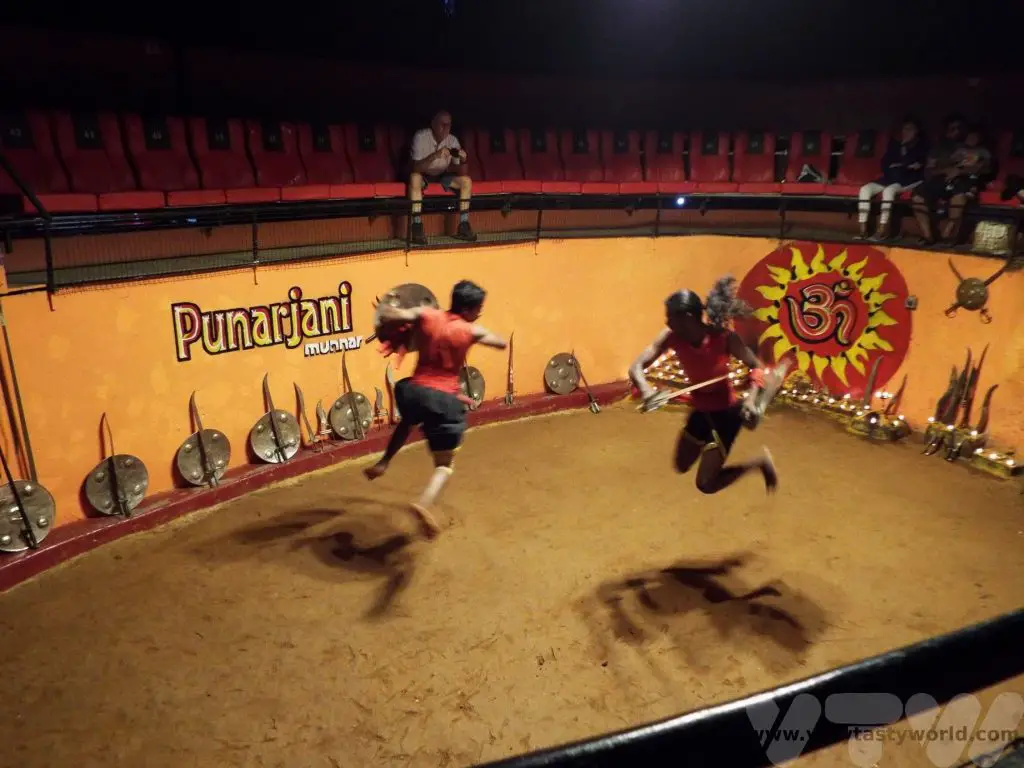
Eating in Kerala
All the meals we ate in Kerala were completely brilliant. Because of the diversity of the region both vegetarian and non-vegetarian meals, featuring fish, poultry and red meat, are readily available. The fish dishes are particularly good, using locally caught fish from the rivers and the sea. The food is delicately flavoured with local spices – all the spices we encountered at the plantation featured heavily, notably black pepper, clove, cardamon, cinnamon and ginger. Here are some of the dishes we tried.
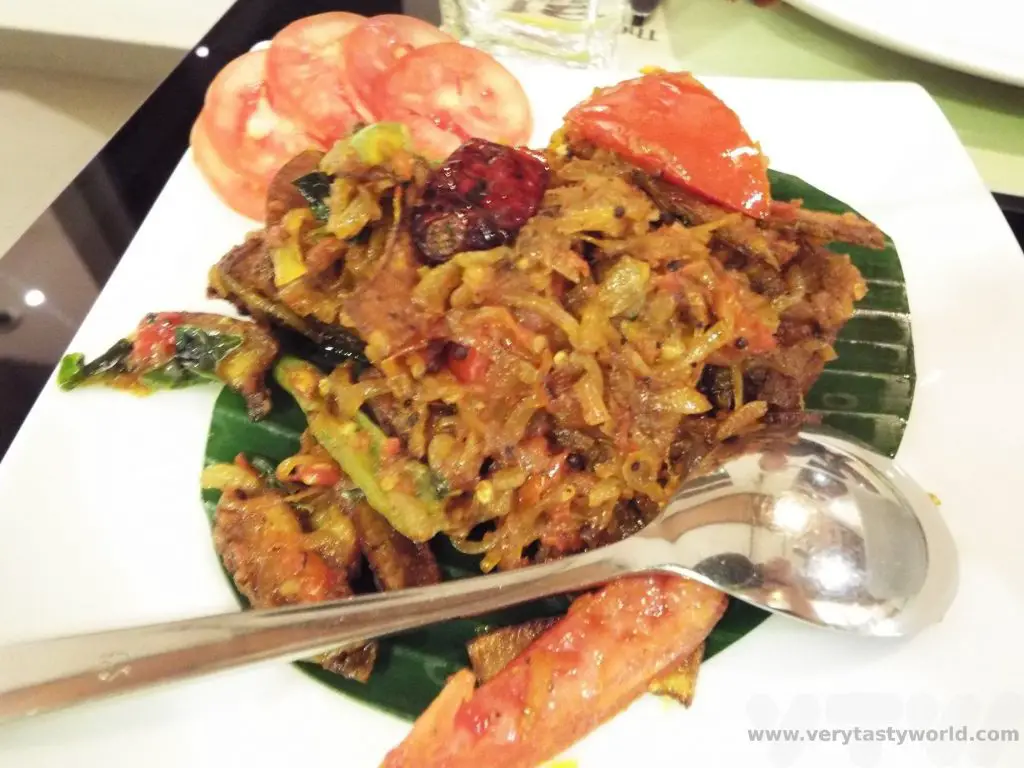
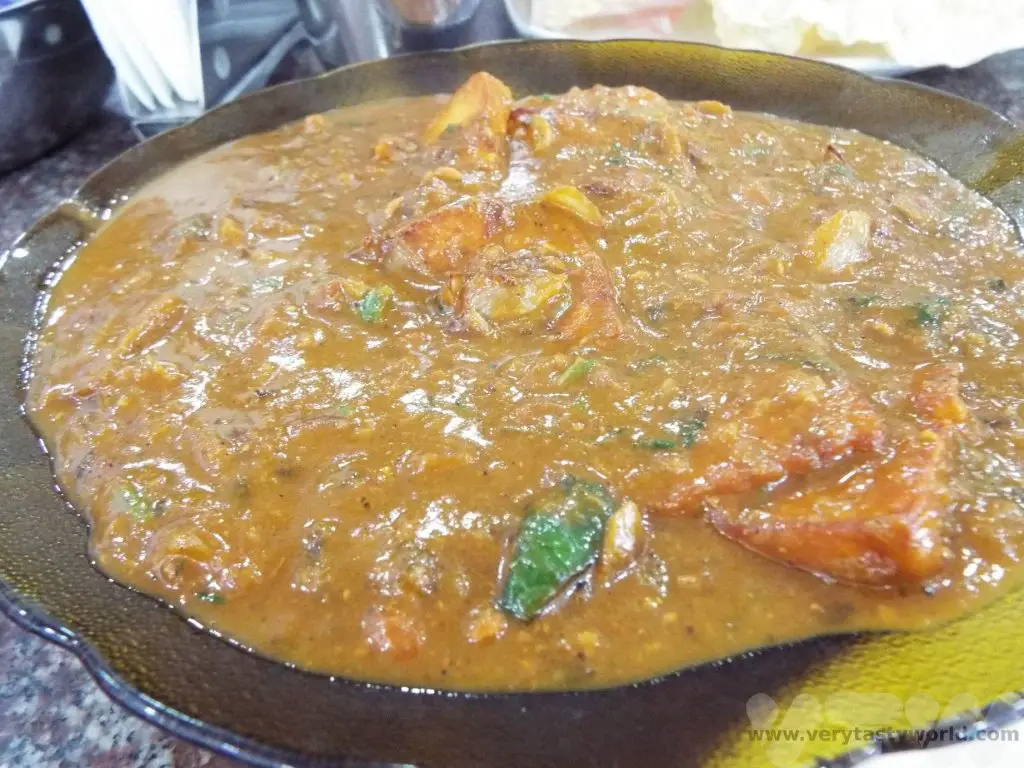
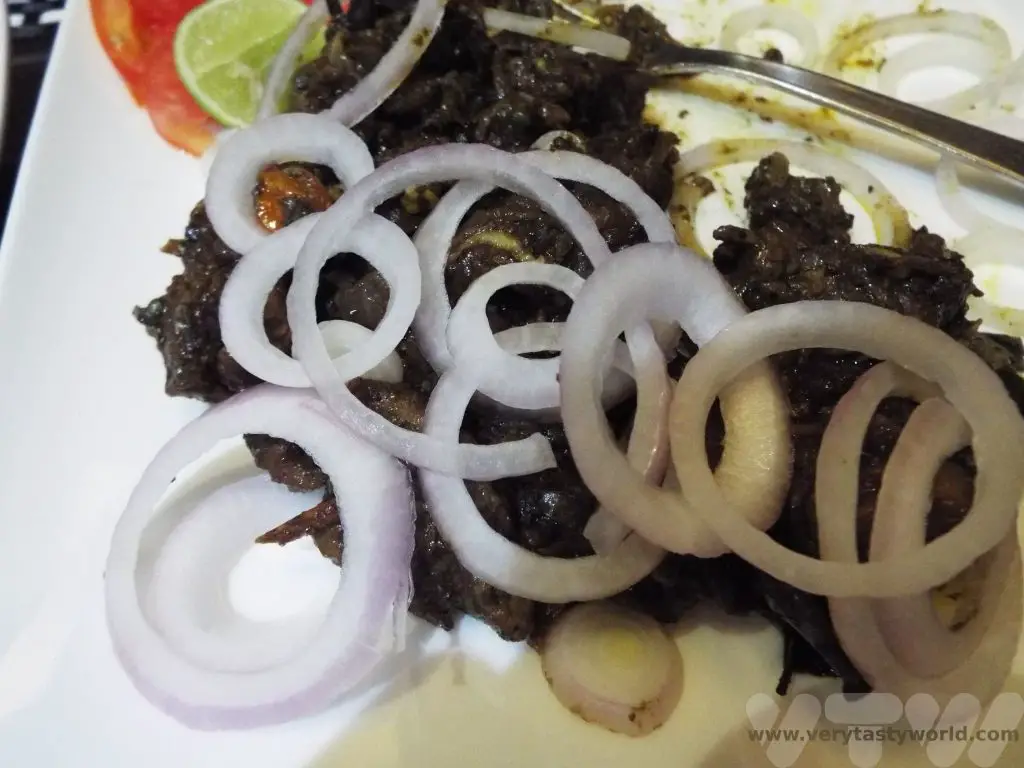
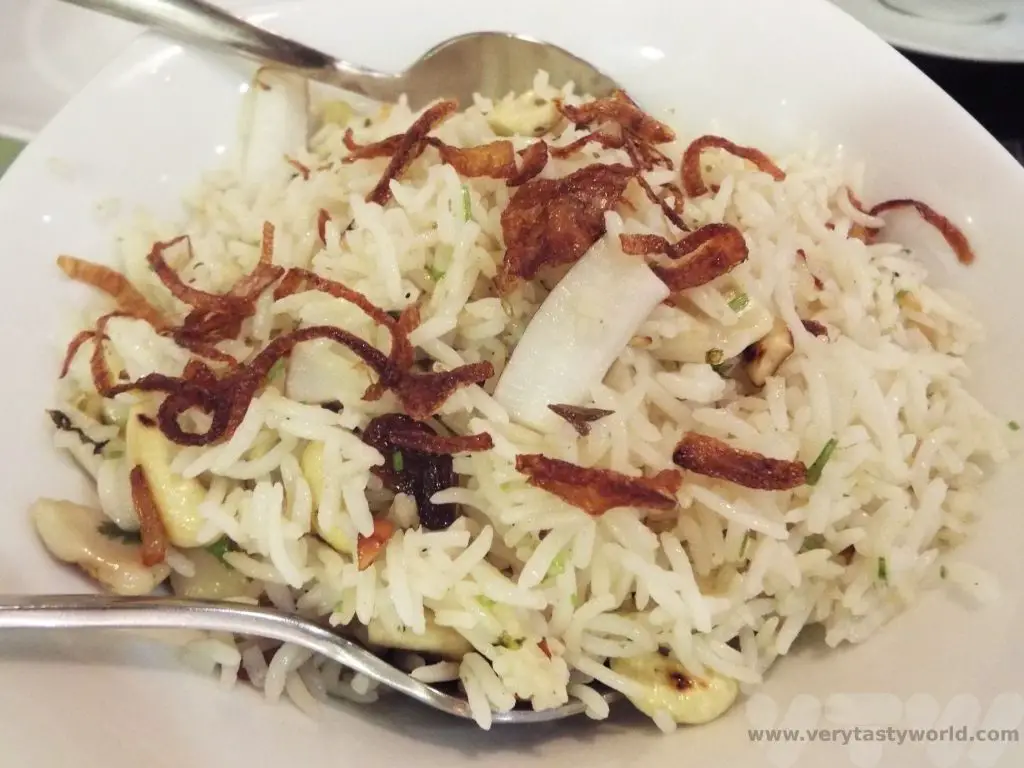
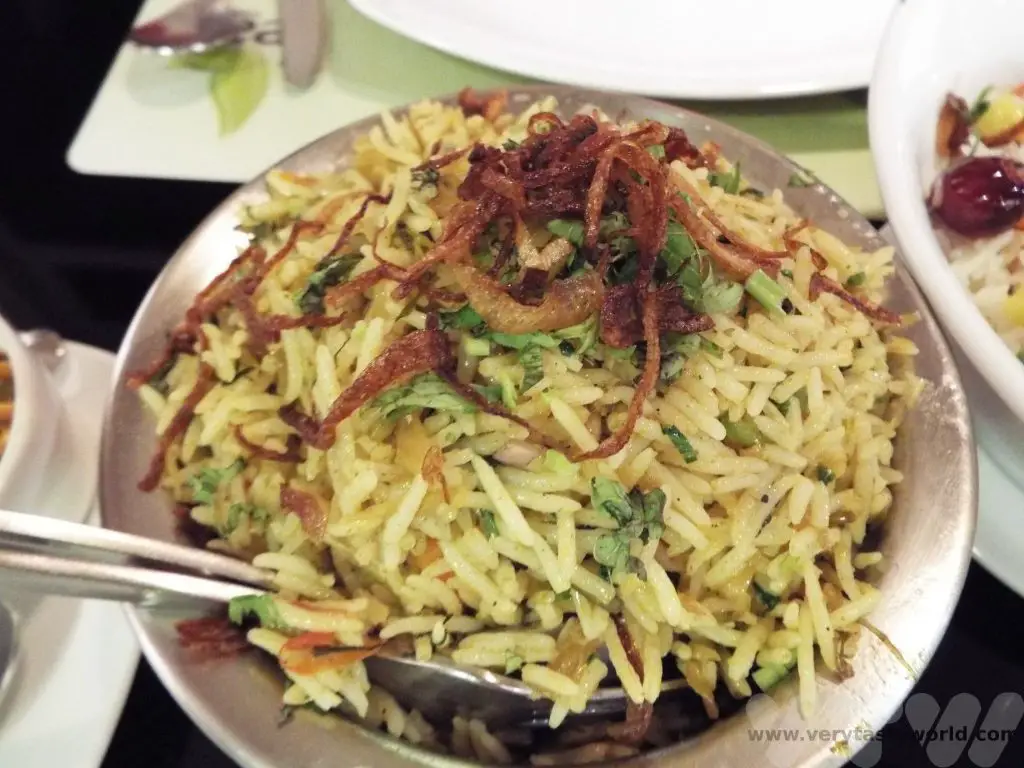
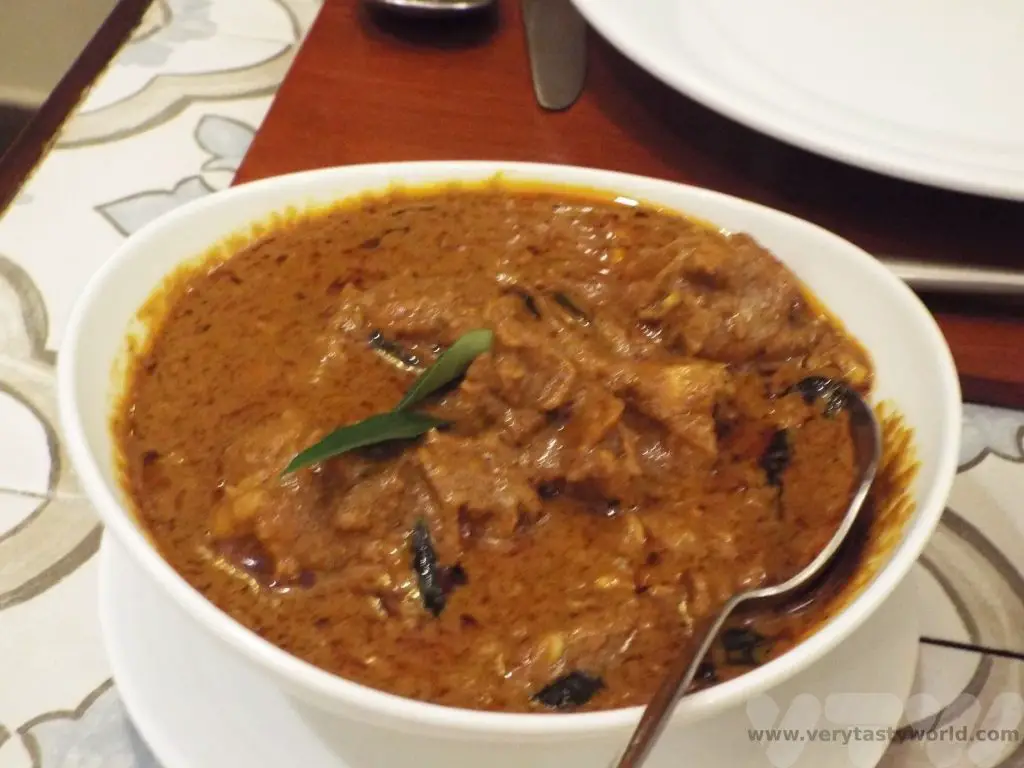
Munnar has so many things to offer the visitor – nature, wildlife, culture and, of course, the most delicious food.
Related Posts You May Enjoy

Kumarakom Houseboats on the Kerala Backwaters
Kerala, the state in South-west India, is one of the most popular tourist destinations in the country. Blessed with gorgeous landscapes, beaches and hill stations, it also has a rich cultural heritage and an amazing food scene, and it is easy to understand why the local people have named it ‘God’s Own Country’. One of the most pleasurable ways to explore the area is on Kumarakom Houseboats, known locally as a kettuvallam on Kerala’s backwaters. These enormous boats, some of which can be multi-storey, were originally used to transport rice and spices to the port of Cochin, the regional capital.
The backwaters of Kerala are a network of channels, rivers and lagoons that are located just inland from and running parallel to the Arabian Sea. Some of the lakes are connected naturally by rivers or by canals that have been constructed for that purpose. The water is brackish – freshwater meets the salty brine of the sea – and this gives the backwaters a very particular ecosystem.
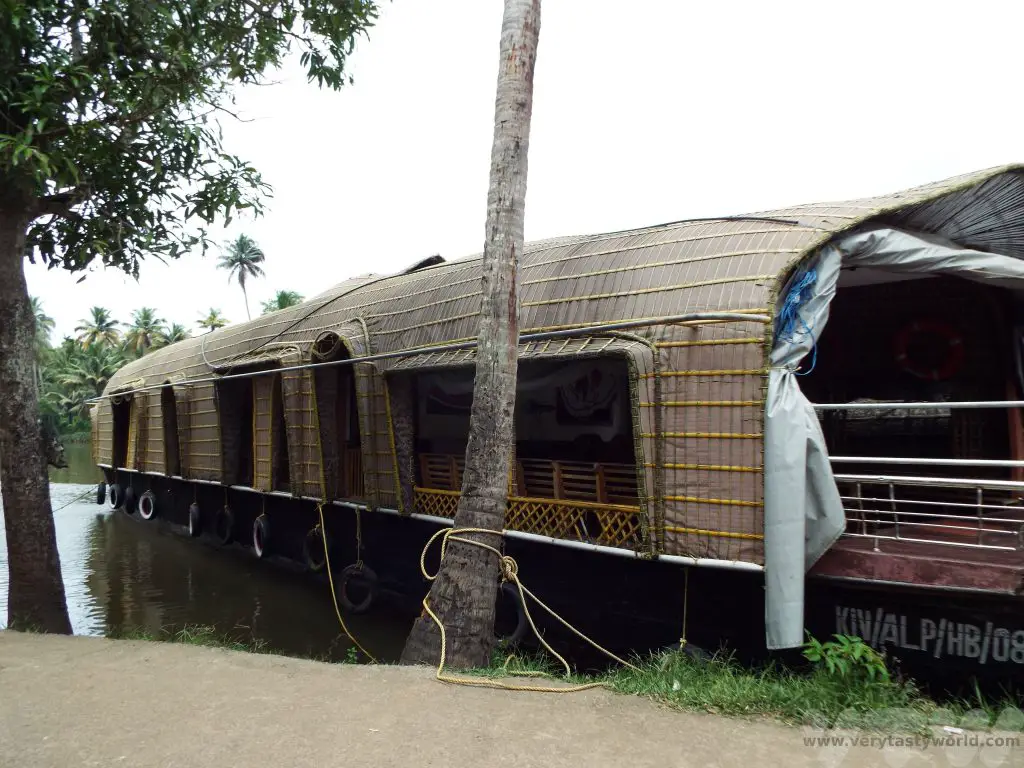
The boats have wooden hulls and a thatched roof. ‘Kettu’ means ‘tied’ and ‘vallam’ is a boat. These boats are constructed from long planks of wood tied with knots of coir and then coated in a resin derived from cashew nut kernels. No nails are used at any stage.
Hiring One Of The Kumarakom Houseboats
Although they were originally designed to be cargo ships they have been adapted for tourism and converted to proper houseboats complete with a living area, kitchen, bedrooms and bathrooms. The boats are available for hire for tourists to reside on, or they can be hired for a few hours at a time. It’s worth noting that boat hire isn’t cheap, especially compared with other prices in the region, but if you can afford it, it is definitely an experience worth undertaking.
Many houseboats are booked months in advance during the busy season and will follow a tour through the backwaters. If you aren’t visiting in the high season you might get lucky and find a boat that’s available to hire. We had been travelling down from Thekkady, arriving at Kumarakom at around 1pm. We managed to find a houseboat that was willing to take us on a four hour boat trip on the local lake and this price included lunch. The prices are for the hire of the boat and crew (normally a couple of people) so if you have a larger party the cost per person naturally reduces. You may find that if the boat is still available and hasn’t already found customers, it may be possible to negotiate a price.
A Tour Of The Houseboat
The thing that is most striking about the houseboats is how spacious they are.
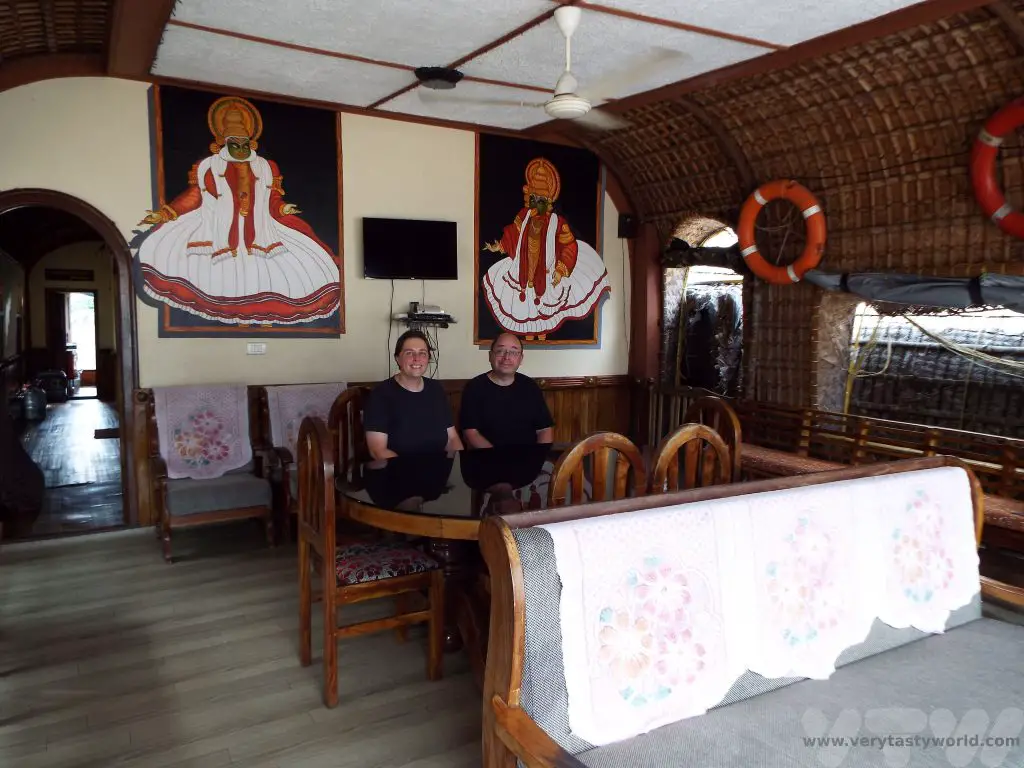
The living/dining area at the front has room for a dining table and plenty of seating space
The houseboat is steered from the front.
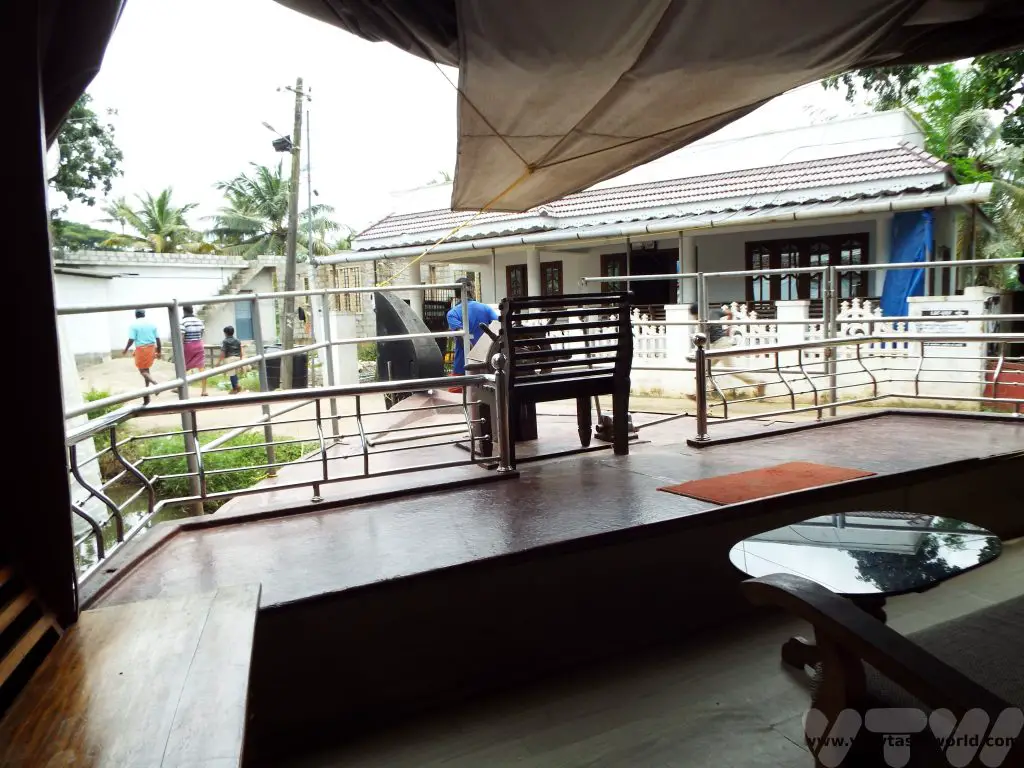
Then there is a long corridor from which there are large double bedrooms. Each bedroom has its own en-suite bathroom.
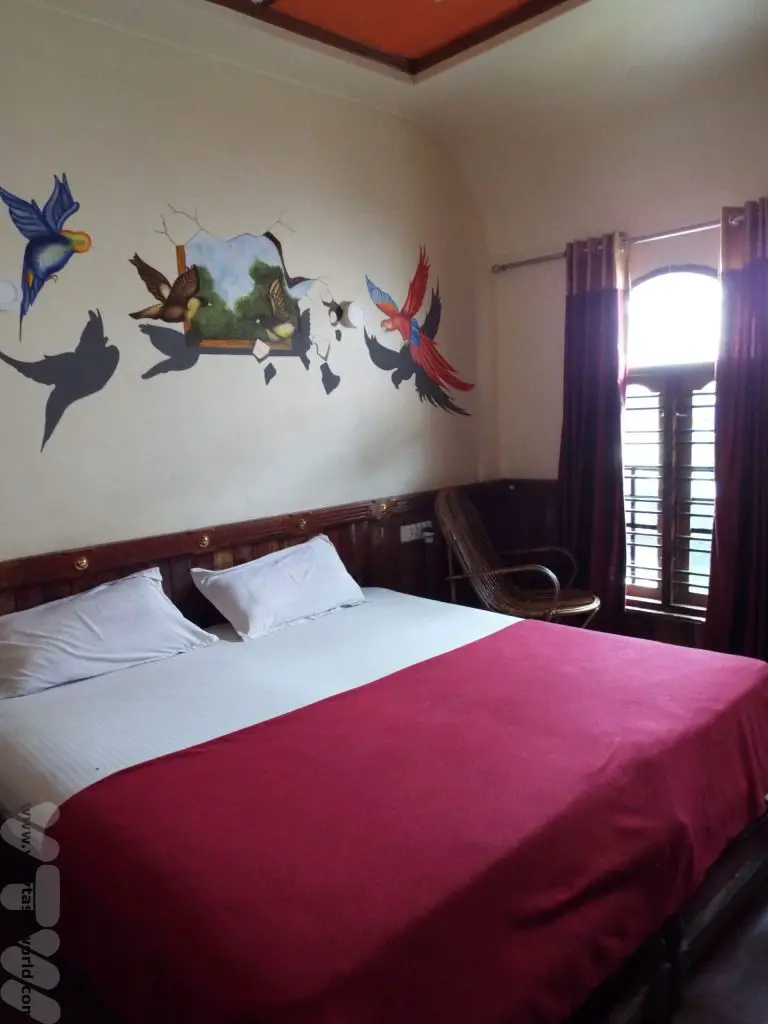
As with all areas in South India where food is served, there is a hand-washing area in the corridor.
Finally, the kitchen is located at the rear of the boat. Again, it is very spacious and has plenty of cooking facilities and storage space. Gas is provided by portable cannisters.
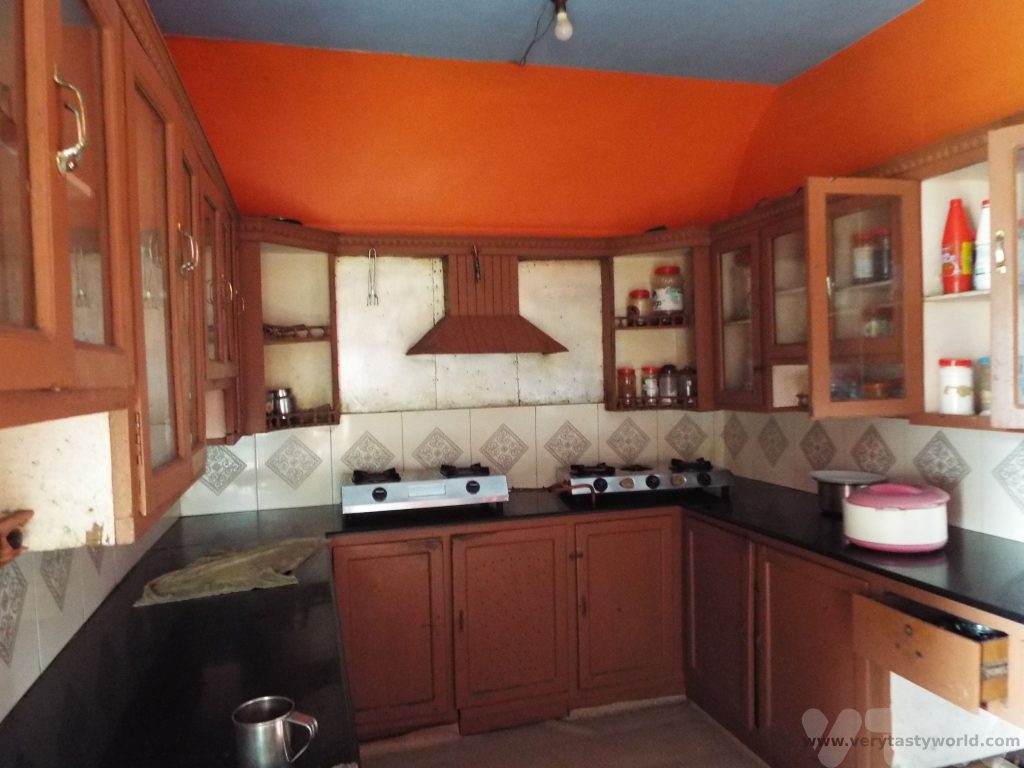
Lunch was already in the process of being prepared…
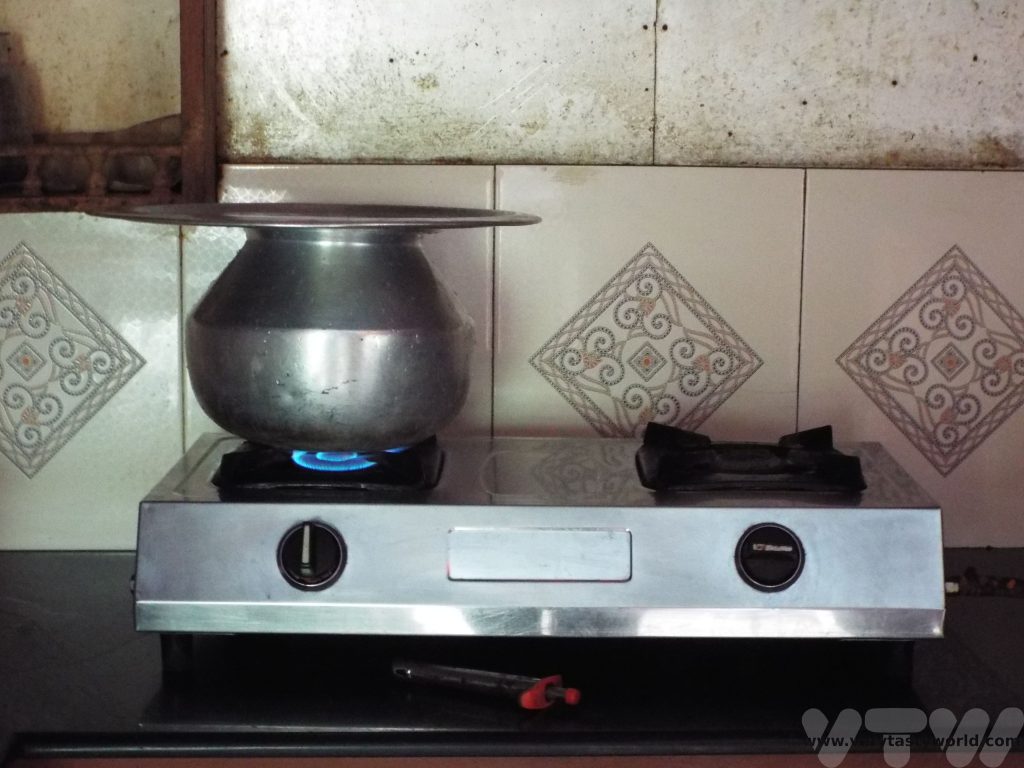
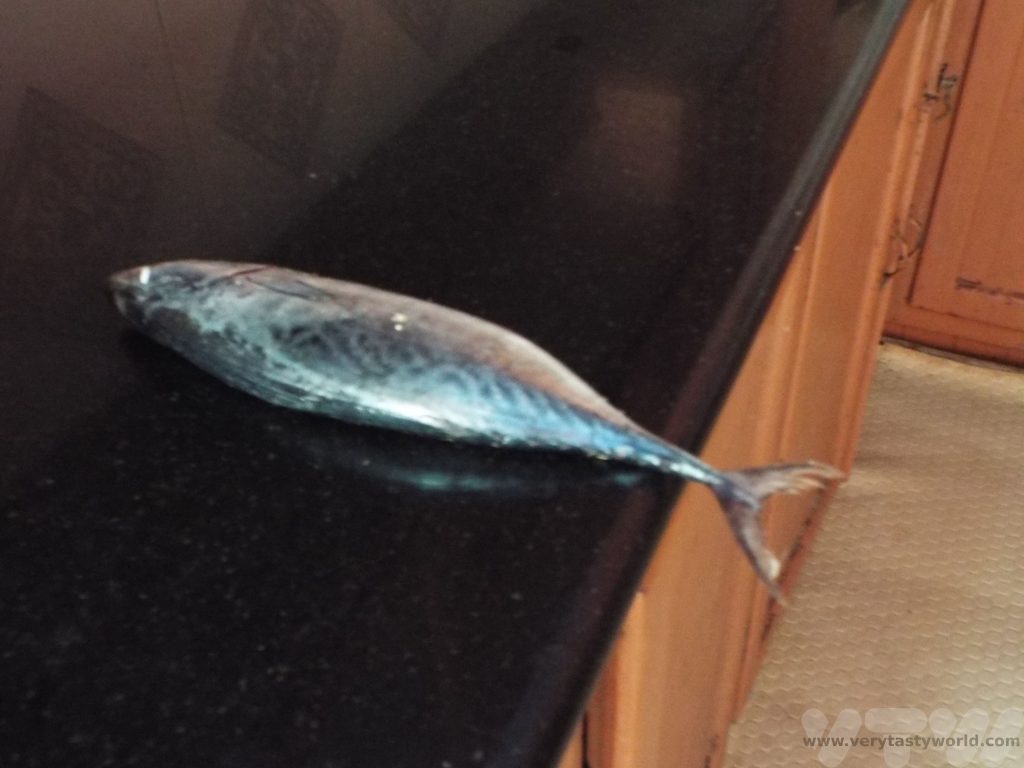
A Laidback Cruise on the Lake
The journey on the Kerala houseboat took us from the boat’s mooring along the river and onto the wide Vembanad lake. The boats are motor driven but move at a slow pace which makes for a leisurely experience. It very much reflects the way of life in Kerala.
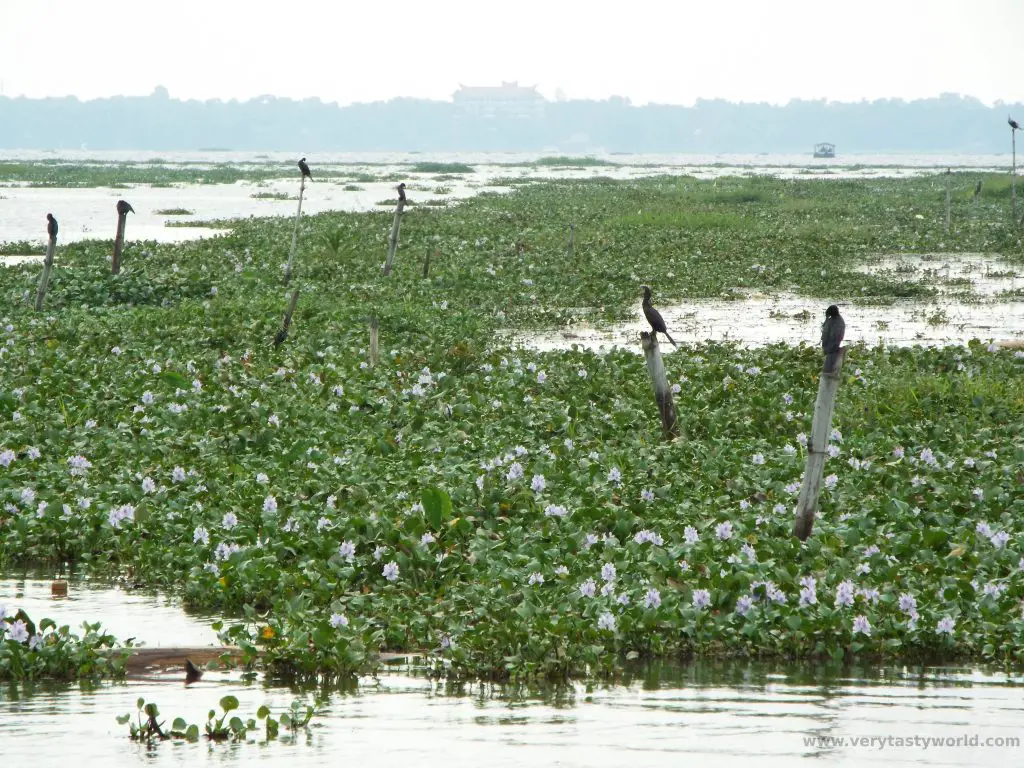
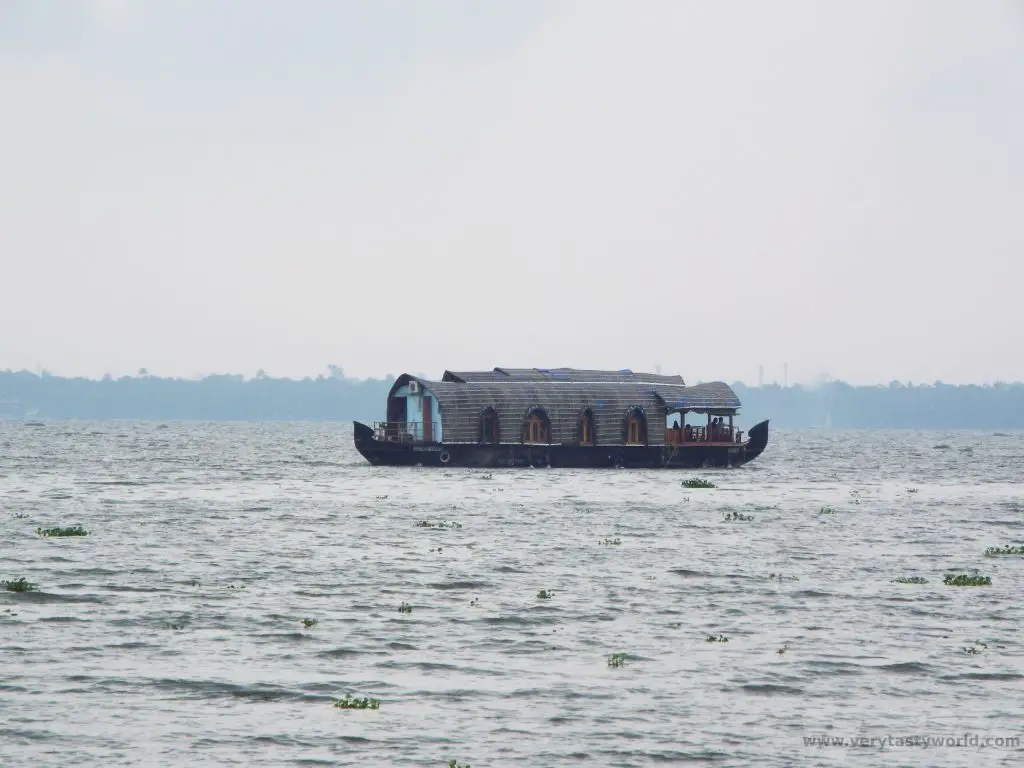
All along the shoreline it is possible to see fishing contraptions. They are formally known as shore operated lift nets, which doesn’t sound nearly as romantic as they look. These are used at night to catch prawns and other small fish. They are designed on a cantilever which ensures that the net descends into the sea when someone walks along the main beam. The catch is then raised by the use of ropes. Some have lights which are used to attract the fish.
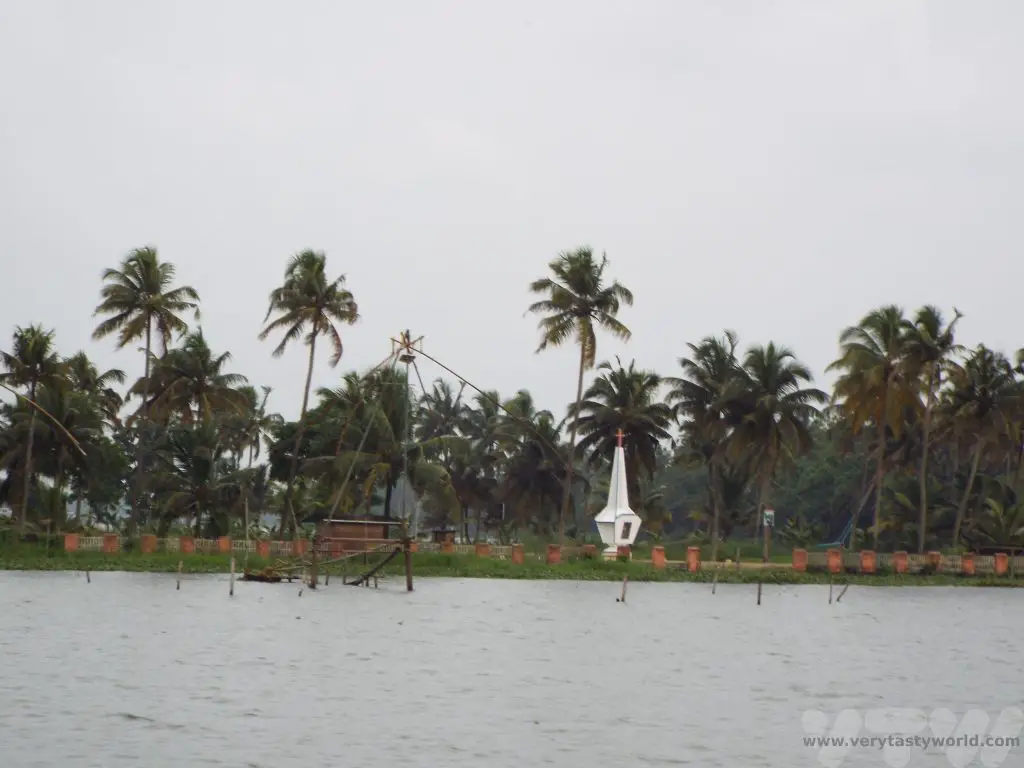
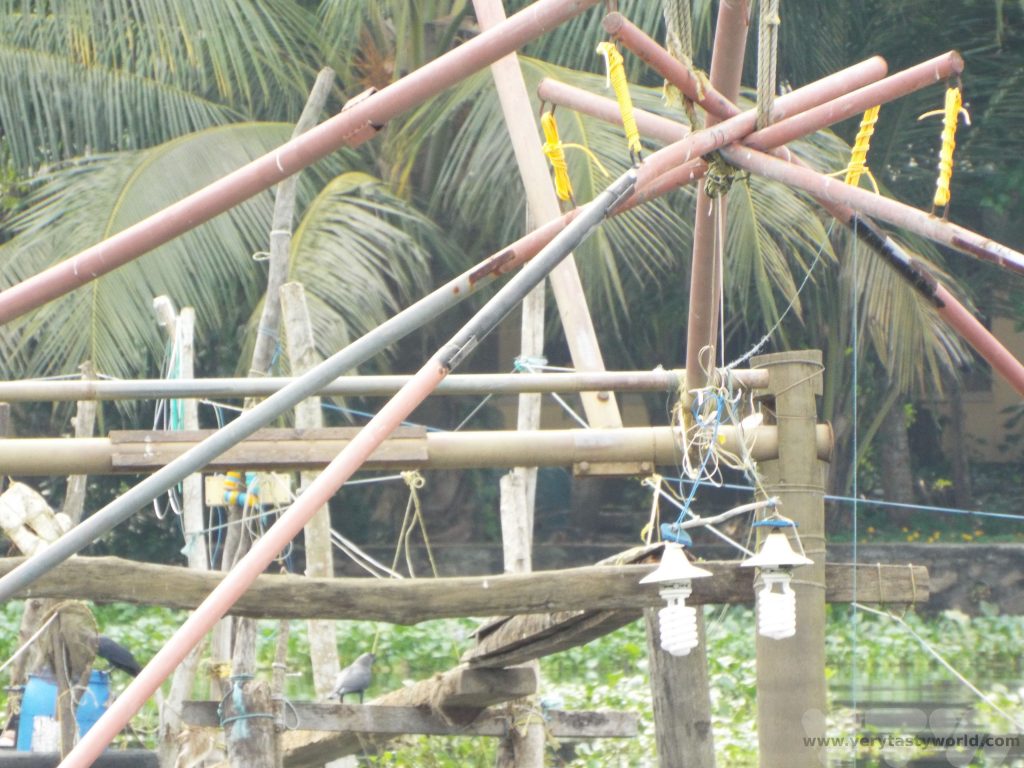
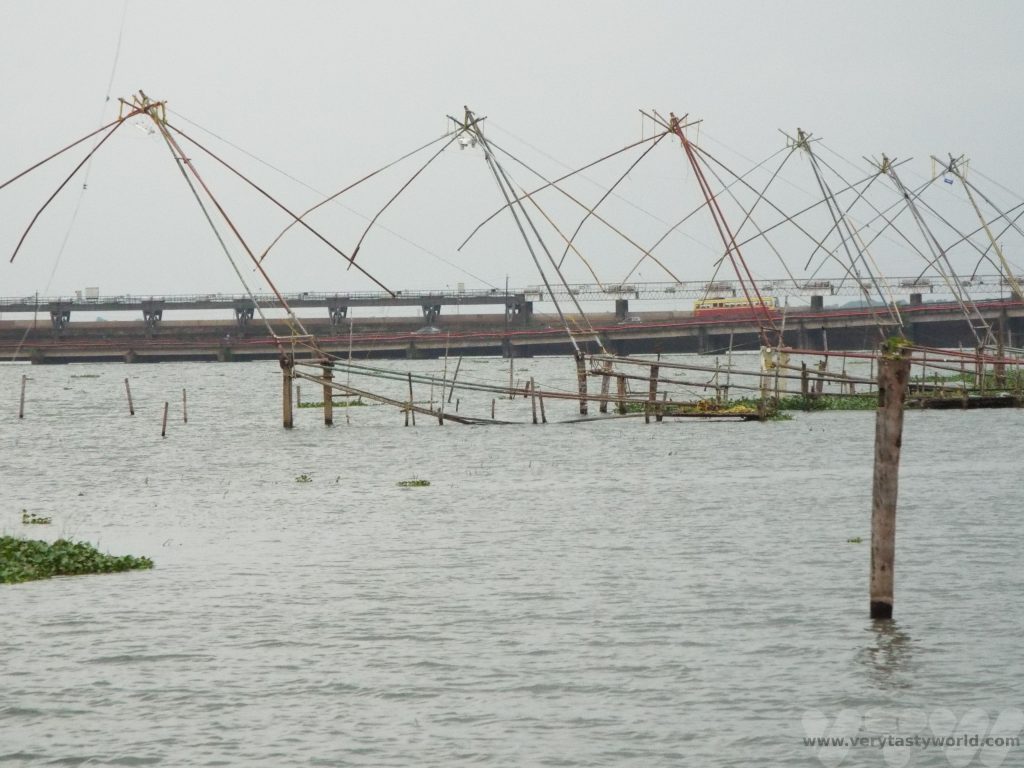
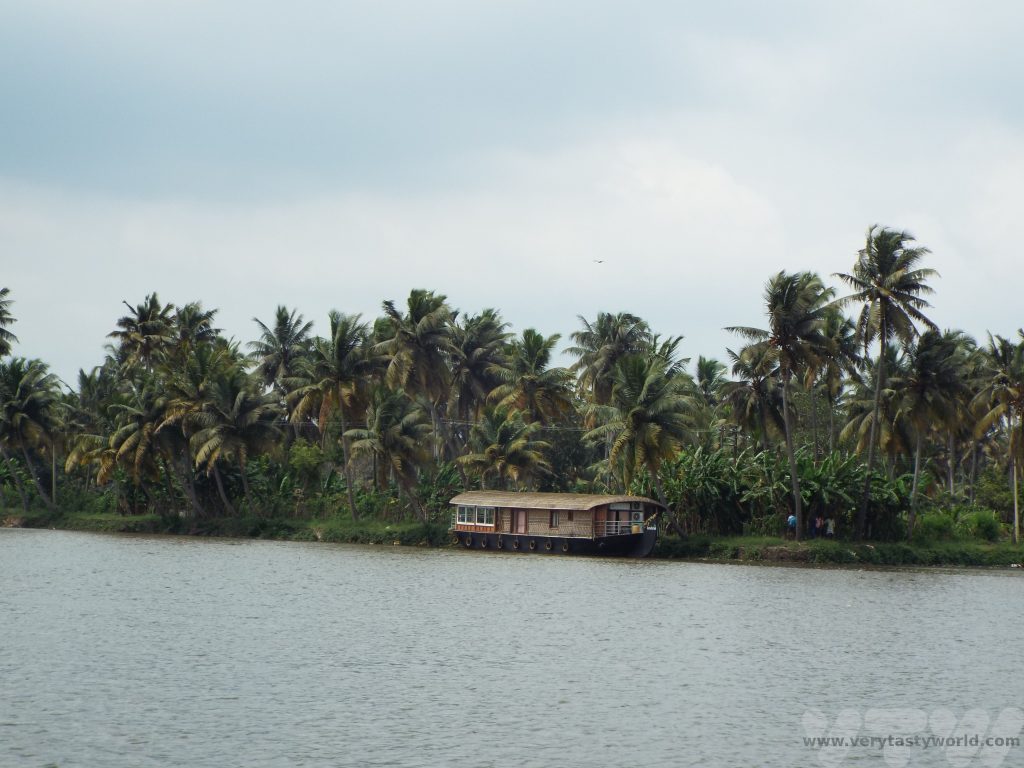
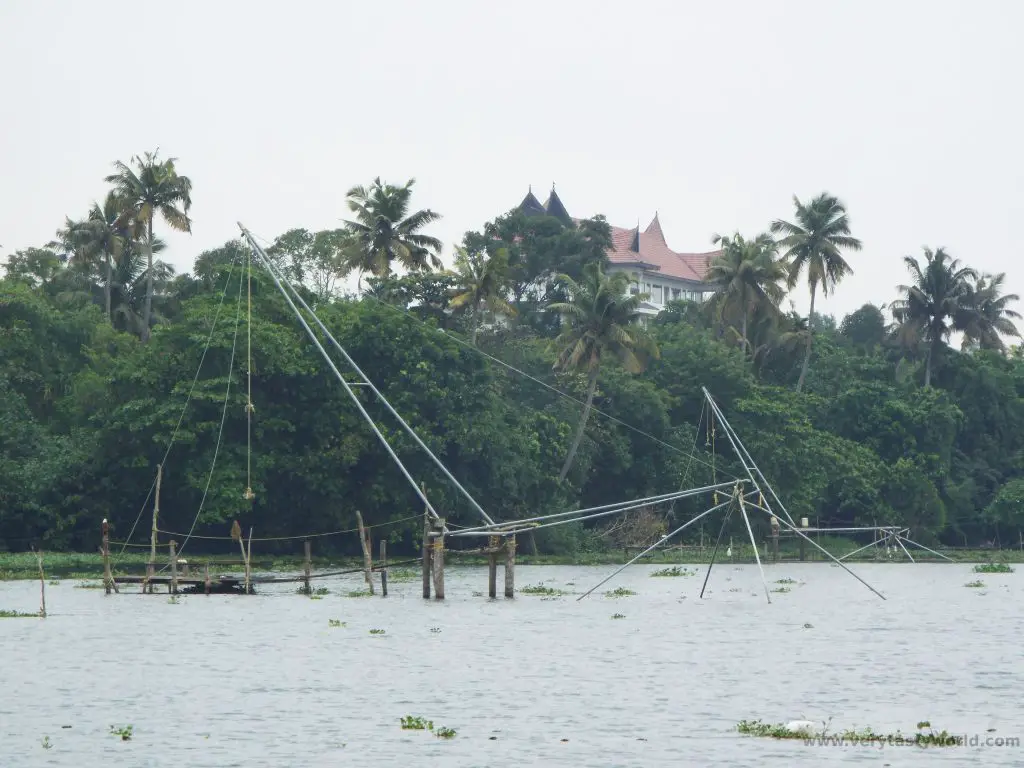
Dining on the Houseboat
Lunch on the Kumarakom houseboat comprised typical dishes from the region – a spicy fish curry with fish fry accompanied by vegetable side dishes and rice. We were asked how spicy we liked our food and we asked for it to be spiced as local people liked it. Like many dishes in Kerala we found that the spices were used for flavour rather than heat. And, of course, it was utterly delicious.
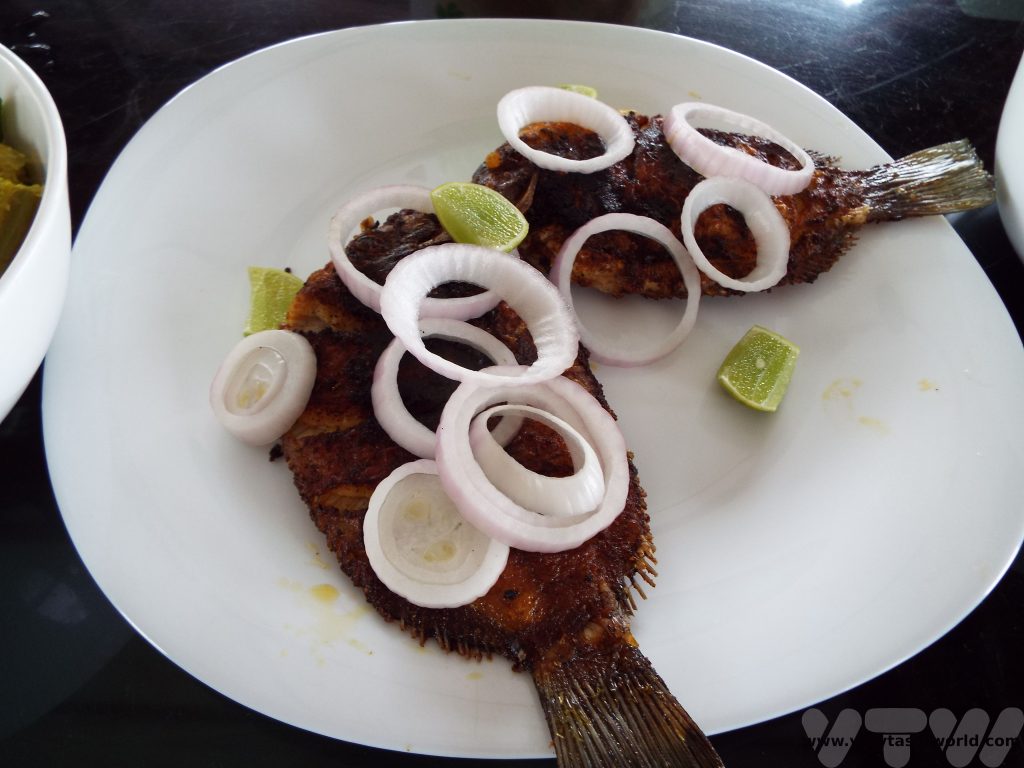
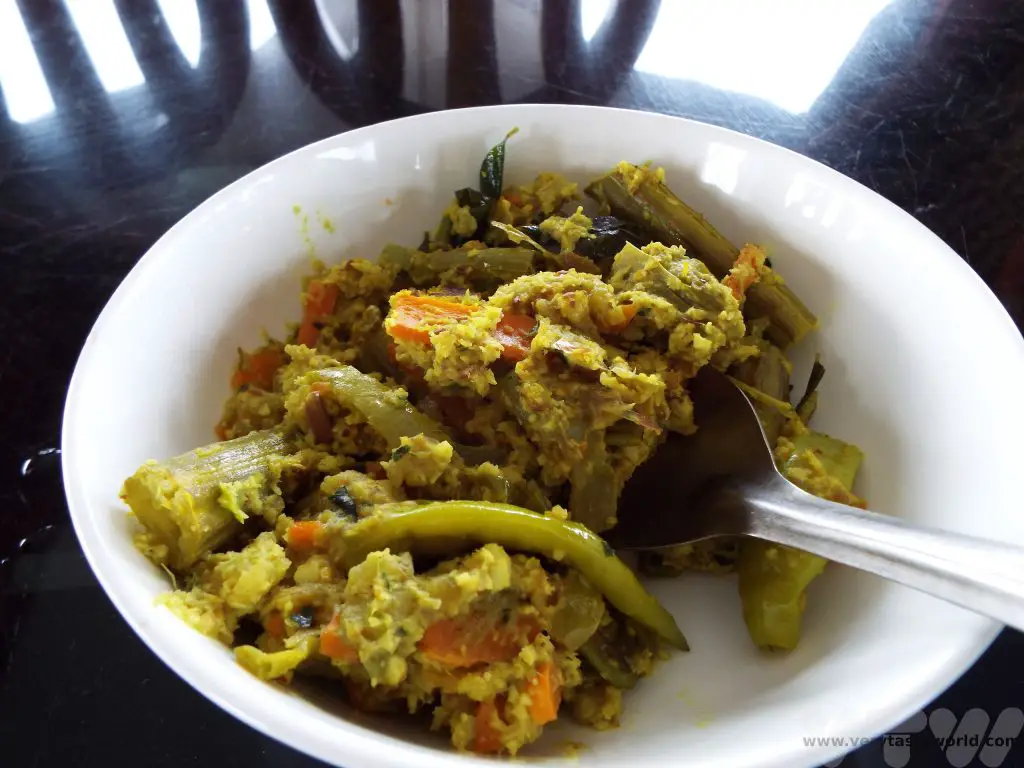
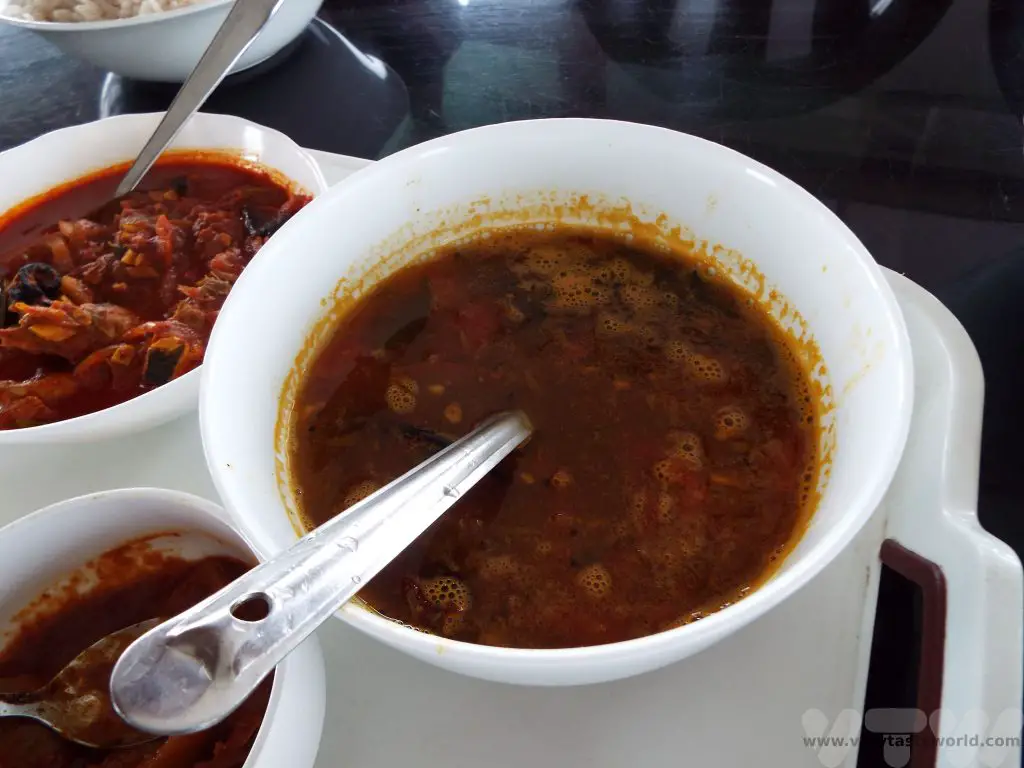
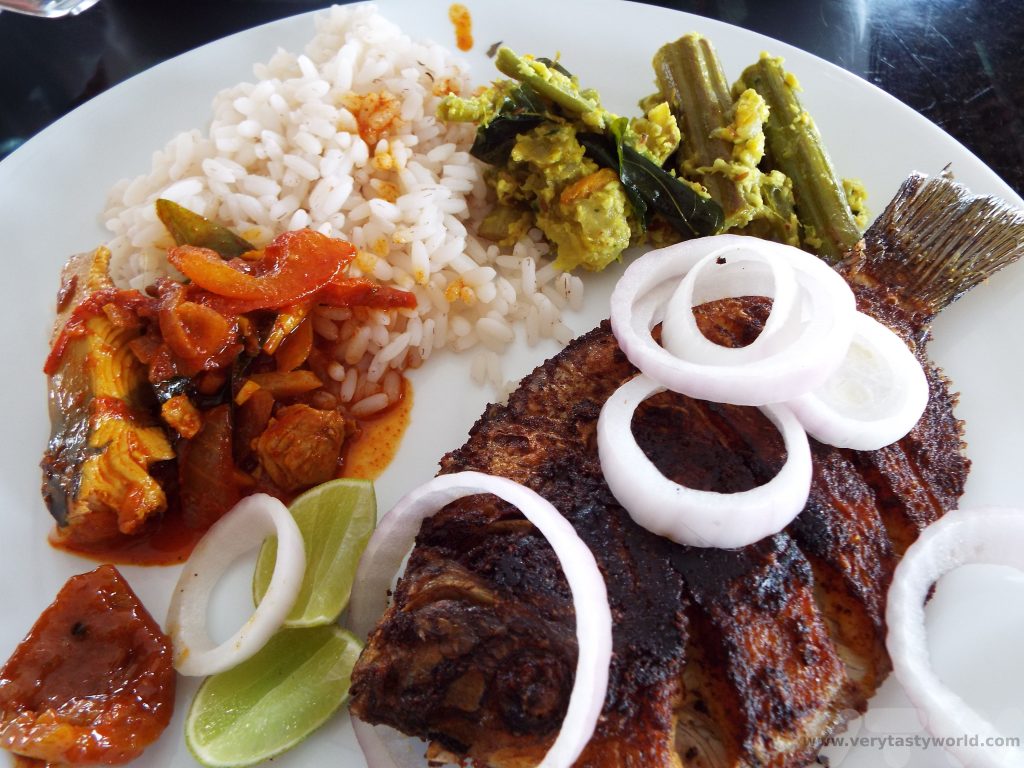
Munnar tea and a banana fritter were served for dessert.
We were visiting at the end of the Monsoon season so some rain was probably inevitable. But even a downpour couldn’t dampen spirits.
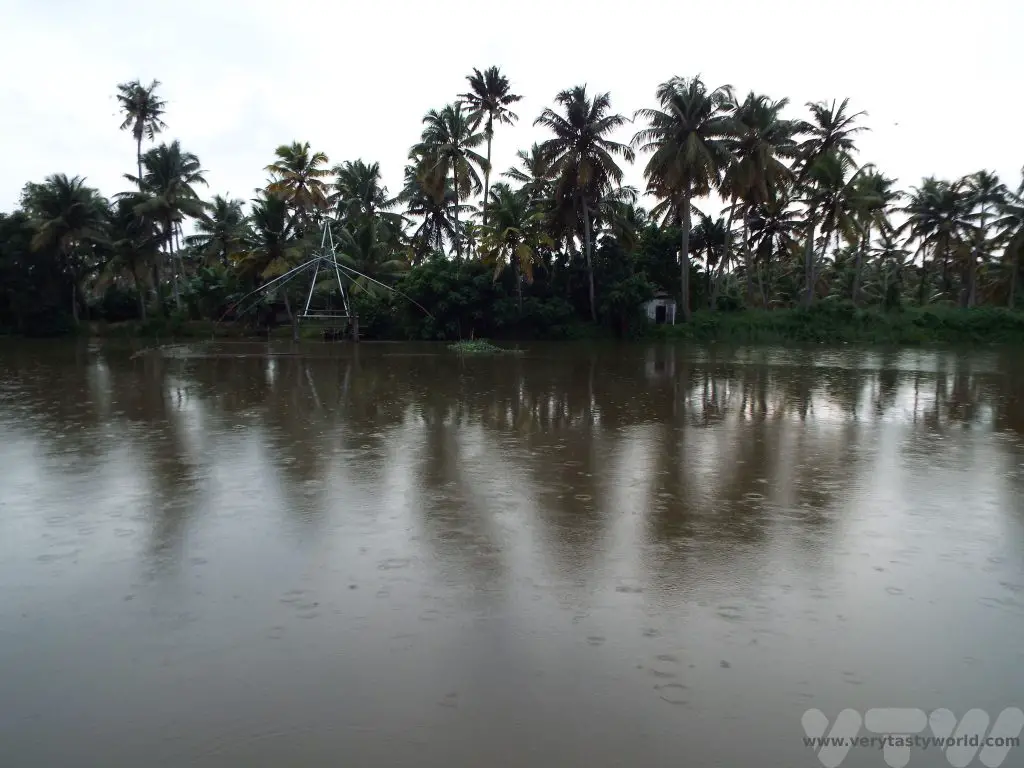
A lazy afternoon cruising the beautiful backwaters on a Kerala houseboat, with the addition of a delicious lunch, was a most refined way of spending an afternoon.
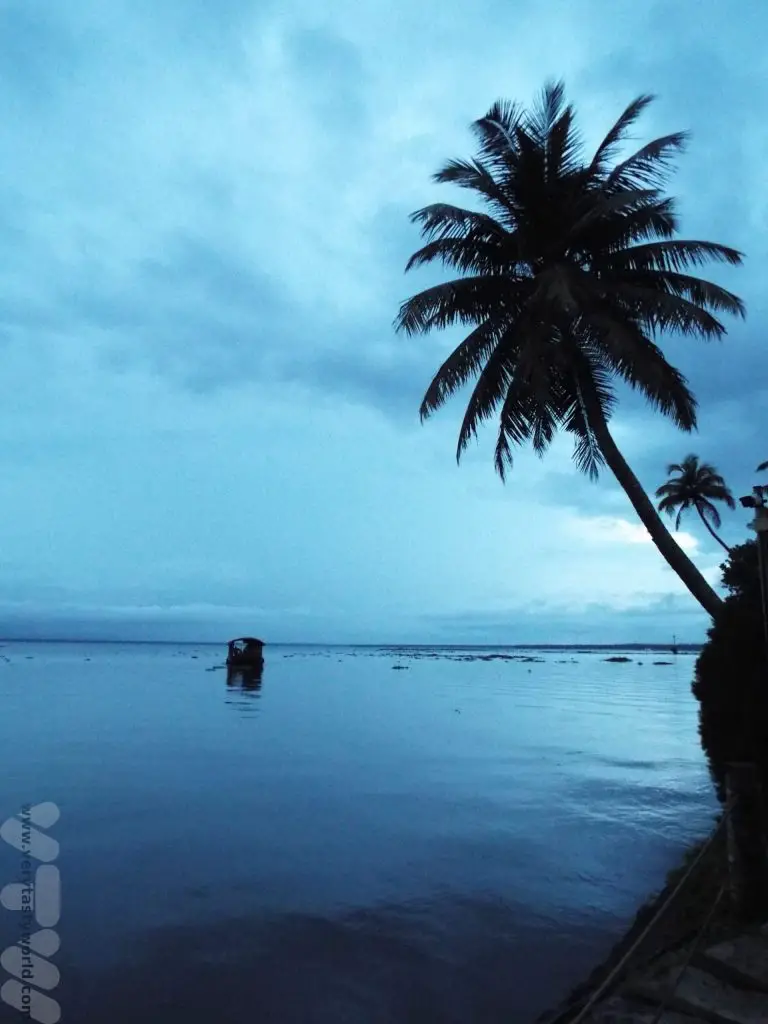
Related Posts You May Enjoy

The Golden Temple Amritsar, India
The city of Amritsar is located in the northwest of India, in the Punjab, close to the border with Pakistan. It was founded in 1577 by Guru Ram Das, the fourth Sikh guru and is the spiritual home of the Sikh religion. It is the home of the Golden Temple, or Harmandir Sahib. The Golden Temple Amritsar is open 24 hours a day. Everyone is welcome.
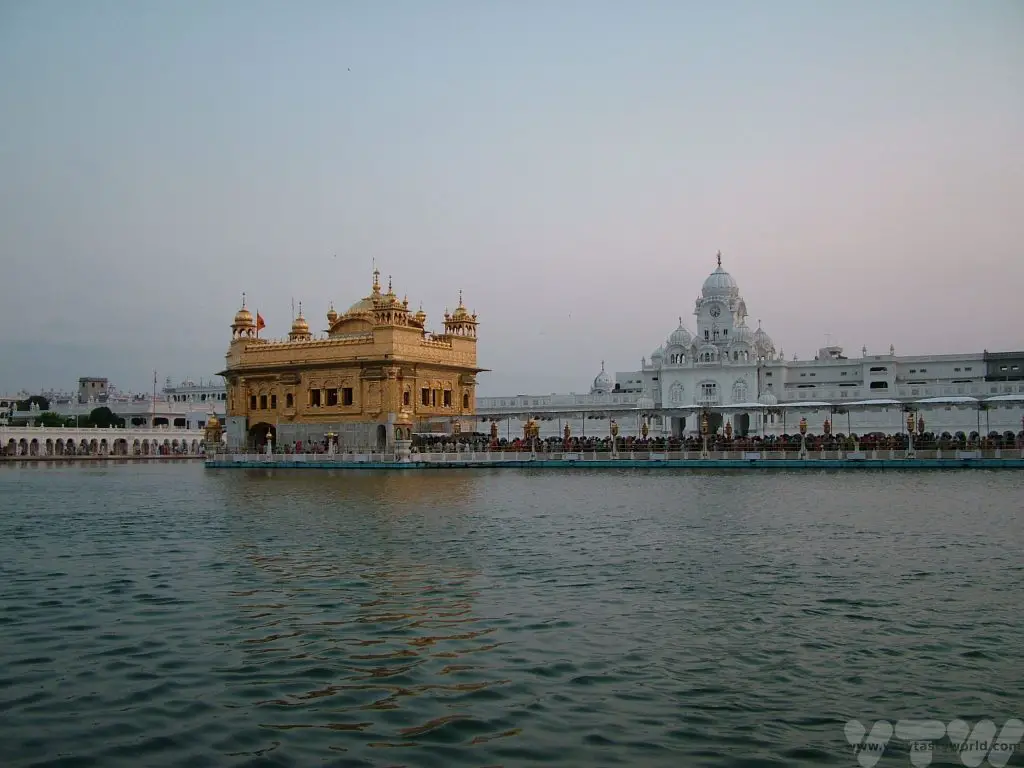
Visiting the Golden Temple Amritsar
It is advisable to dress modestly (shoulders and legs should be covered) and you will need to wear a head covering before entering the complex. We always tend pack scarves whenever we travel as they easily scrunch into the luggage and are very useful not only for visiting religious sites but also for sun protection, wrapping things up or any number of purposes. However, coverings are available outside the temple at very low cost if you forget to bring your own. You will need to remove your shoes and walk through a pool before entering the temple in order to wash your feet. Bags and shoes can be kept in the cloak room before entry to the temple. Photography is allowed in the outer parikrama (the walkway surrounding the sarovar – the holy pool) but not inside the temple itself.
The temple complex itself is the very definition of serene, a complete contrast to the bustling streets outside. It is possible to walk right the way around the sarovar, in a clockwise direction. It is believed that the holy water can have healing powers and there are defined areas for bathing, segregated for men and women.
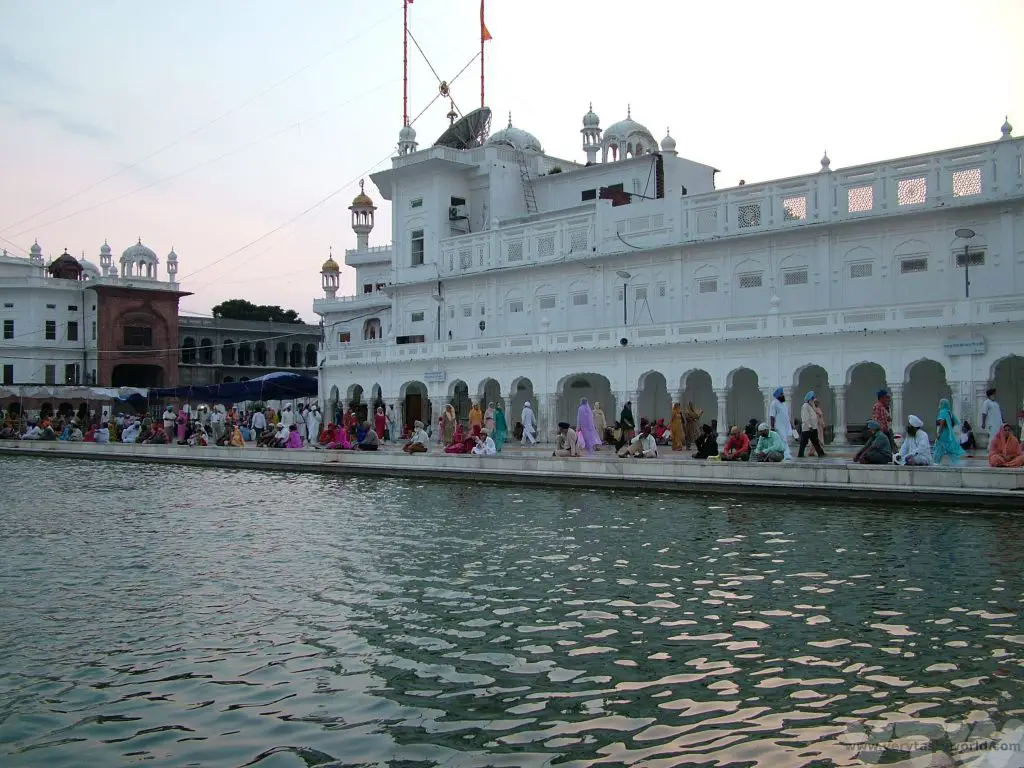
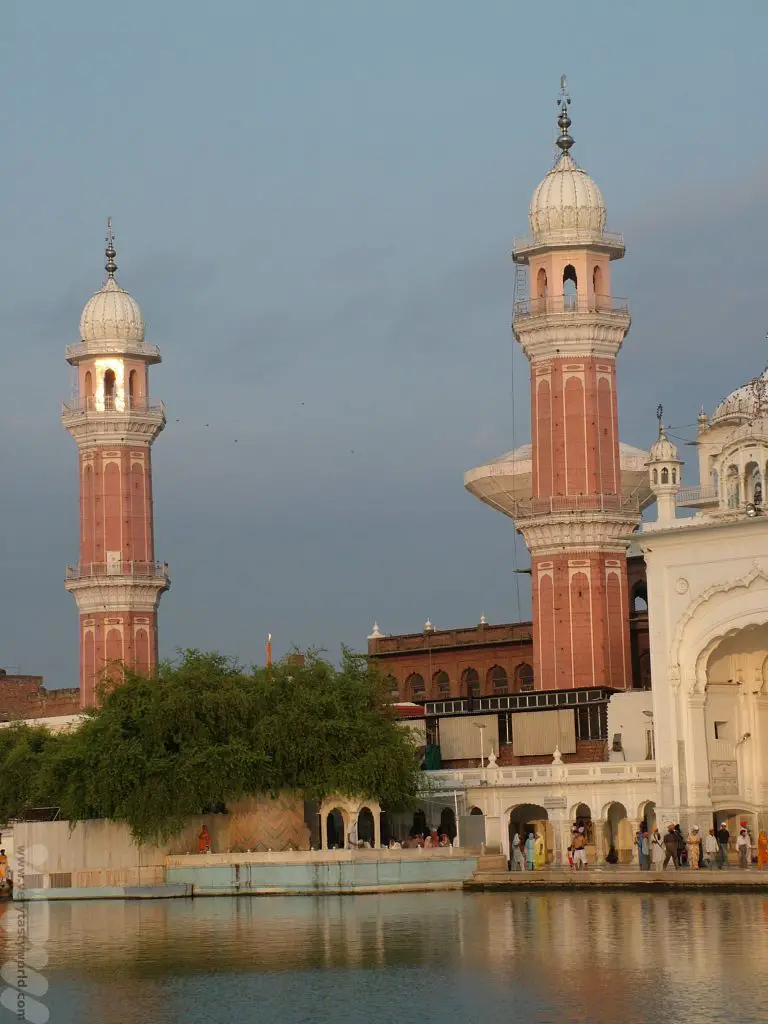
The Golden Temple Amritsar also has two towers, the Ramgarhia Bunga, built in the 18th century designed to be watchtowers to look out for possible military raids on the temple.
The Akal Takht building is located in front of the sanctum. A takht is a seat of power in Sikhism and this is the primary takht and the centre of authority for Khalsa, the collective body of Sikhs across the world. Twice a day the Palki Sahib ceremony takes place. This is a ritual where the Guru Granth Sahib (central religious book) is taken from the Sri Akal Takht to the Golden Temple and returned at the end of the day.
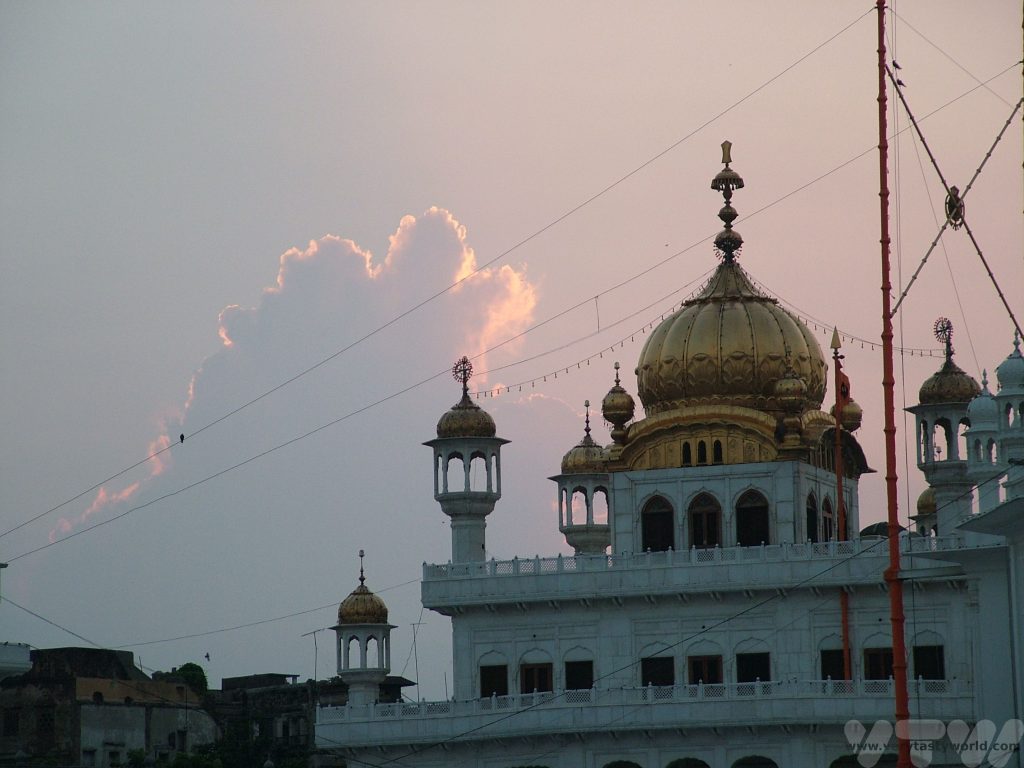
And of course, there’s the remarkable and beautiful inner sanctum itself. This is a two storey building located on a causeway. The ground floor is constructed from marble with floral and animal motifs carved inside and the magnificent golden upper floor, with a dome said to represent an inverted lotus flower, that is apparently gilded with around 100kg of gold.
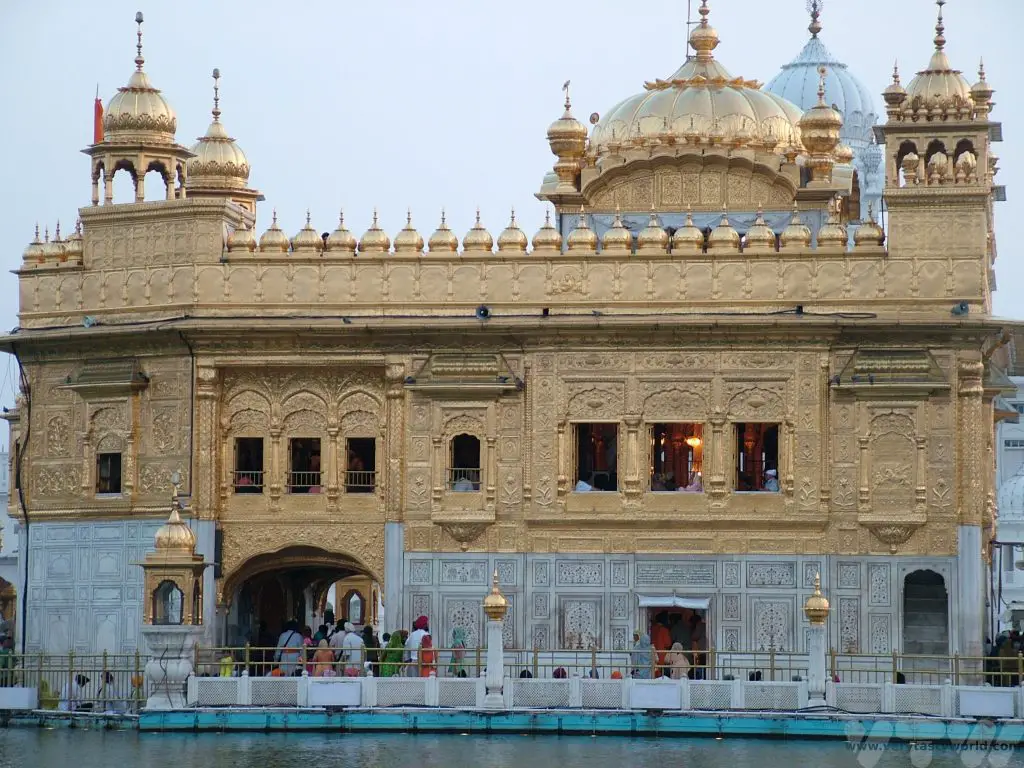
Inside, recitations from the Adi Granth (the first rendition of the Guru Granth Sahib) sacred scripture of Sikhism and a collection of nearly 6,000 hymns of the Sikh Gurus, are read throughout the day. An entire recitation takes around 48 hours. Pilgrims visit to hear the recitations and to receive blessings. There is usually a long queue to enter the inner sanctum.
One of the amazing things about the Golden Temple Amritsar complex is the langar, its kitchen, one of the largest, if not the largest, community kitchens in the world. Each day the langar at the Golden Temple provides meals, free of charge, to some 100,000 people. Everyone is welcome, pilgrims and tourists, alike. The food served is simple and healthy – rice, roti (a bread), dal (lentils) and vegetables, along with a sweet dessert. Most of the staff are volunteers.
This video from the temple’s official website shows what an amazing operation the langar is.
We would have been very welcome to have enjoyed a meal at the Golden Temple’s langar but we felt that it was more appropriate that others should have priority. Sikh communities all over the world are well known for providing food on a voluntary basis to people in need, including in our home city.
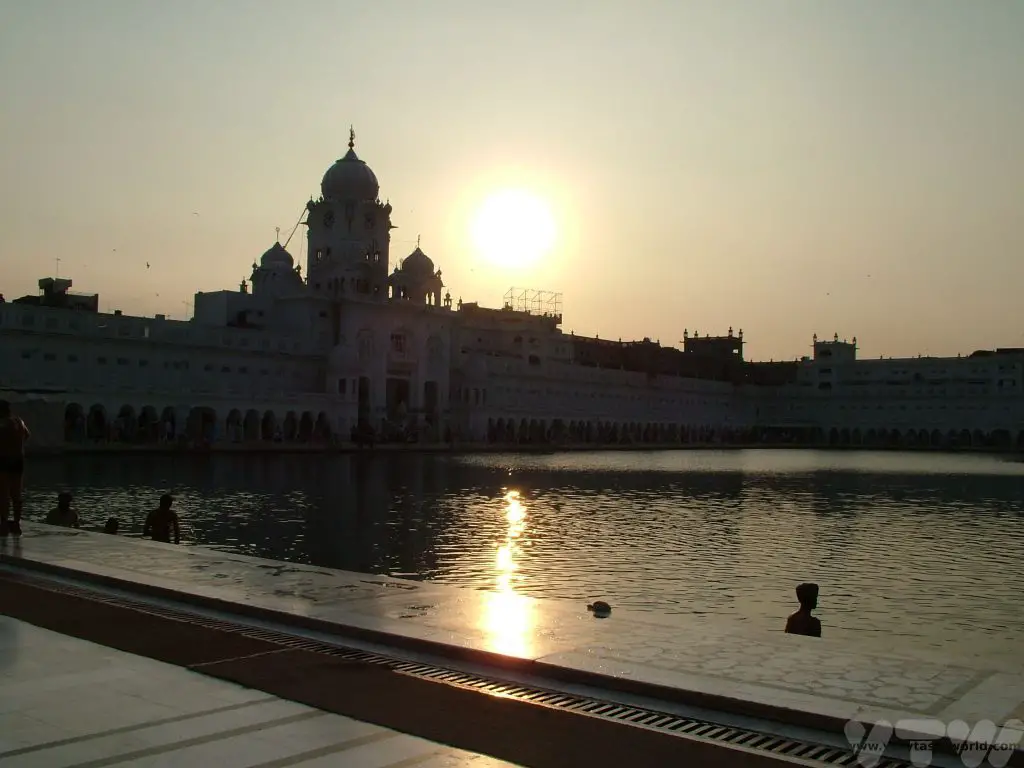
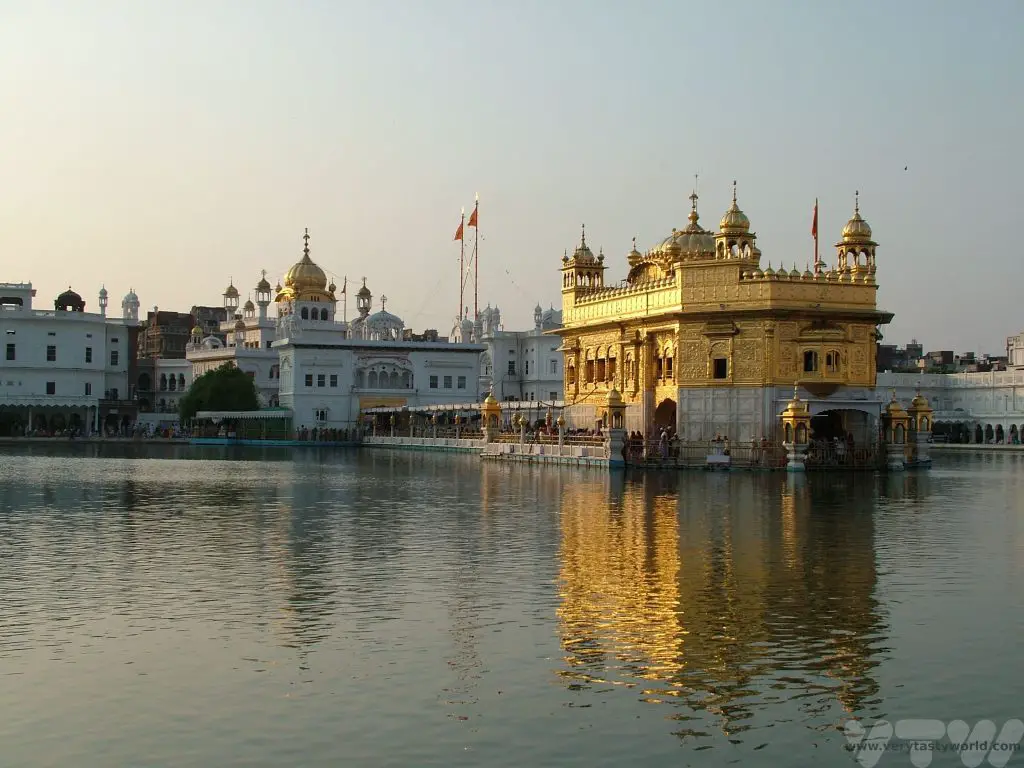
Other Things to Do In Amritsar
Amritsar is a bustling city with plenty to see, including a number of temples, markets and interesting museums as well as the Jallianwala Bagh memorial park, a sobering place commemorating the horrific massacre of Indian citizens by British troops in 1919. A taxi or rickshaw ride will take you to the Wagah Border Crossing with Pakistan where hundreds of people from both countries witness the lowering of the flags at dusk… and have done since 1959. With hundreds of people waving flags, playing music and dancing, it is quite an event.
Related Posts You May Enjoy

Endings and Beginnings At The Extremity of India
Kanyakumari is the town located right at the southernmost point of India in the state of Tamil Nadu. It is where the Bay of Bengal – part of which is comprised of Marina Beach waaaaaay up the coast in Chennai, the second longest beach in the world – meets the Arabian Sea and the Indian Ocean.
It’s a pleasant beach resort town and the accommodation is very good value. It is famous for the Thiruvalluvar Statue and Vivekananda Rock Memorial both of which can be found on islands just off the coast. It is possible to visit the Vivekananda Rock Memorial via boats which make regular trips between the harbour and the island. It is the place where Swami Vivekananda, a monk who represented Hinduism and India to the Parliament of World Religions in 1883, achieved enlightenment. He was known for his oratory and literary works, particularly poetry. The Vivekananda Mandapam and the Shripada Mandapam are the main structures on the rock along with a meditation hall.
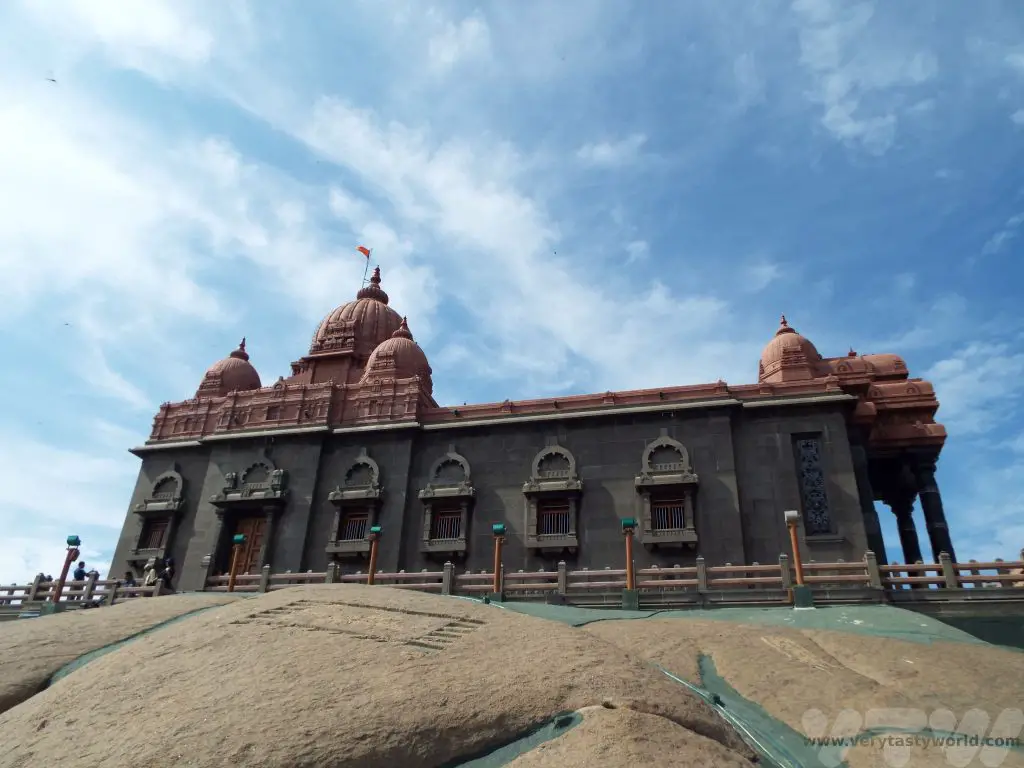
The boats are easy to find – just walk to the harbour and follow the signs. The trips are popular and there is usually a queue but it’s well organised and, like many queues we found ourselves in whilst travelling through South India, we got talking to the local people and other visitors. Life jackets are provided and should be returned at the end of the journey.
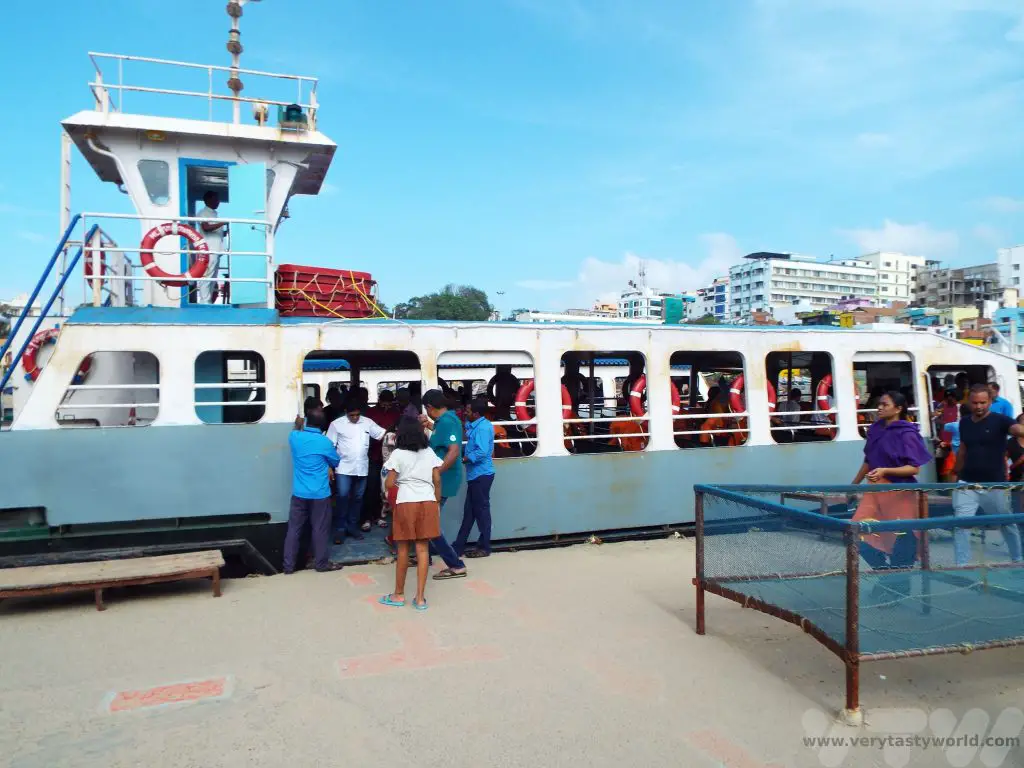
On arrival you will need to purchase an entrance ticket then follow the path upwards. You need to remove your shoes before entering the memorial proper. It’s worth noting that the rock can get very hot underfoot if the weather is warm so it’s worth making the trip earlier in the day.
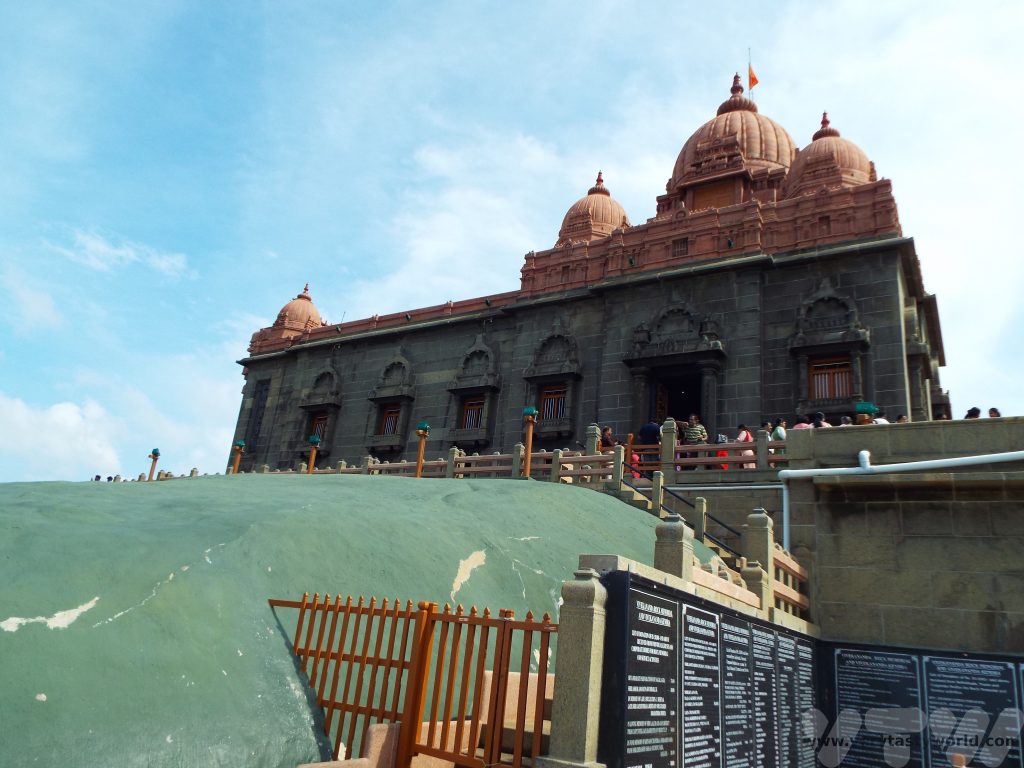
Another thing to note is that photography is prohibited in some parts of the memorial building. It is always important to abide by no-photography rules to show respect, but they are enforced here very strictly. We saw someone try to sneak a photo and their phone was rapidly confiscated by eagle-eyed attendants.
There is also a closer view of the Thiruvalluvar Statue on the adjacent island.
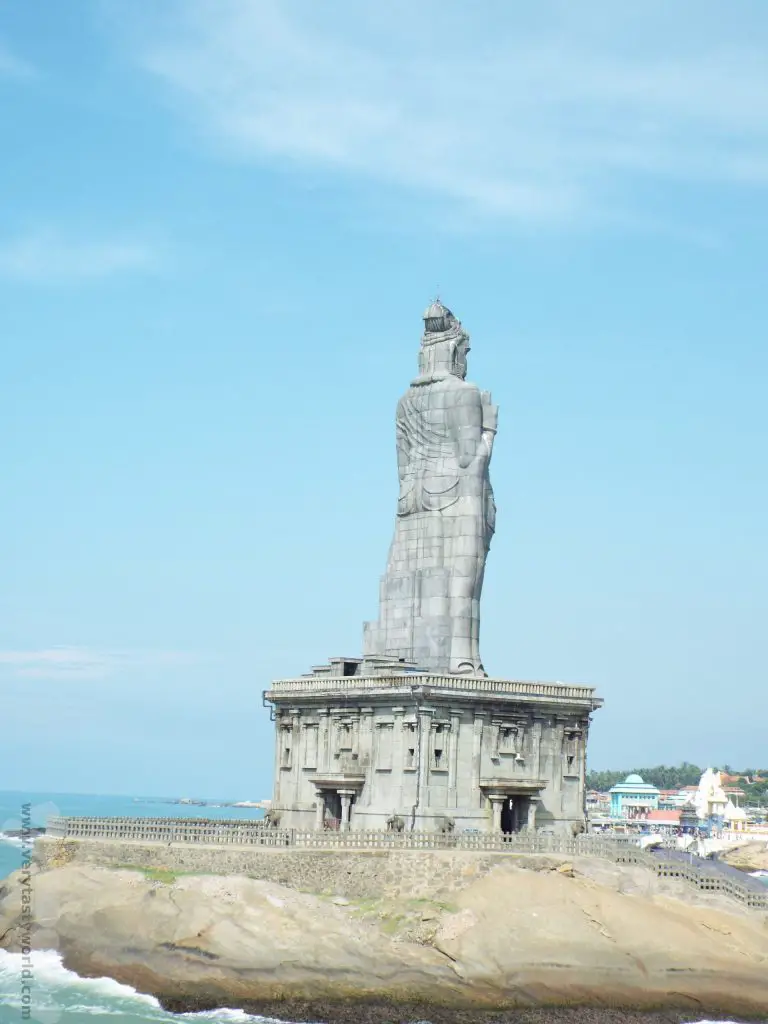
The other essential activity for tourists in Kanyakumari is to experience sunrise and sunset looking out over the vast, vast ocean. There are two different locations – one looking east and the other west, for obvious reasons. The sunset spot is about 2 km from the town centre which makes for a pleasant walk along the coastal path. Of course, if you don’t want to walk there will be tuk-tuk drivers aplenty, available around town at the time the sun is due to set. If you walk you can’t get lost – just follow the crowds.
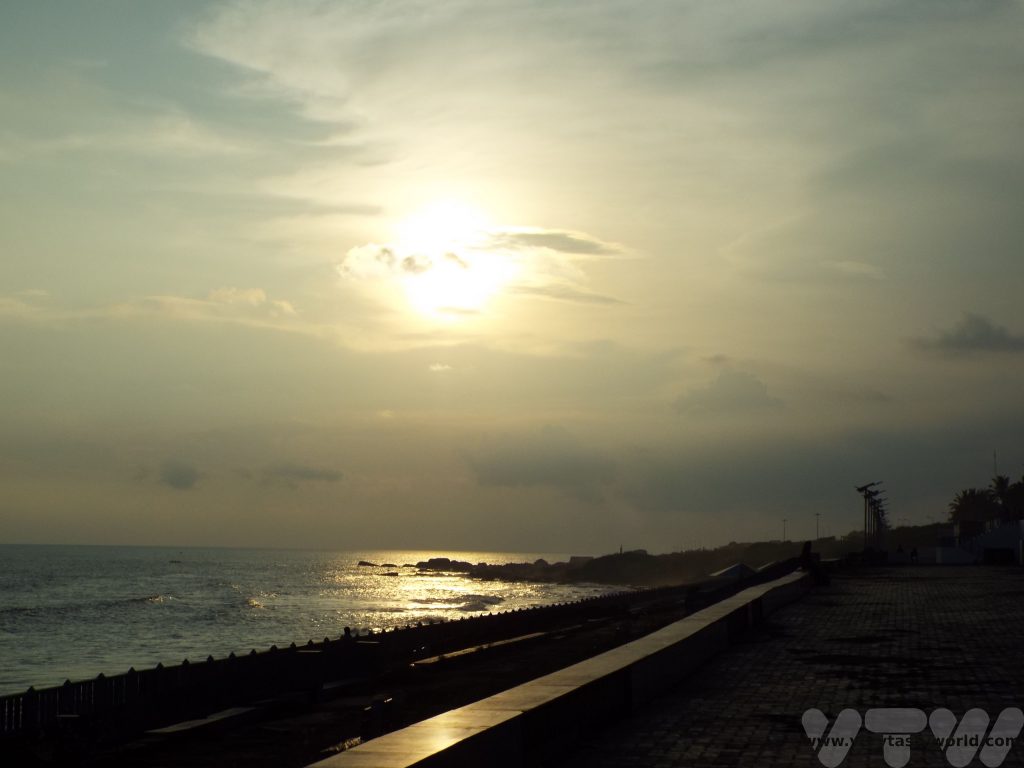
There is a designated sunset viewing point – right at the bottom left corner of the map.
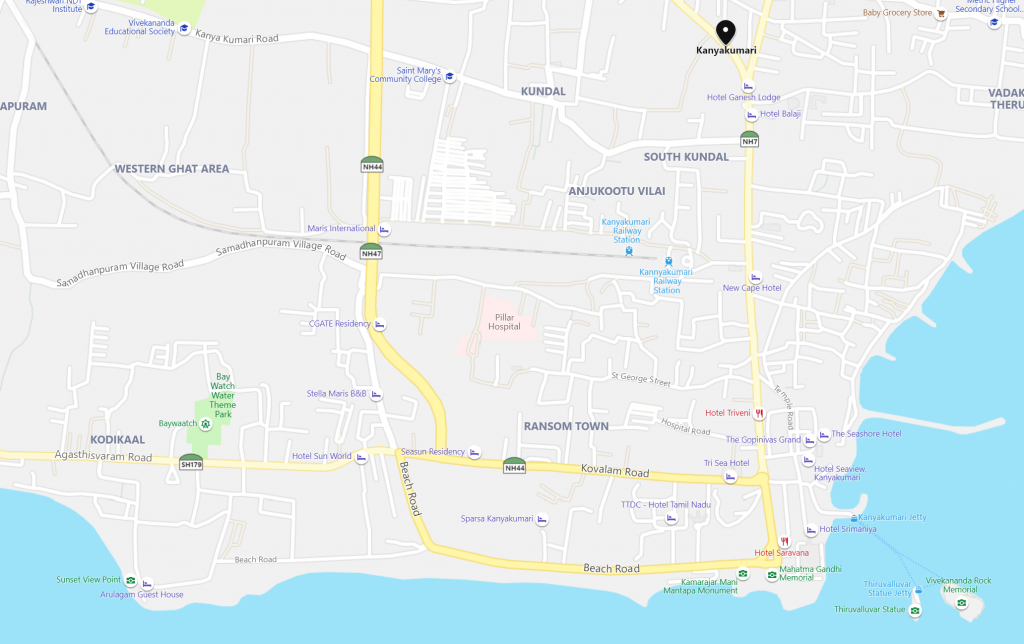
The sunset was rather lovely.
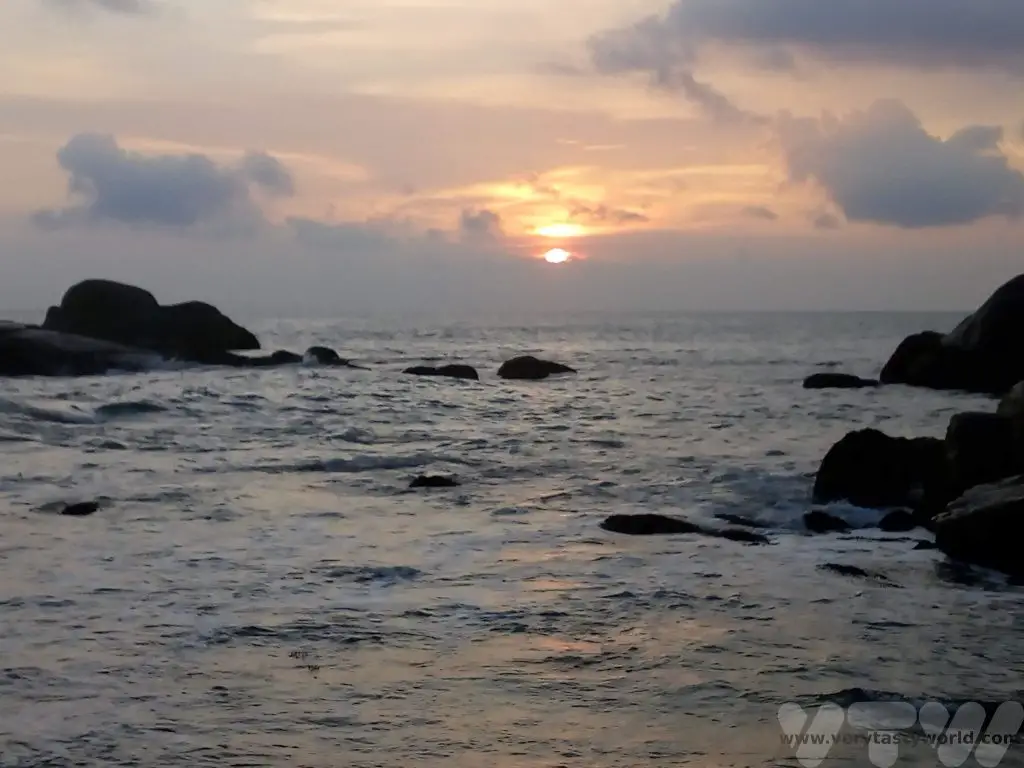
Walking back there are all sorts of restaurants and food stalls along the beach front as well as a number of shops where you can buy spices and souvenirs. The town is also famous for the myriad sea shells available to buy and there are loads of stalls selling these too.
The sunrise location is helpfully close to the centre of town just behind the Amman temple on the Kanyakumari Beach and looks east over the Thiruvalluvar Statue and Vivekananda Rock Memorial which are beautifully lit up at night.
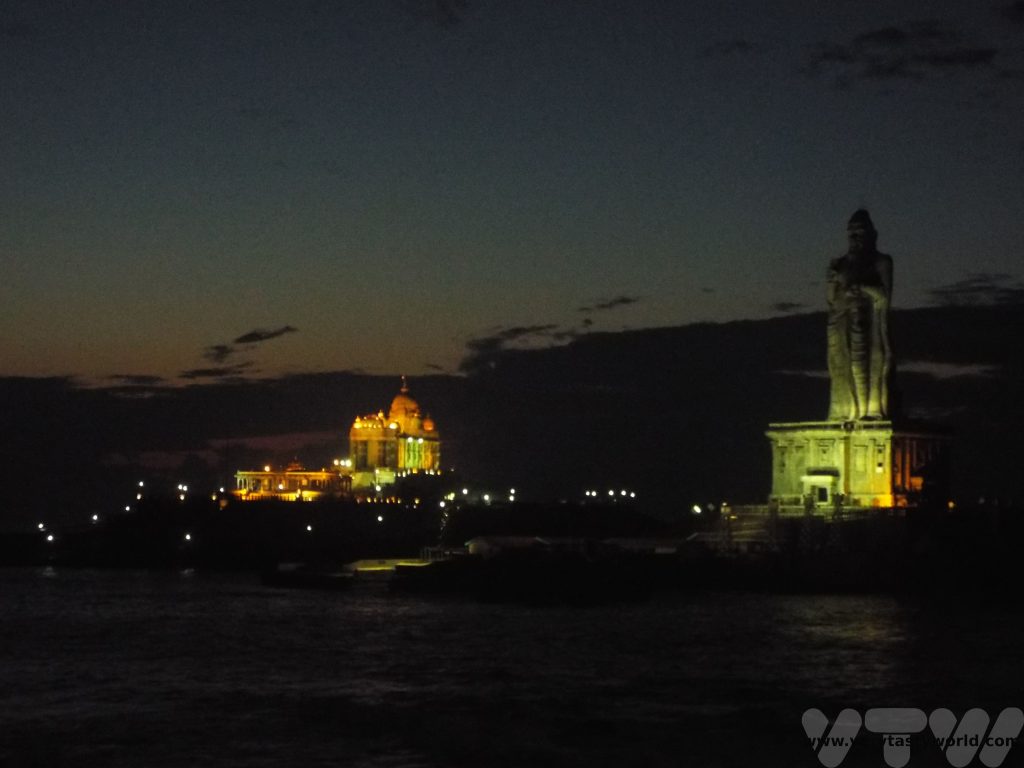
The timing for sunrise when we visited was such that we woke up at 4:30am and were a bit groggy, but fortunately didn’t have too far to walk. As with the sunset, follow the crowds. It’s worth getting there early to try and find a good viewing spot as a multitude of people will gather. The atmosphere is lovely and friendly with a sense of anticipation for the day ahead. We were rewarded with a most magnificent sunrise.
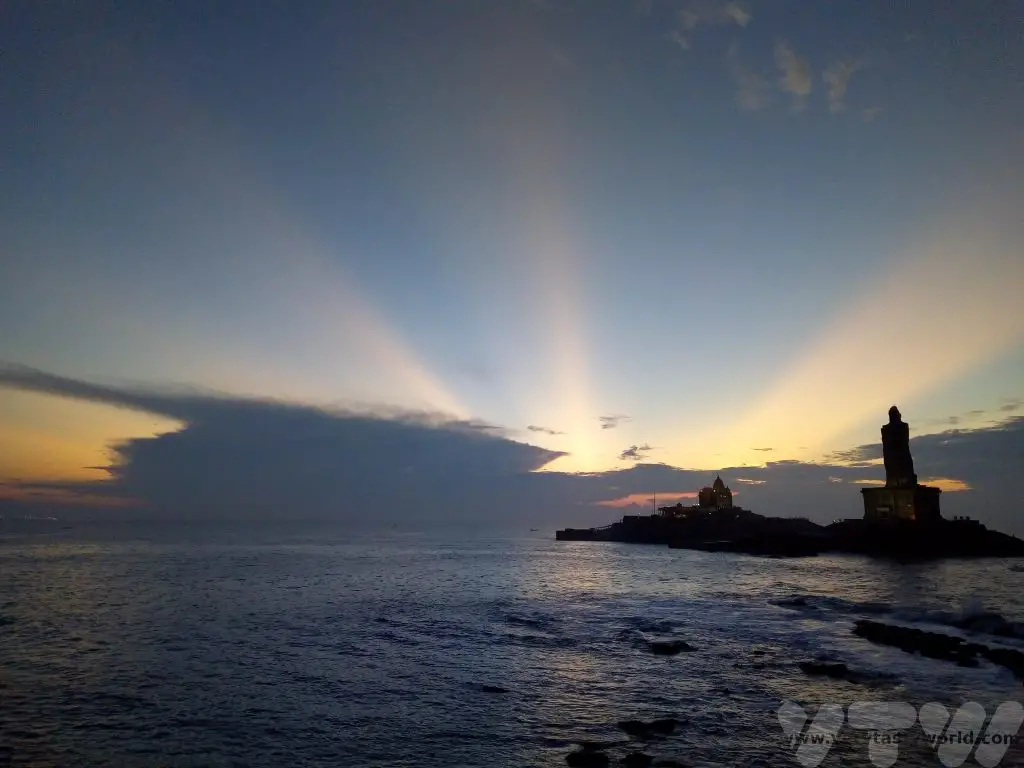
And then went back to bed for a couple of hours!

Hello, Thali – South India Thali
South Indian Thali are a wonderful way to enjoy a cheap and filling meal which gives you the opportunity to sample loads of different dishes. Most restaurants across India will offer a thali option and often they are available on an endless top-up basis. Although, to be fair, even though the portion sizes of the individual dishes aren’t enormous, the combination of delicious food and rice is guaranteed to fill you up. While we were travelling through South India unlimited thali meals were available for just a couple of dollars. There will always be a choice of veg or non-veg thali. Both are emphatically delicious.
Thali are all about flavours and textures.
The quintessential thali comprises a flat round plate with a heap of rice in the centre surrounded by small bowls containing a variety of sauces, vegetables and curd. There will be a sweet dish in there too. And, of course, a crispy poppadum on top.
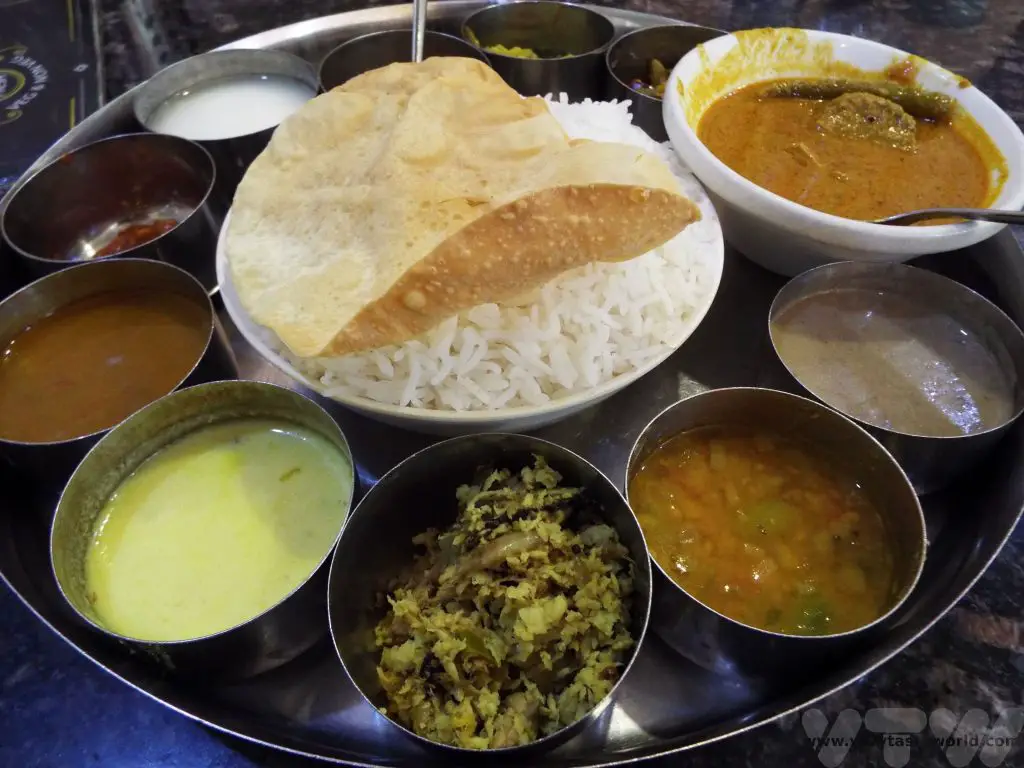
If you’re in South India many restaurants won’t have a knife or fork, but there are usually spoons available. If you’re eating with your fingers, make sure you wash your hands first. Every restaurant has a hand-washing area.

Sometimes the South Indian thali will be served on a banana leaf which is a more traditional approach – in a restaurant the waiters will arrive at each table with a vessel and will spoon the various curries onto the leaf. They will return and return – just nod to request another dollop of something delicious.
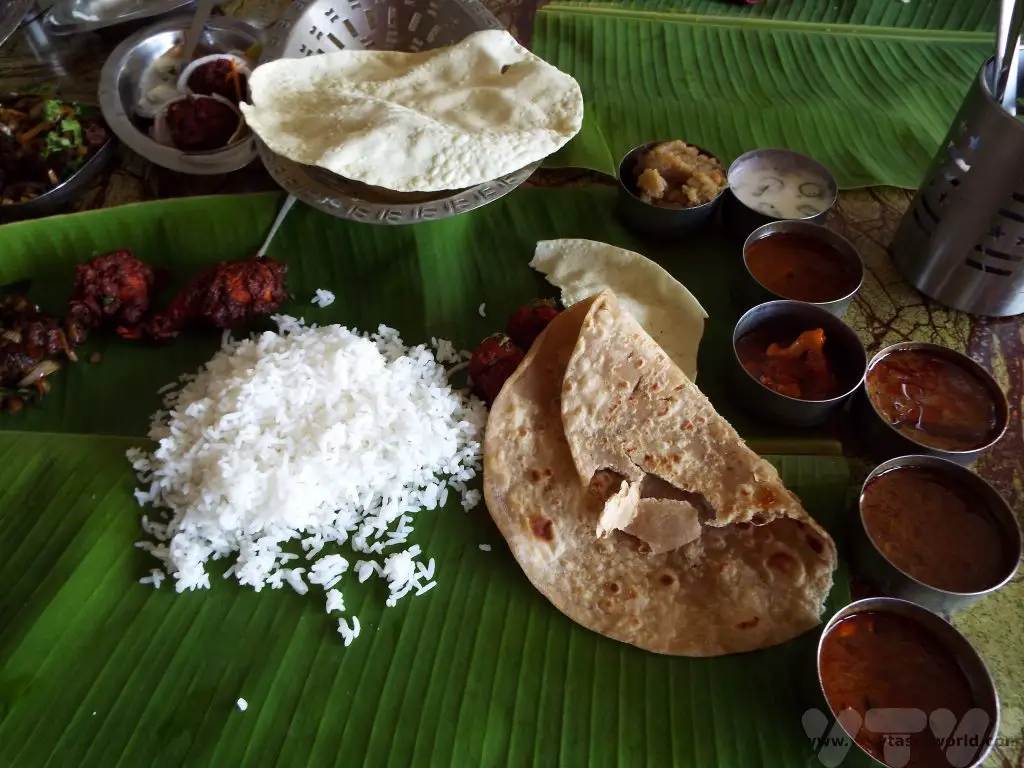
How To Eat South Indian Thali
Separate a portion of rice and pour the sauce from the dish or place some of the vegetables onto it. Mix it in. Then scoop up with the fingers of your right hand, pop it into your mouth and savour.
There is an order to eating the dishes of the thali, although no one will criticise you if you don’t follow it.
You should start with meat (if you are eating non-veg) and vegetables – both sauced and dry form.
Sambar, a mild lentil and vegetable sauce, comes next. It’s a staple throughout the region, often found at breakfast too – and eaten with idly (a savoury rice cake) or vada (like a savoury doughnut).
Rasam is a thin sauce, almost like a soup, made with tamarind to give a sour note, but spiced up with chilli or black pepper. It is always the last of the sauces to be eaten and it too can be mixed with the rice.
Yoghurt (also known as curd) rounds off the savoury part of the meal. It cools the palette in preparation for the dessert (if there is one).
There is often a sweet dish in one of the bowls – maybe something like rice with jaggery or sweet vermicelli in a milk-based sauce. If the dessert is liquid based, it’s okay to drink it directly from the container. Sometimes you may be given a piece of fruit. And the fruit, locally grown of course, is delicious.
We found that whenever we ate in restaurants the locals were very happy to see us. They were also quite keen to see how we coped with eating using our hands (a little bit messy, to be honest) but they were also happy to guide us about the etiquette. There were a number of occasions when we weren’t really sure in which order to eat the – absolutely delicious – dishes, and were on-hand to offer some friendly guidance, particularly when it came to accidentally eating the sweet dish before the savouries had been guzzled with relish!
Related Posts You May Enjoy

